Forums
- Forums
- Axis And Allies Forum
- General Discussion
- Aviation News
Aviation News
Post a reply
- Go to Previous topic
- Go to Next topic
- Go to Welcome
- Go to Introduce Yourself
- Go to General Discussion
- Go to Screenshots, Images and Videos
- Go to Off topic
- Go to Works in Progress
- Go to Skinning Tips / Tutorials
- Go to Skin Requests
- Go to IJAAF Library
- Go to Luftwaffe Library
- Go to RAF Library
- Go to USAAF / USN Library
- Go to Misc Library
- Go to The Ops Room
- Go to Made in Germany
- Go to Campaigns and Missions
- Go to Works in Progress
- Go to Juri's Air-Raid Shelter
- Go to Campaigns and Missions
- Go to Works in Progress
- Go to Skinpacks
- Go to External Projects Discussion
- Go to Books & Resources
-
11 months ago
 Main AdminA U.S. Air Force F-16C Fighting Falcon, assigned to the 77th Expeditionary Fighter Squadron, Shaw Air Force Base, S.C., prepares to taxi before its first flight during a temporary deployment at Kadena Air Base, Japan, Oct. 9, 2024. The transition to more modern aircraft at Kadena exemplifies the U.S. Air Force’s continued commitment to enhancing posture and building on the strong foundation of the U.S.-Japan alliance. (U.S. Air Force photo by Airman 1st Class Catherine Daniel)
Main AdminA U.S. Air Force F-16C Fighting Falcon, assigned to the 77th Expeditionary Fighter Squadron, Shaw Air Force Base, S.C., prepares to taxi before its first flight during a temporary deployment at Kadena Air Base, Japan, Oct. 9, 2024. The transition to more modern aircraft at Kadena exemplifies the U.S. Air Force’s continued commitment to enhancing posture and building on the strong foundation of the U.S.-Japan alliance. (U.S. Air Force photo by Airman 1st Class Catherine Daniel)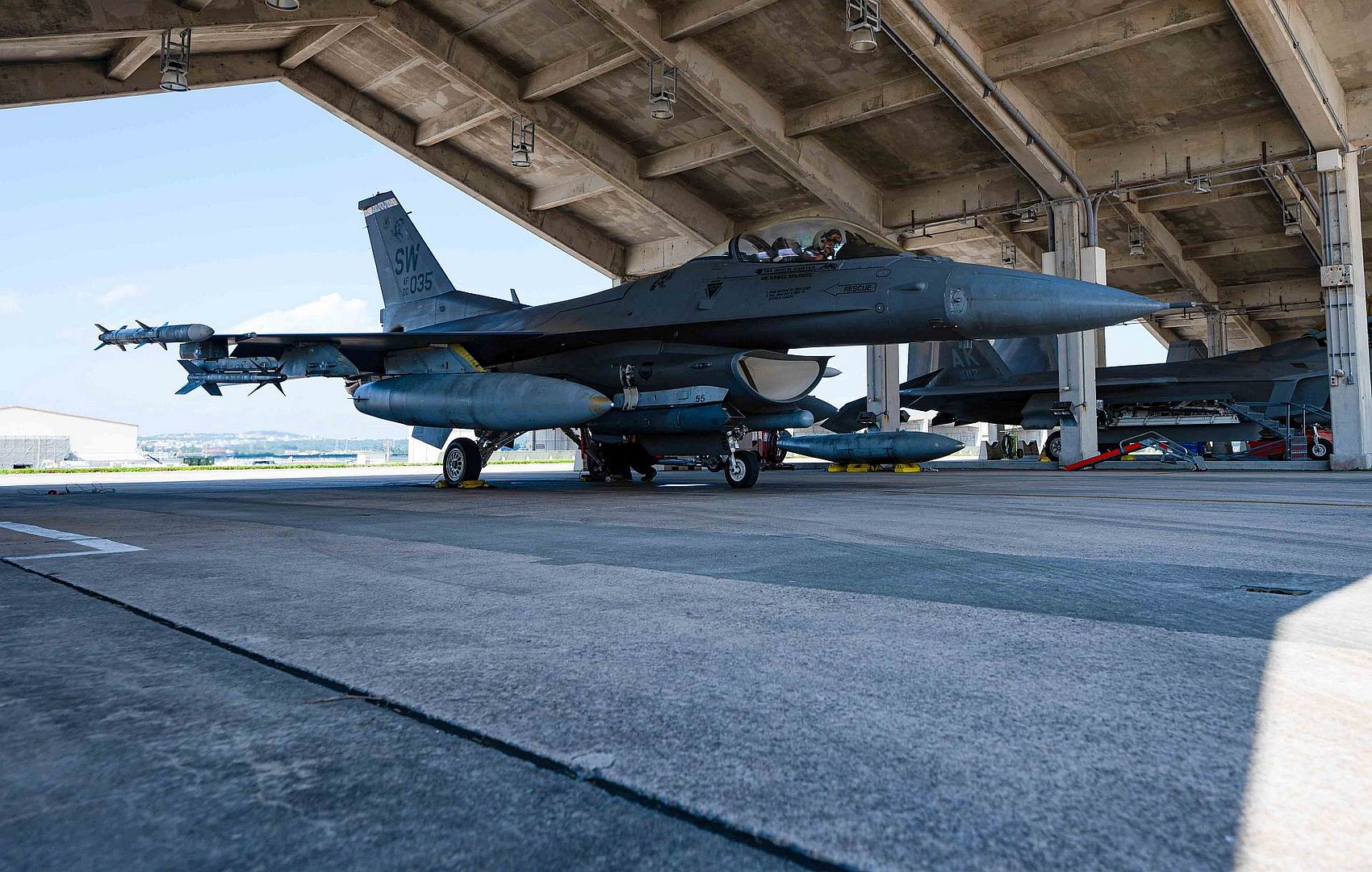
U.S. Air Force KC-135 Stratotanker aircraft assigned to the 185th Air Refueling Wing, Iowa Air National Guard on the flight line in Sioux City, Iowa October 10, 2024.
U.S. Air National Guard photo Senior Master Sgt. Vincent De Groot
A group of U.S. Air Force F-16 fighter jets from the South Dakota Air National Guard’s 114th Fighter Wing off the wing of a U.S. Air Force KC-135 from the Iowa Air National Guard’s 185th Air Refueling Wing, October 8, 2024.
U.S. Air National Guard photo Senior Master Sgt. Vincent De Groot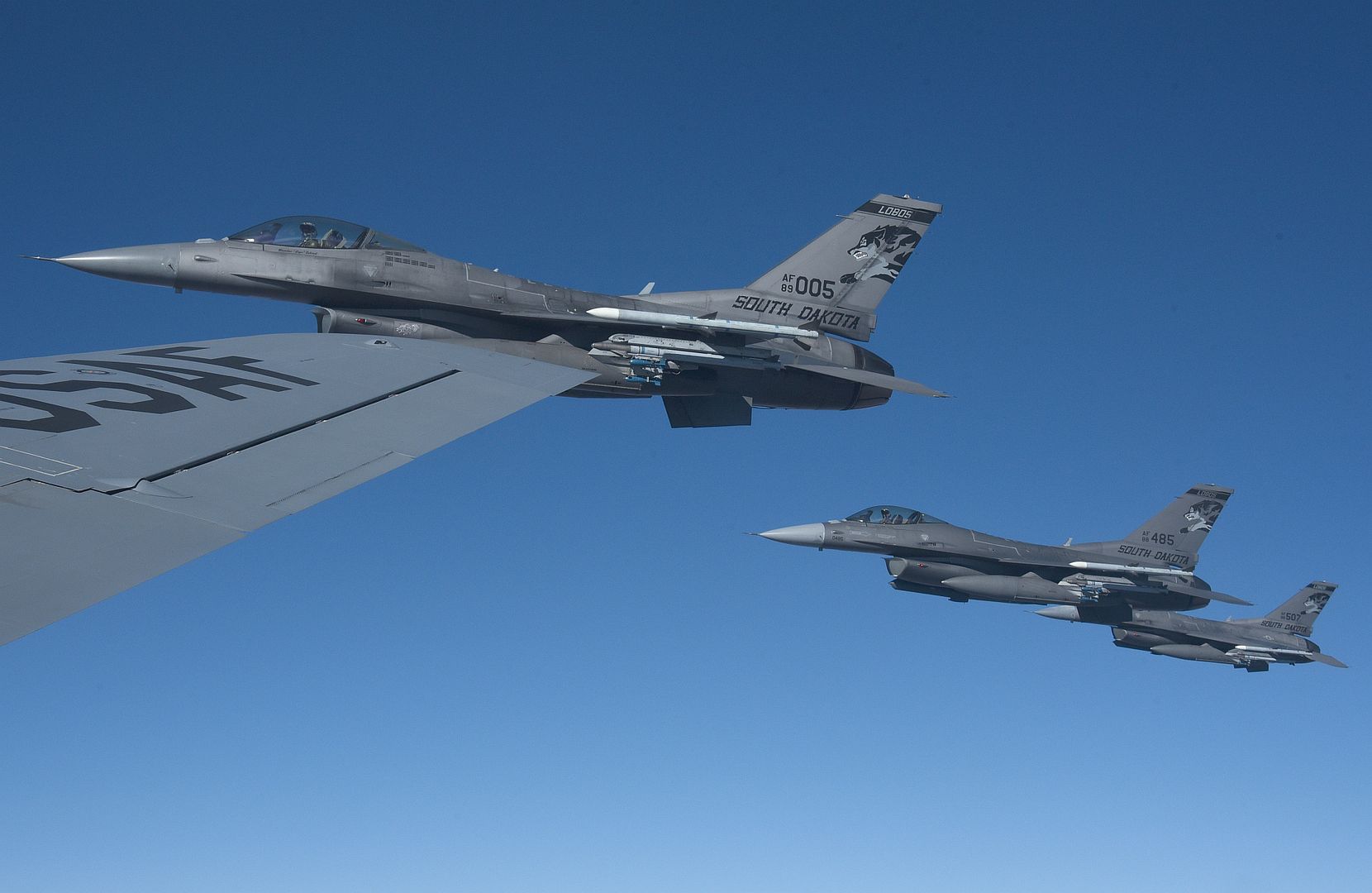
ATLANTIC OCEAN (Oct. 8, 2024) An MH-60R Sea Hawk helicopter, attached to the “Proud Warriors” of Helicopter Maritime Strike Squadron (HSM) 72, takes off from the flight deck of the the Nimitz-class aircraft carrier USS Harry S. Truman (CVN 75), Oct. 8. USS Harry S. Truman, the flagship of the Harry S. Truman Carrier Strike Group (HSTCSG), is on a scheduled deployment in the U.S. Naval Forces Europe area of responsibility. (U.S. Navy Photo by Mass Communication Specialist 3rd Class Logan Nystrand)_72_takes_off_from_the_flight_deck_of_the_the_Nimitz-class_aircraft_carrier_USS_Harry_S._Truman.jpg?width=1920&height=1080&fit=bounds)
U.S. Air Force Airmen assigned to the 4th Maintenance Group aircraft maintenance qualification program (AMQP) shop conduct an engine run on an F-15E Strike Eagle at Seymour Johnson Air Force Base, North Carolina, Sept. 27, 2024. The AMQP shop trains 4th Fighter Wing maintainers on F-15E critical maintenance tasks. (U.S. Air Force photos by Airman 1st Class Leighton Lucero)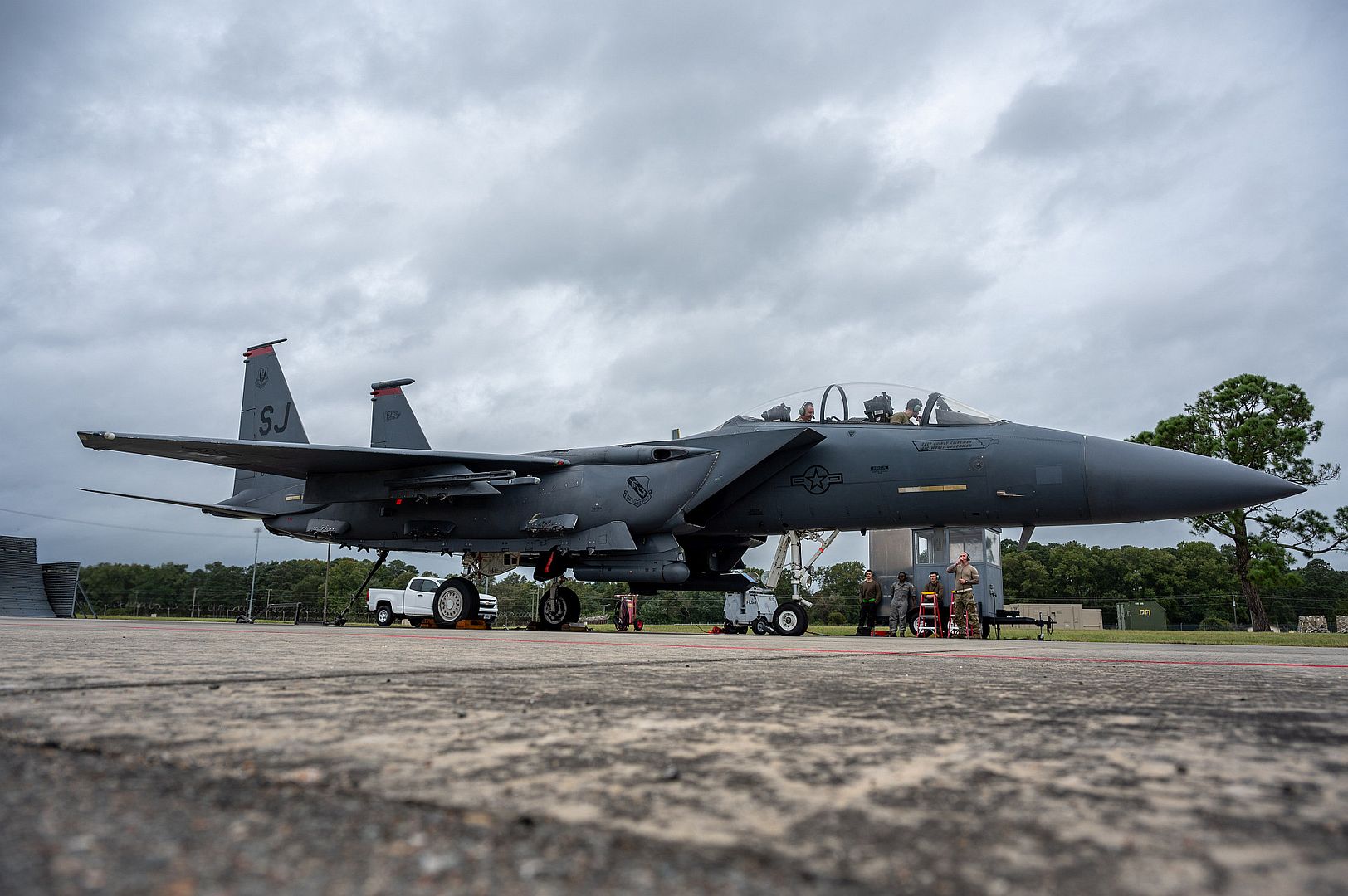

October 10, 2024
Lockheed Martin Skunk Works® partnered with the U.S. Air Force Test Pilot School to conduct full-scale, live flight tests of the Smart Adaptive Flight Control Environment (SAFE) system on a large-scale aircraft. SAFE is an adaptive technology that makes real-time adjustments to flight control behavior.
What does this mean for the future of flight tests? The answer is simple: more efficient and affordable development and testing. Instead of having to make adjustments or improvements in between flight tests while a jet is on the ground, SAFE demonstrates real-time corrections to the baseline system in flight. This allows our team to continue iterating and testing at a rapid pace, resulting in substantial time and cost savings.
Strategic Perspectives
“The SAFE system has the potential to revolutionize flight tests, operational aircraft performance and safety. Our work advancing state of the art adaptive technologies continues to evolve and deliver more flexible, capable and collaborative capabilities across current and future platforms,” said Jeff Hakes, director, Revolutionary Air Vehicles, Emerging Concepts and Technologies, Lockheed Martin Skunk Works.
The series of test flights were conducted on the X-62A Variable In-flight Simulation Test Aircraft (VISTA). VISTA is an experimental flight test platform that allows us to correlate the development and testing of cutting-edge control algorithms with both crewed and uncrewed vehicle designs.
Our SAFE system links with parameter identification schemes and Artificial Intelligence and Machine Learning methodologies to enable a “learn-on-the-fly" capability.
The next iteration of the system includes advanced software to quickly address flight control errors through online learning.
This system is a true “bolt-on” capability, meaning it can be applied to any aircraft’s control laws, including current and future crewed and autonomous platforms. We’ve been refining our approach to this advanced software for years and have now demonstrated that SAFE can deliver on its promise on a full-scale aircraft.
-
11 months ago
 Main AdminA U.S. Air Force Airman from the 7th Airlift Squadron refuel an F-22 Raptor on the flightline of Marine Corps Base Hawaii during exercise Joint Pacific Multinational Readiness Center 25-01, Oct. 9 2024. The Joint Pacific Multinational Readiness Center (JPMRC) is the Army’s newest Combat Training Center (CTC) and generates readiness in the environments and conditions where our forces are most likely to operate in. JPMRC 25-01 includes training participants from across the U.S. Joint Force, and multinational Allies and partners. (U.S. Air Force photo by Airman 1st Class Aden Brown)
Main AdminA U.S. Air Force Airman from the 7th Airlift Squadron refuel an F-22 Raptor on the flightline of Marine Corps Base Hawaii during exercise Joint Pacific Multinational Readiness Center 25-01, Oct. 9 2024. The Joint Pacific Multinational Readiness Center (JPMRC) is the Army’s newest Combat Training Center (CTC) and generates readiness in the environments and conditions where our forces are most likely to operate in. JPMRC 25-01 includes training participants from across the U.S. Joint Force, and multinational Allies and partners. (U.S. Air Force photo by Airman 1st Class Aden Brown)
PACIFIC OCEAN (Oct. 9, 2024) An MV-22 Osprey, attached to the “Titans” of Fleet Logistics Multi-Mission Squadron (VRM) 30, lifts off from the flight deck of the Nimitz-class aircraft carrier USS Theodore Roosevelt (CVN 71), Oct. 9, 2024. Theodore Roosevelt, flagship of Carrier Strike Group 9, is underway conducting routine operations in the U.S. 3rd Fleet area of operations. An integral part of U.S. Pacific Fleet, U.S. 3rd Fleet operates naval forces in the Indo-Pacific and provides the realistic, relevant training necessary to execute the U.S. Navy’s role across the full spectrum of military operations – from combat operations to humanitarian assistance and disaster relief. U.S. 3rd Fleet works together with our allies and partners to advance freedom of navigation, the rule of law, and other principles that underpin security for the Indo-Pacific region. (U.S. Navy photo by Mass Communication Specialist 3rd Class Theodore Minkala)_30_lifts_off_from_the_flight_deck_of_the_Nimitz-class_aircraft_carrier_USS_Theodore_Roosevelt.jpg?width=1920&height=1080&fit=bounds)
U.S. Air Force Airmen with the 129th Rescue Wing, California Air National Guard mobilizes for an overwater rescue operation at Moffett Air National Guard Base, Calif., Oct. 9, 2024. (U.S. Air Force photo by Master Sgt. Ray Aquino)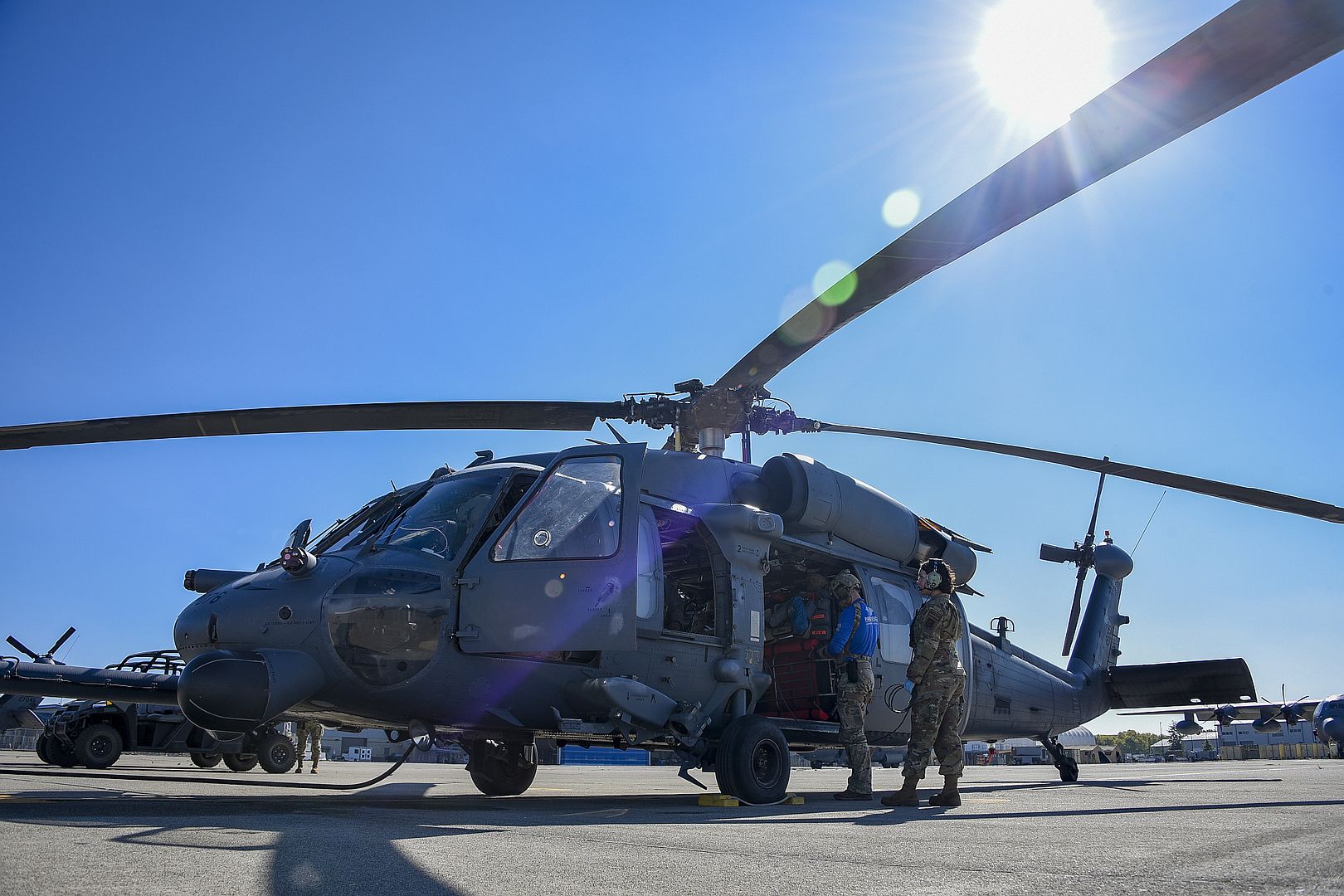
An F-15C Eagle assigned to the 144th Fighter Wing passes the control tower as it takes off from Nellis Air Force Base, Nevada, Sept. 10 2024. While on a temporary duty assignment from Sept. 3-19 2024, the 144th Fighter Wing participated in blue air support with the Weapons School’s F-15 Eagle weapons instructor course to add complexity to training missions and strengthen camaraderie within the Eagle community. (Air National Guard photo by Maj. Jason Sanchez)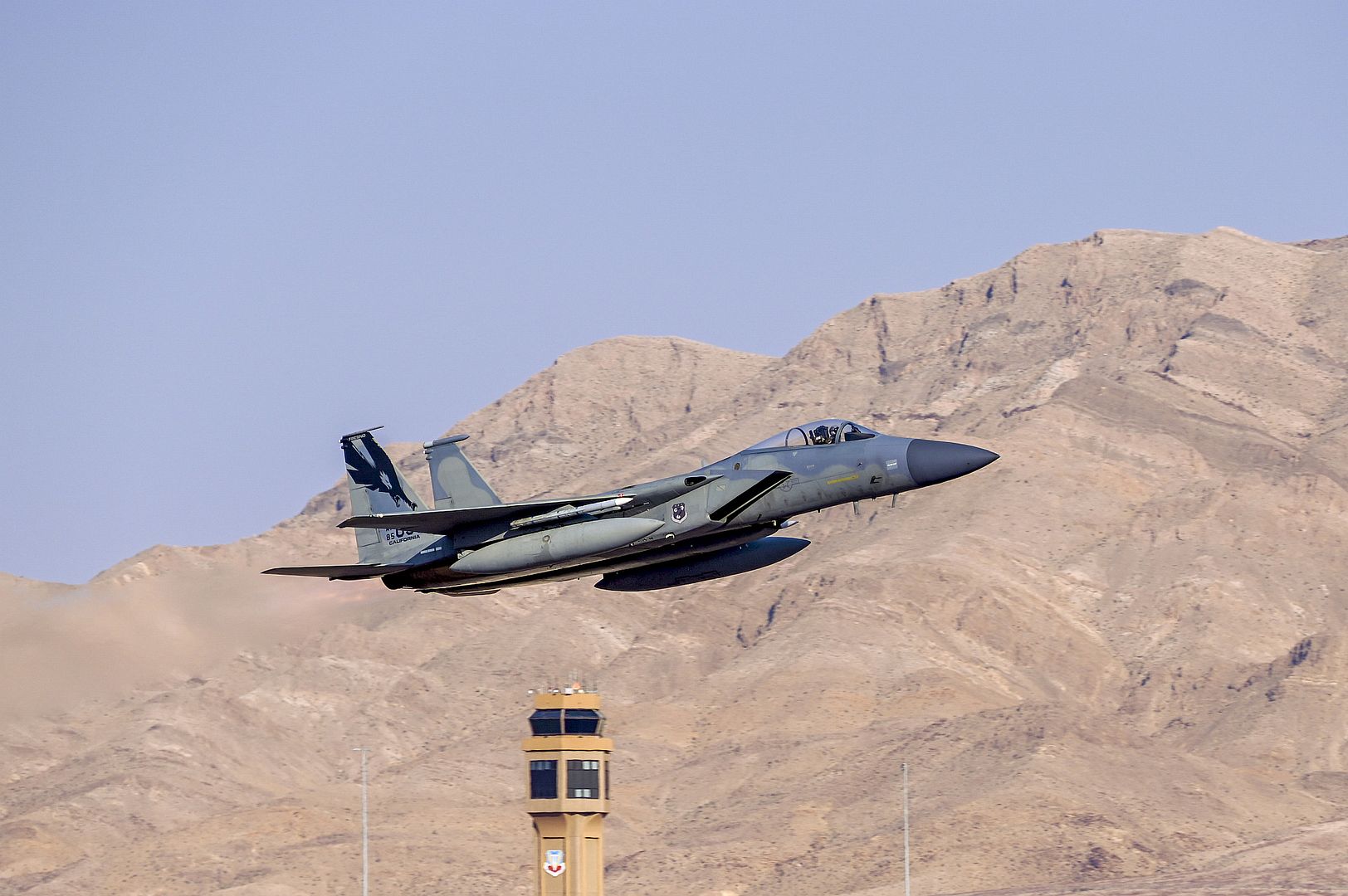
A Boeing 747-400 HD aircraft lands at Hurlburt Field, Florida, Oct. 7, 2024. The aircraft carried a group of U.S. Airmen returning from deployment. (U.S. Air Force photo by Airman 1st Class Raul Mercado)
An F/A-18E Super Hornet attached to the "Fist of the Fleet" of Strike Fighter Squadron (VFA) 25 launches from the flight deck aboard the Nimitz-class aircraft carrier USS Theodore Roosevelt (CVN 71) in the Pacific Ocean, Oct. 8, 2024. Theodore Roosevelt, flagship of Carrier Strike Group 9, is underway conducting routine operations in the U.S. 3rd Fleet area of operations. An integral part of U.S. Pacific Fleet, U.S. 3rd Fleet operates naval forces in the Indo-Pacific and provides the realistic, relevant training necessary to execute the U.S. Navy's role across the full spectrum of military operations - from combat operations to humanitarian assistance and disaster relief. U.S. 3rd Fleet works together with our allies and partners to advance freedom of navigation, the rule of law, and other principles that underpin security for the Indo-Pacific region. (U.S. Navy photo by Mass Communication Specialist Seaman Ryan Holloway)_25_launches_from_the_flight_deck_aboard_the_Nimitz-class_aircraft_carrier_USS_Theodore_Roosevelt.jpg?width=1920&height=1080&fit=bounds)
KENNEDY SPACE CENTER, Fla, Oct.10, 2024 — The Boeing [NYSE: BA]-built X-37B will soon perform a series of advanced aerobraking maneuvers, taking the dynamic spaceplane from a Highly Elliptical Orbit (HEO), where it’s been operating since December 2023, and lowering its altitude using minimal fuel.
This will be the first time Boeing, the United States Space Force (USSF) and the X-37B attempt to accomplish this novel demonstration.
“Space is a vast and unforgiving environment where testing technologies is critical to the success of future endeavors,” said Michelle Parker, vice president of Boeing’s Space Mission Systems. “There is no other space platform as capable, flexible and maneuverable as the X-37B, and its next demonstration will be another proof point that this test vehicle sets the pace of innovation.”
During aerobraking, the X-37B will use the drag of Earth’s atmosphere to slow it down, reducing the vehicle’s energy and changing the orbit while expending minimal fuel. The Service Module disposal will be conducted in accordance with established standards for space debris mitigation, and the X-37B’s orbit change will occur in a safe and responsible manner. Once aerobraking is complete, the X-37B will resume its test and experimentation objectives.
“This first-of-a kind maneuver from the X-37B is an incredibly important milestone for the United States Space Force as we seek to expand our aptitude and ability to perform in this challenging domain,” said Gen. Chance Saltzman, Chief of Space Operations.
The program will leverage six successful missions of safely operating the X-37B around Earth during this next demonstration. Boeing brings decades of lessons learned from operating other spacecraft in a variety of orbits, from the Apollo missions, the Space Shuttle Program, and hundreds of government and commercial satellites.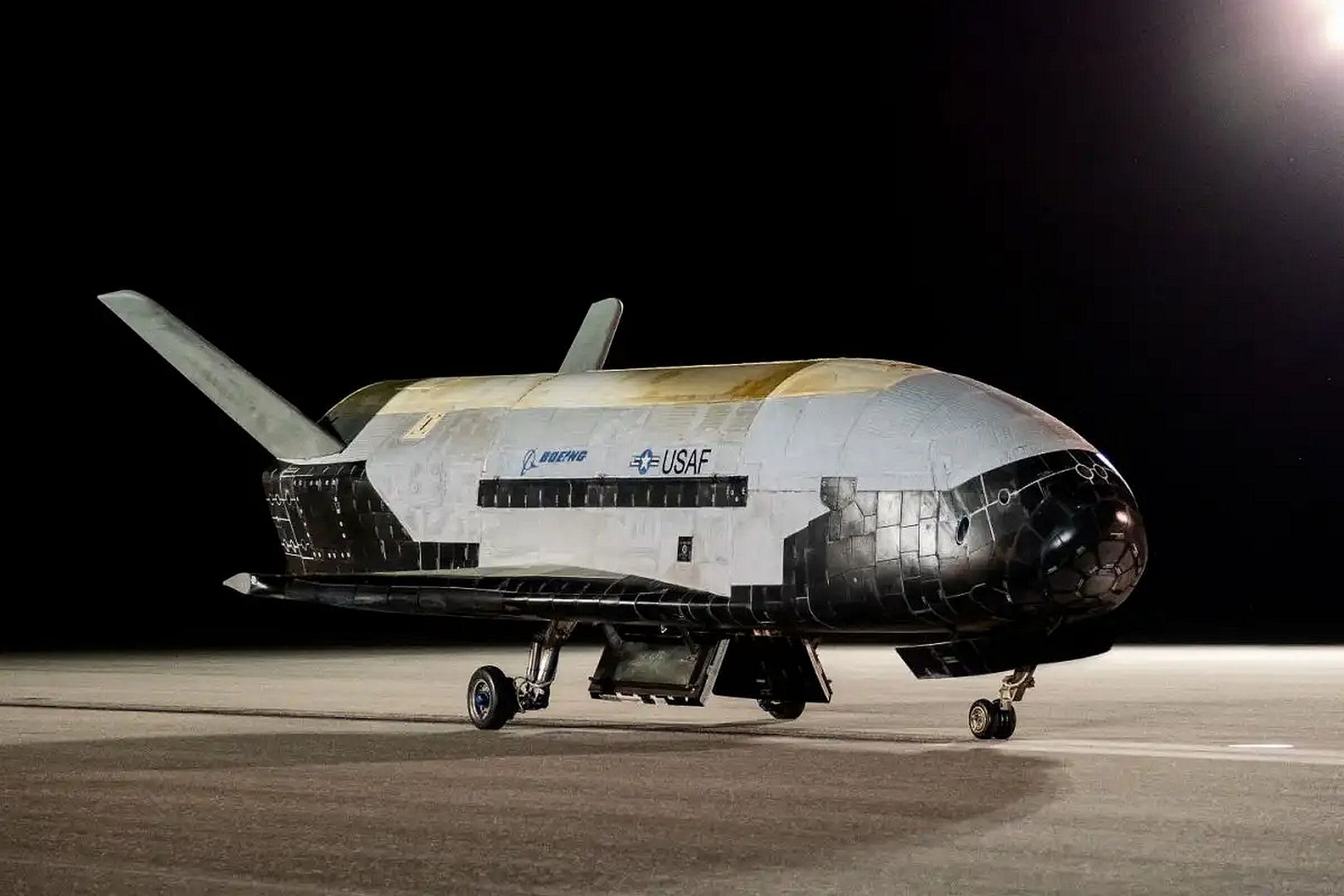
Today, the UK became the first nation to conduct a full transit of NATO’s eastern border, from its southern most point in Greece, to the most northerly point in Finland.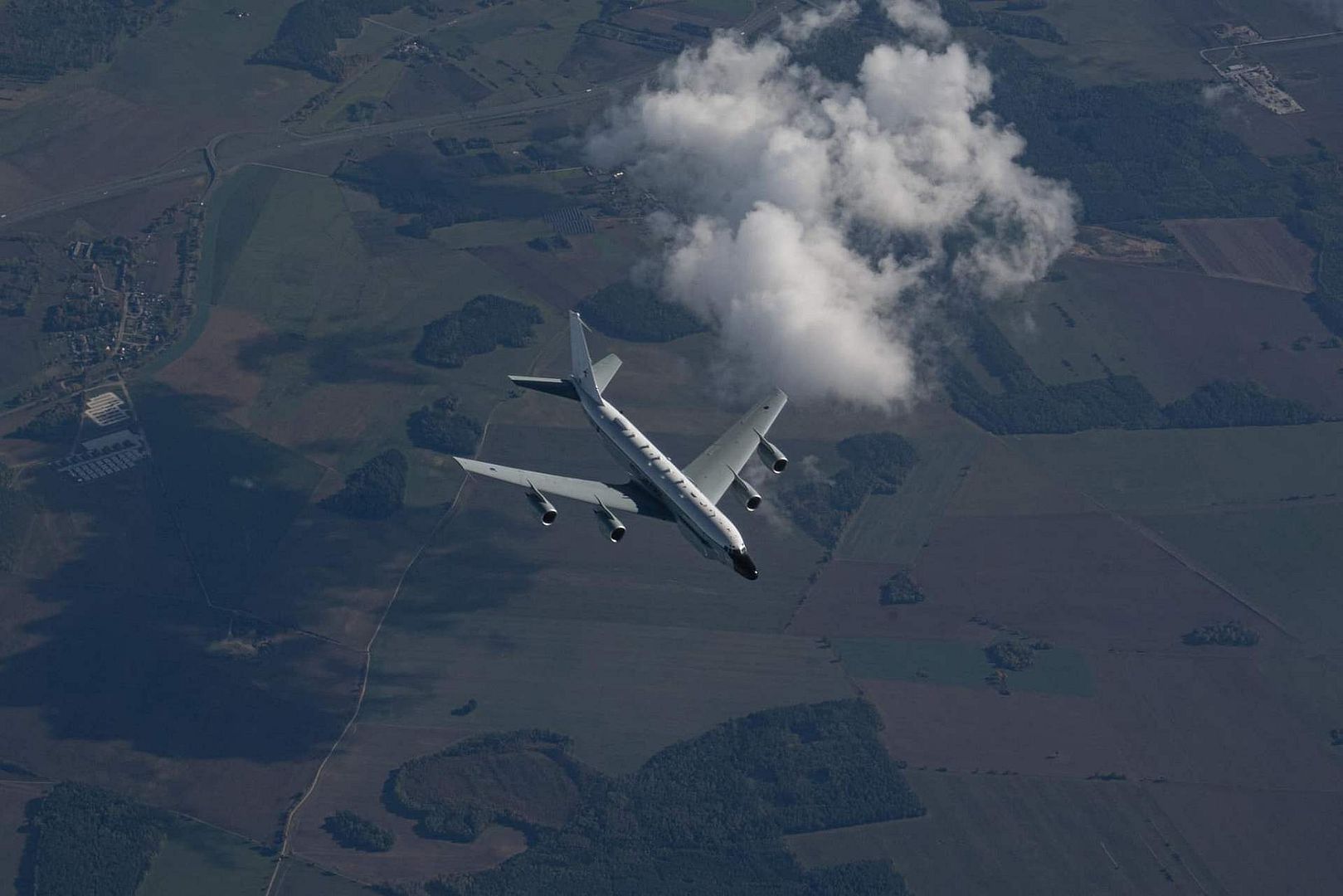
The RAF Rivet Joint completed the flight with support from NATO partners including the US, Sweden and Finland.
This is a landmark moment. While the Rivet Joint conducts routine transits along the borders of individual NATO countries, this is the first complete transit of NATO’s eastern border. The UK’s commitment to NATO is unshakeable.
(Photos courtesy of NATO)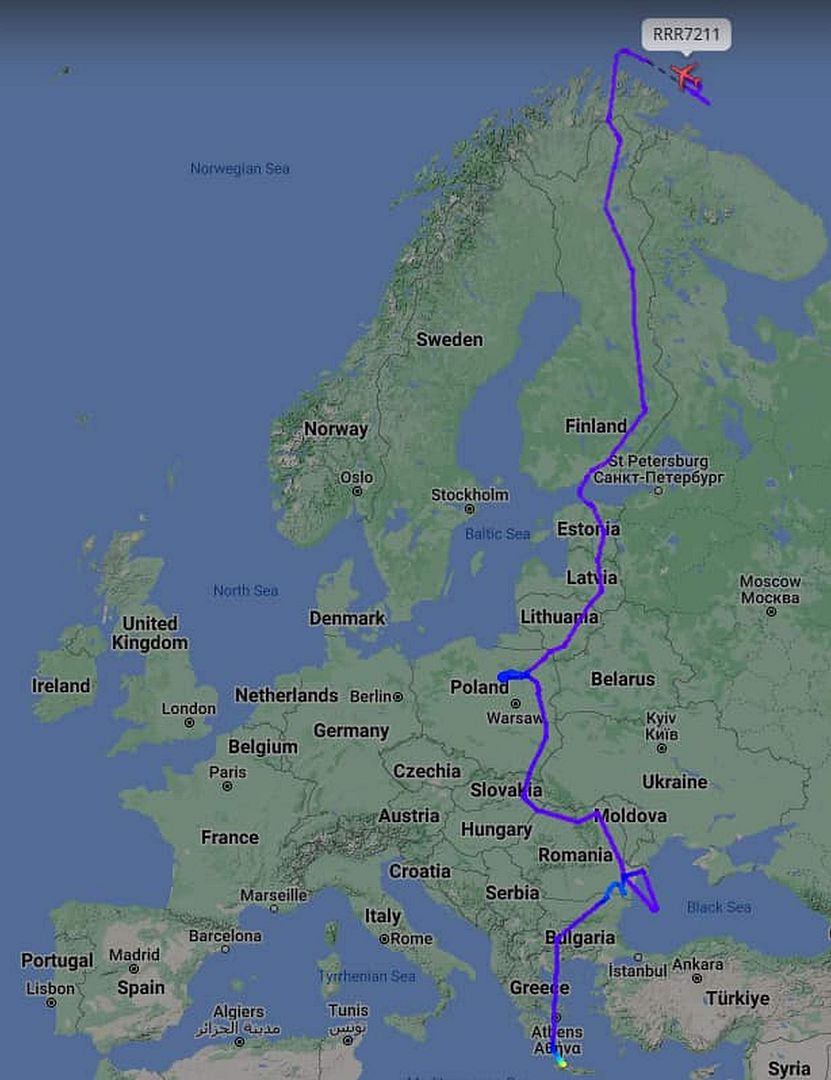
From October 14, 13 countries, including the Netherlands, will take part in the NATO -exercise Steadfast Noon. Steadfast Noon is an annual recurring routine exercise practicing aspects of nuclear deterrence.
Through our participation we make an important contribution to the federal deterrence and thereby to the safety of NATO and the Netherlands.
(Photo courtesy of the Koninklijke Luchtmacht)
-
10 months ago
 Main AdminA United Airlines 777-300ER performs aerial maneuvers at the EXPO on the Marina Green during San Francisco Fleet Week 2024 in San Francisco, Oct. 13, 2024. SFFW, now in its 43rd iteration, is a time-honored sea service celebration that allows citizens of the Bay Area to witness today’s maritime capabilities firsthand. Nearly 2,500 Sailors, Marines, and Coast Guardsmen will showcase their capabilities and equipment, participate in various community service events, and enjoy the hospitality of the Bay Area during the event. (U.S. Marine Corps photo by Cpl. Bruin Largent)
Main AdminA United Airlines 777-300ER performs aerial maneuvers at the EXPO on the Marina Green during San Francisco Fleet Week 2024 in San Francisco, Oct. 13, 2024. SFFW, now in its 43rd iteration, is a time-honored sea service celebration that allows citizens of the Bay Area to witness today’s maritime capabilities firsthand. Nearly 2,500 Sailors, Marines, and Coast Guardsmen will showcase their capabilities and equipment, participate in various community service events, and enjoy the hospitality of the Bay Area during the event. (U.S. Marine Corps photo by Cpl. Bruin Largent)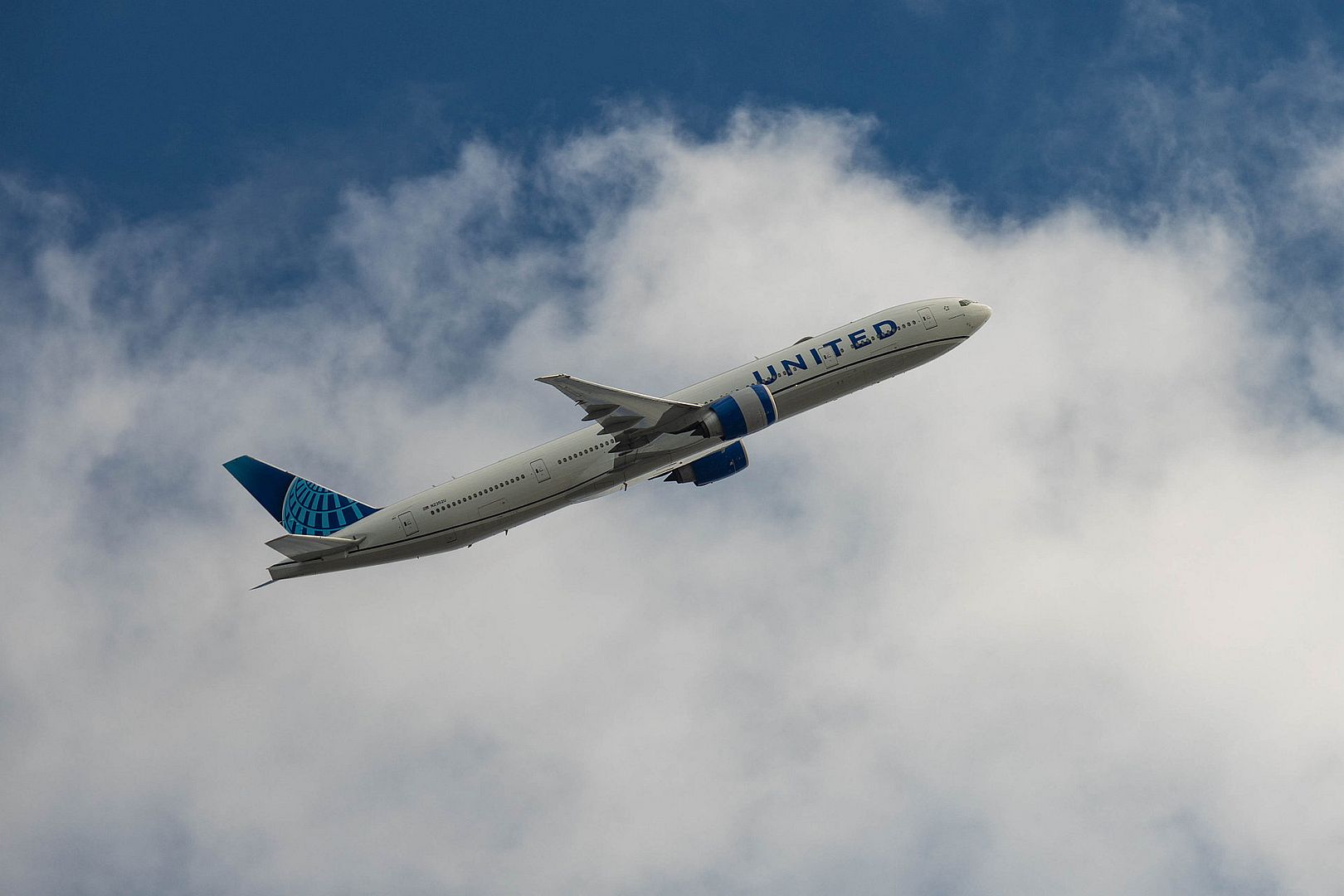
U.S. Marine Corps Lt. Col. Zachary Hartnett, from Illinois and the commanding officer of Marine Fighter Attack Squadron (VMFA) 533, taxis an F-35B Lightning II jet at Marine Corps Air Station Beaufort, South Carolina, Oct. 11, 2024. VMFA-533 received their first F-35B Lightning II jet, marking their transition from the F/A-18 Hornet to the F-35B. (U.S. Marine Corps photo by Lance Cpl. Nathan Saucier)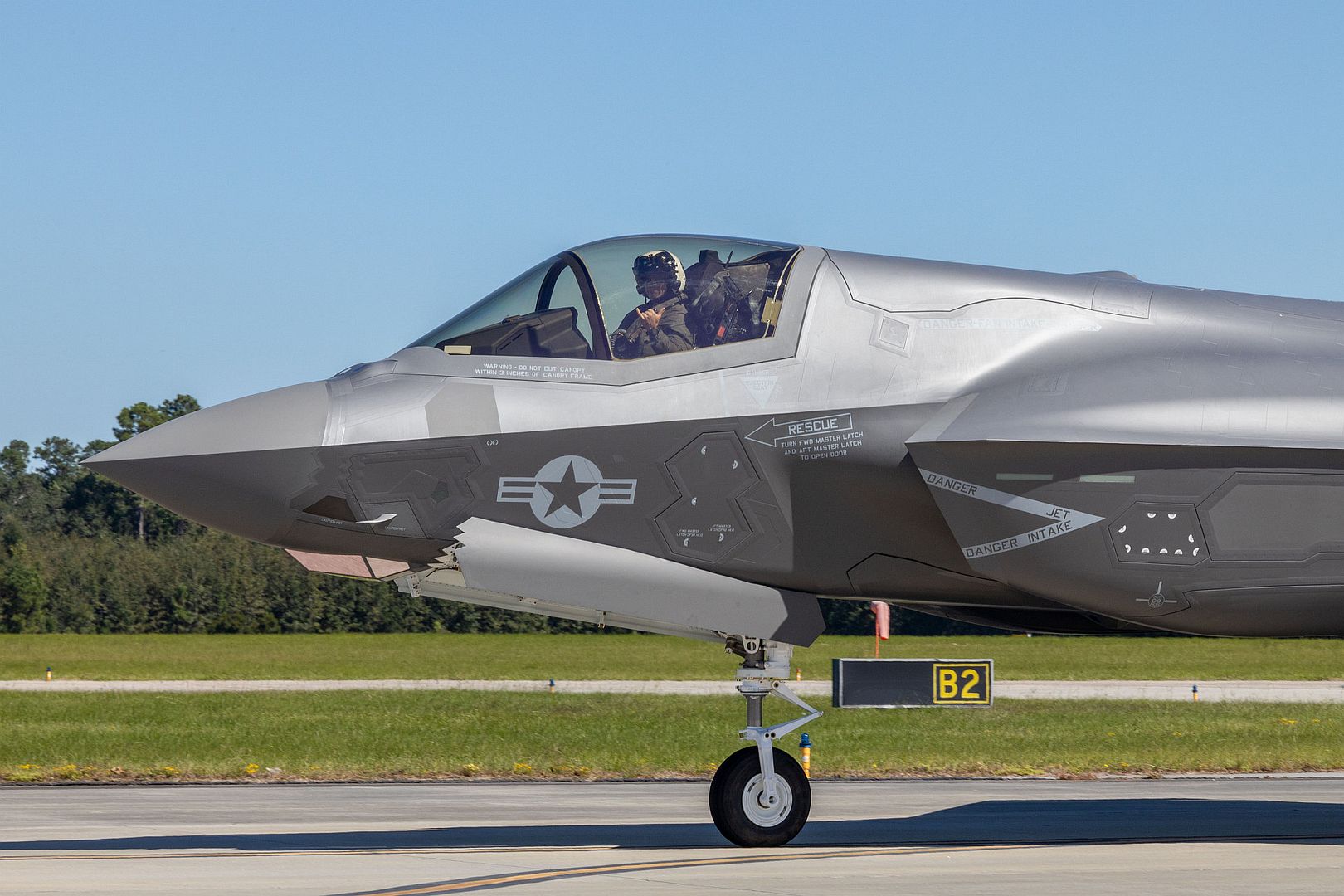
An F/A-18 Super Hornet attached to the U.S. Navy Flight Demonstration Squadron, the Blue Angels, performs aerobatic maneuvers over San Francisco Bay during San Francisco Fleet Week 2024 in San Francisco Oct. 11, 2024. SFFW, now in its 43rd iteration, is a time-honored sea service celebration that allows citizens of the Bay Area to witness today’s maritime capabilities firsthand. Nearly 2,500 Sailors, Marines, and Coast Guardsmen will showcase their capabilities and equipment, participate in various community service events, and enjoy the hospitality of the Bay Area during the event. (U.S. Navy photo by Mass Communication Specialist 2nd Class Timothy Dimal)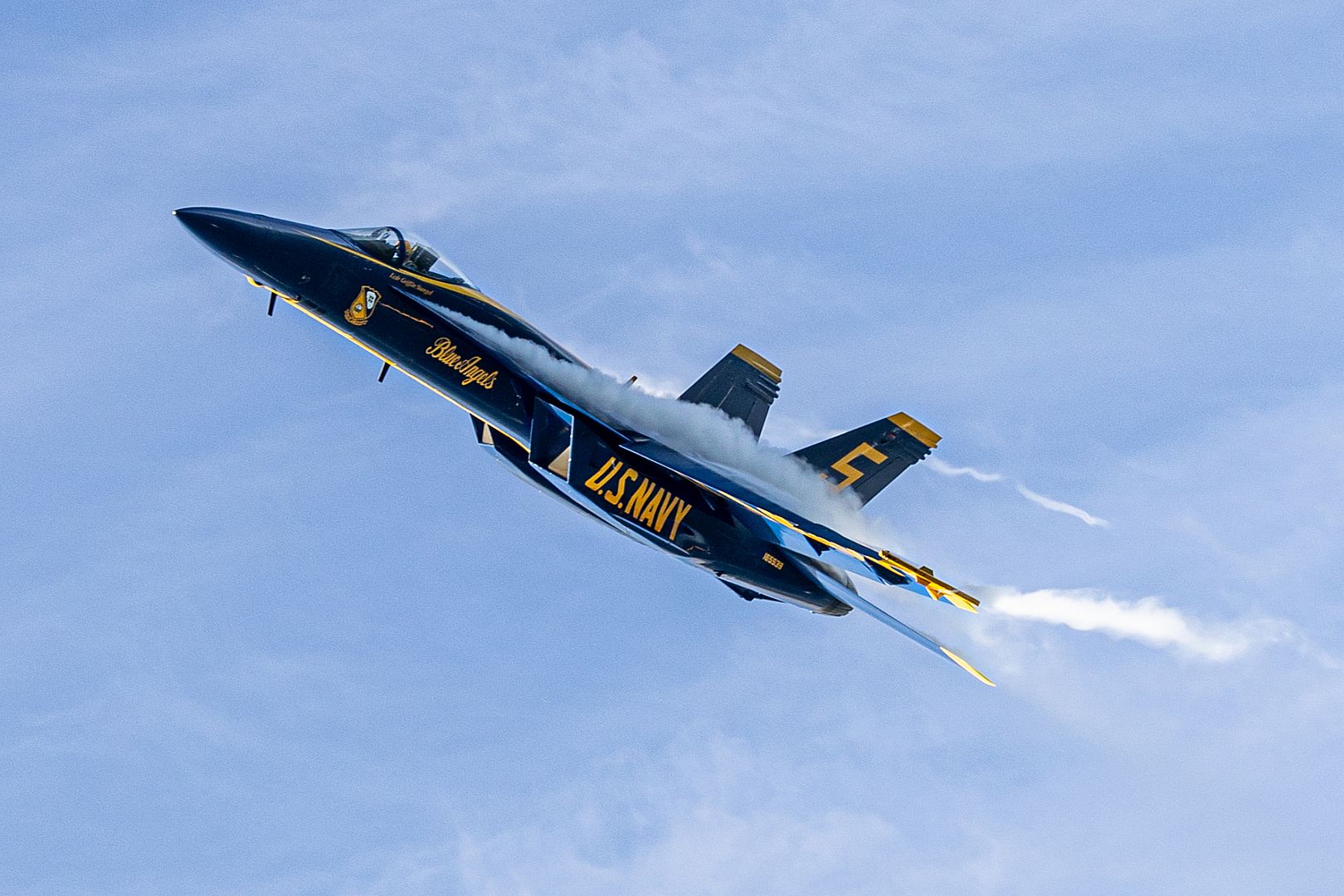
ATLANTIC OCEAN (Oct. 12, 2024) An MH-60R Sea Hawk helicopter, attached to the “Proud Warriors” of Helicopter Maritime Strike Squadron (HSM) 72, takes off from the flight deck of the Nimitz-class aircraft carrier USS Harry S. Truman (CVN 75), Oct. 12. USS Harry S. Truman, the flagship of the Harry S. Truman Carrier Strike Group (HSTCSG), is on a scheduled deployment in the U.S. 6th Fleet area of operations supporting U.S. Naval Forces Europe-Africa to defend U.S., allied and partner interests. (U.S. Navy Photo by Mass Communication Specialist 3rd Class Logan Nystrand)_72_takes_off_from_the_flight_deck_of_the_Nimitz-class_aircraft_carrier_USS_Harry_S._Truman.jpg?width=1920&height=1080&fit=bounds)
ATLANTIC OCEAN (Oct. 12, 2024) An F/A-18E Super Hornet, attached to the “Pukin' Dogs” of Strike Fighter Squadron (VFA) 143, prepares to take off from the flight deck of the Nimitz-class aircraft carrier USS Harry S. Truman (CVN 75), Oct. 12. USS Harry S. Truman, the flagship of the Harry S. Truman Carrier Strike Group (HSTCSG), is on a scheduled deployment in the U.S. 6th Fleet area of operations supporting U.S. Naval Forces Europe-Africa to defend U.S., allied and partner interests. (U.S. Navy Photo by Mass Communication Specialist 3rd Class Logan Nystrand)_143_prepares_to_take_off_from_the_flight_deck_of_the_Nimitz-class_aircraft_carrier_USS_Harry_S._Truman.jpg?width=1920&height=1080&fit=bounds)
ATLANTIC OCEAN (Oct. 12, 2024) An F/A-18F Super Hornet, attached to the “Red Rippers” of Strike Fighter Squadron (VFA) 11, prepares to take off from the flight deck of the Nimitz-class aircraft carrier USS Harry S. Truman (CVN 75), Oct. 12. USS Harry S. Truman, the flagship of the Harry S. Truman Carrier Strike Group (HSTCSG), is on a scheduled deployment in the U.S. 6th Fleet area of operations supporting U.S. Naval Forces Europe-Africa to defend U.S., allied and partner interests. (U.S. Navy Photo by Mass Communication Specialist 3rd Class Logan Nystrand)_11_prepares_to_take_off_from_the_flight_deck_of_the_Nimitz-class_aircraft_carrier_USS_Harry_S._Truman.jpg?width=1920&height=1080&fit=bounds)
ATLANTIC OCEAN (Oct. 12, 2024) F/A-18F Super Hornet, attached to the “Red Rippers” of Strike Fighter Squadron (VFA) 11, takes off from the flight deck of the Nimitz-class aircraft carrier USS Harry S. Truman (CVN 75), Oct. 12. USS Harry S. Truman, the flagship of the Harry S. Truman Carrier Strike Group (HSTCSG), is on a scheduled deployment in the U.S. 6th Fleet area of operations supporting U.S. Naval Forces Europe-Africa to defend U.S., allied and partner interest. (U.S. Navy photo by Mass Communication Specialist 3rd Class Logan Nystrand)_11_takes_off_from_the_flight_deck_of_the_Nimitz-class_aircraft_carrier_USS_Harry_S._Truman.jpg?width=1920&height=1080&fit=bounds)
Leonardo has launched a new product, called ‘BriteStorm’, that will allow armed forces to operate deep within enemy territory, even when that territory is guarded by modern Integrated Air Defence Systems (IADS).
BriteStorm is able to perform ‘stand-in jamming’: an airborne electronic warfare capability, deployed ahead of the main force, to deliver high-powered interference against a wide spectrum of threats. By doing so, BriteStorm degrades the enemy’s IADS, supressing its ability to detect and lock onto other platforms, protecting friendly forces and enabling their mission.
The BriteStorm payload is designed to be installed on the widest possible range of UAVs and launched effects. It will equip each platform with an advanced array of digital deception techniques, deployable at long range.
The UK Royal Air Force's Rapid Capabilities Office (RCO) is working with Leonardo in relation to the capability and has purchased payloads to conduct trials. Successful flights with the RCO proving the capability have already taken place.
Developed at Leonardo’s electronic warfare research and manufacturing base in Luton, UK, BriteStorm builds on the Digital Radio Frequency Memory (DRFM) technology underpinning Leonardo’s in-service BriteCloud countermeasure, the only DRFM-based expendable on the market to have been demonstrated effective in live tests. In contrast to BriteCloud, which is designed to disrupt incoming missiles’ radar guidance systems, BriteStorm has been engineered to confuse and suppress ground-based surveillance radars, preventing the enemy from tracking and then engaging friendly forces.
BriteStorm works by using Leonardo’s mission-tested DRFM technology to detect and evaluate the electronic warfare threat environment and then choose the most relevant countermeasure technique. Depending on the situation, BriteStorm’s effects can range from barraging the enemy system with electronic noise to more sophisticated techniques such as creating dozens of realistic ‘ghost’ fighter jet signatures, confusing and misdirecting the enemy response.
BriteStorm is small, lightweight and platform-agnostic. A standard BriteStorm fit incorporates a platform-specific antenna, transmit-receive modules and Leonardo’s Miniature Technique Generator. It is simple to integrate, making BriteStorm an accessible route to establishing a powerful, attritable, stand-in jamming capability. The BriteStorm development team has drawn on Leonardo’s company-wide programme of digital transformation to create a powerful and sophisticated product, whilst ensuring the payload can be considered attritable.
In addition to the UK Ministry of Defence, Leonardo views the U.S. Department of Defense as a key potential customer for BriteStorm, with the payload able to deliver a capability advantage to operators in contested electronic warfare environments, while being rapidly reprogrammable to match the pace of the threat. BriteStorm has been designed to be readily exportable, with demonstration units already in the USA. Leonardo is expecting to see further interest in BriteStorm from customers in Europe, the Middle East and Asia Pacific.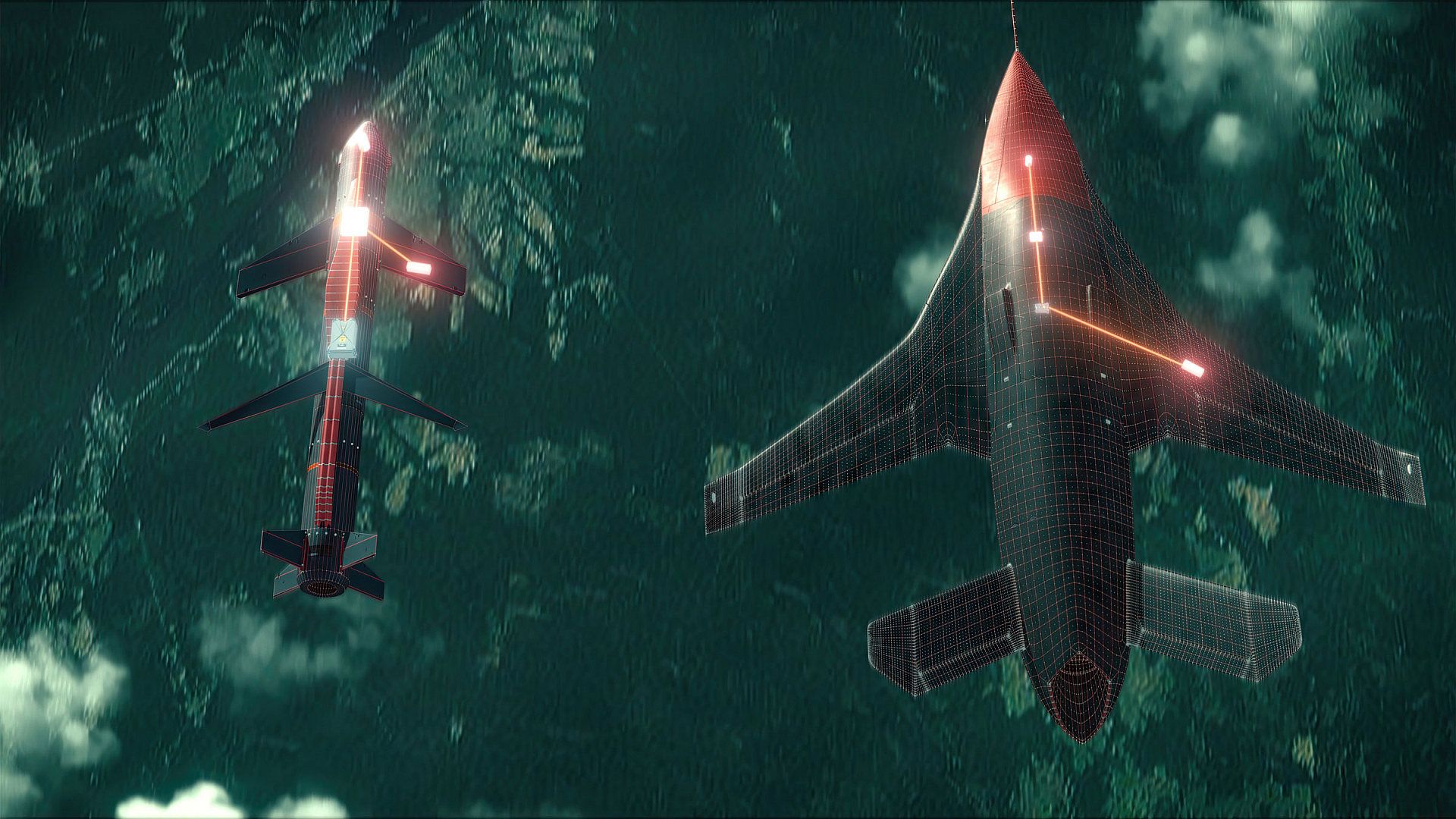
SAN DIEGO – 14 October 2024 – On Sept. 30, 2024, General Atomics Aeronautical Systems, Inc. (GA-ASI) completed a major milestone with the full-scale fatigue testing of an MQ-9B Remotely Piloted Aircraft (RPA). The team completed the “second lifetime” of fatigue testing, which is equivalent to 80,000 operating hours and represents an important step in validating the design of the airframe system. The testing is part of the aircraft certification to NATO standard STANAG 4671, where the aircraft will ultimately be tested through three lifetimes, thereby proving the 40,000-hour lifetime of the airframe.
The full-scale fatigue test simulates the aircraft’s design service through the application of repeated structural loading on the assembled airframe. The testing identifies any potential structural deficiencies ahead of fleet usage and assists in developing inspection and maintenance schedules for the airframe. The results of the test will be used as part of the documentation for certification and will form the basis for in-service inspections of structural components.
MQ-9B is GA-ASI’s most advanced RPA and includes the SkyGuardian® and SeaGuardian® models as well as the new Protector RG Mk1 that is currently being delivered to the United Kingdom Royal Air Force (RAF).
“Full-scale fatigue testing is an integral part of validating the airframe design and a key input for the certification of the airframe prior to entering service,” said Chris Dusseault, vice president of MQ-9B in Europe. “The completion of the fatigue test builds confidence for our MQ-9B customers that the SkyGuardian/SeaGuardian meets the stringent design rigor and is mature at Entry into Service.”
The testing is the validation of years of design and analysis efforts. This is the second of three lifetimes of testing for the airframe. Two of the lifetimes simulate the operation of an aircraft under normal conditions, and the third has intentional damage inflicted on the airframe’s critical components to demonstrate its resistance to operational damage that may occur over the lifetime of the air vehicle.
Testing was conducted from Jan. 31, 2024, through Sept. 30, 2024, at Wichita State University’s National Institute for Aviation Research in Wichita, Kansas. The airframe tested is a production airframe purpose-built to support the test campaign.
In addition to the RAF, contracts have been signed for MQ-9B with Belgium, Canada, Japan, Taiwan and the U.S. Air Force in support of the Special Operations Command. The Japan Coast Guard is currently operating the SeaGuardian for maritime operations, and the Japan Maritime Self-Defense Force (JMSDF) selected SeaGuardian for its Medium-Altitude, Long-Endurance (MALE) RPA System Trial Operation Project.
About GA-ASI
General Atomics Aeronautical Systems, Inc. (GA-ASI), an affiliate of General Atomics, is a leading designer and manufacturer of proven, reliable RPA systems, radars, and electro-optic and related mission systems, including the Predator® RPA series and the Lynx® Multi-mode Radar. With more than eight million flight hours, GA-ASI provides long-endurance, mission-capable aircraft with integrated sensor and data link systems required to deliver persistent situational awareness. The company also produces a variety of sensor control/image analysis software, offers pilot training and support services, and develops meta-material antennas.
For more information, visit www.ga-asi.com
SAN DIEGO – 15 October 2024 – As part of the U.S. Army’s Vanguard demonstrations that took place in Fort Huachuca, Arizona, on Sept. 17–18, 2024, a Gray Eagle Extended Range (GE-ER) Unmanned Aircraft System (UAS) provided by the U.S. Army Intelligence and Security Command (INSCOM) showcased several new capabilities, including the integration of an Expeditionary Cyber Chassis (ECC) for Command, Control, Communications, Computers, Cyber, Intelligence, Surveillance and Reconnaissance (C5ISR) and Modular Open Suite of Standards (CMOSS) with Communications Intelligence (COMINT) and Mobile Ad Hoc Networking (MANET) radios from Silvus Technologies.
Sponsored by Col. Danielle Medaglia, Product Manager for Uncrewed Aircraft Systems, and operated by U.S. Army Soldiers, the GE-ER successfully demonstrated data relay and voice communication over significant distances, extending the range, quality, and speed of data exchanges for ground units. The demonstration also verified the capability of relaying video and chat messages between ground users equipped with Silvus 4200 MANET radios, highlighting the progress being made in enhancing tactical communications and situational awareness.
While utilizing the COMINT system, Gray Eagle was able to detect stationary and moving targets at significant ranges and provide data for analysis to expeditionary intelligence cells. This expansion of Gray Eagle capabilities is due to its open architecture, which exemplifies the Army’s Transformation in Contact (TIC) concept. The Army benefits by using an existing system to reduce risk and impacts while gaining new capabilities without the prolonged timelines of an acquisition new start.
“We’re excited to work with our Army customer to increase the relevance and capabilities of the GE-ER platform,” said Chris MacFarland, sector vice president of Strategic Development for Army Programs. “These efforts of Vanguard to demonstrate new capabilities hosted on CMOSS hardware will improve the Army’s premier UAS platform in supporting advanced UAS operations.”
Built by GA-ASI and operated by the U.S. Army, the GE-ER participating in the exercise represents the future capabilities of the Gray Eagle 25M’s open architecture design, allowing for rapid integration of vendor-agnostic sensors, radios, and payloads needed for Multi-Domain Operations. The ability to fully integrate internally mounted long-range sensors and launched effects, while controlling them with modernized laptop ground control systems, significantly enhances its survivability and lethality. Along with advanced data links, resilient GPS navigation systems, and an upgraded propulsion system, the GE 25M is resilient to electronic threats when deployed in expeditionary and austere locations.
About GA-ASI
General Atomics Aeronautical Systems, Inc. (GA-ASI), an affiliate of General Atomics, is a leading designer and manufacturer of proven, reliable RPA systems, radars, and electro-optic and related mission systems, including the Predator® RPA series and the Lynx® Multi-mode Radar. With more than eight million flight hours, GA-ASI provides long-endurance, mission-capable aircraft with integrated sensor and data link systems required to deliver persistent situational awareness. The company also produces a variety of sensor control/image analysis software, offers pilot training and support services, and develops meta-material antennas.
For more information, visit www.ga-asi.com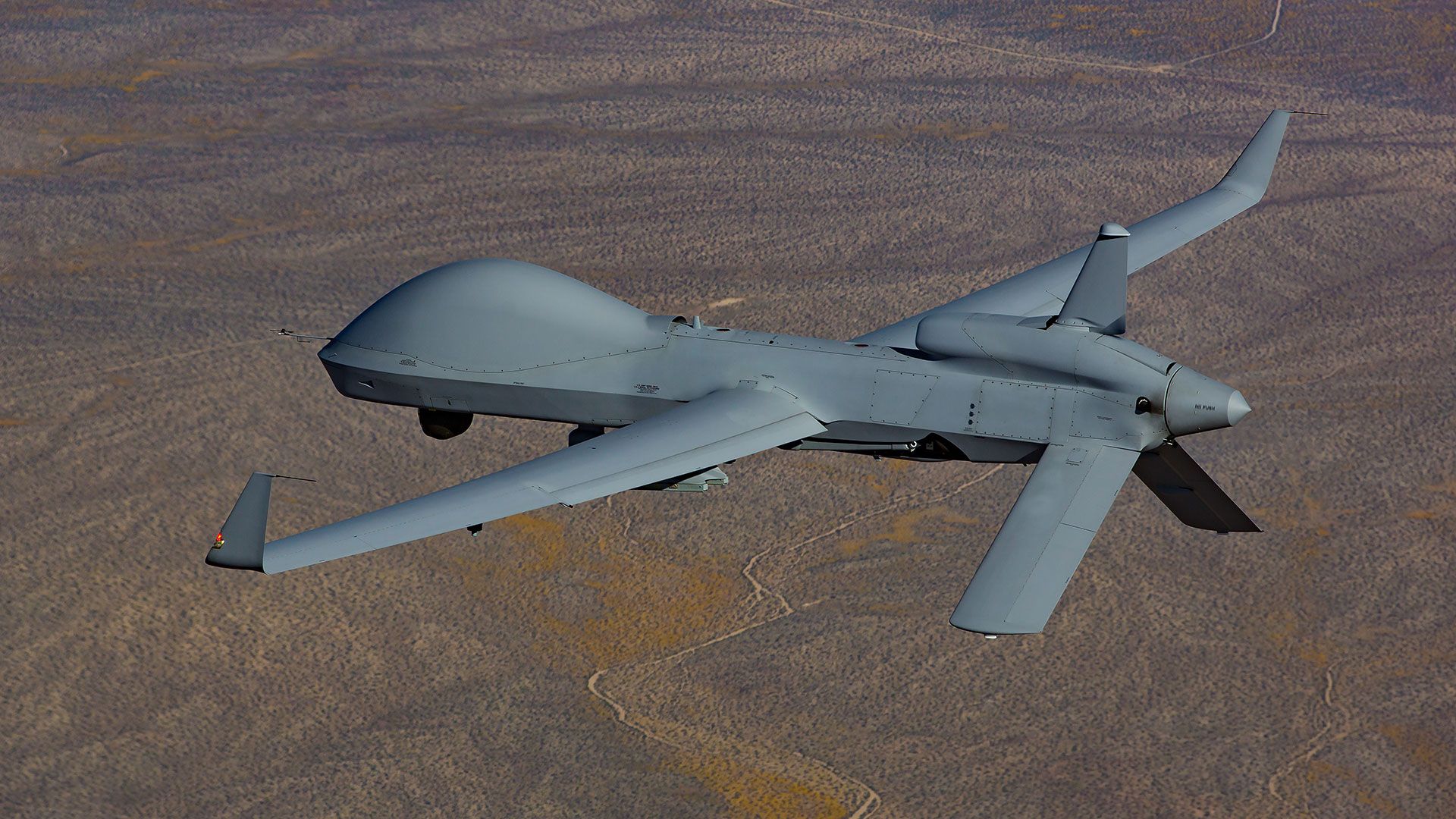
The UK Carrier Strike Group with HMS Prince of Wales as its focal point is off the coast of Scotland to carry out Exercise Strike Warrior – military drills that will confirm that the task force is ready for operations.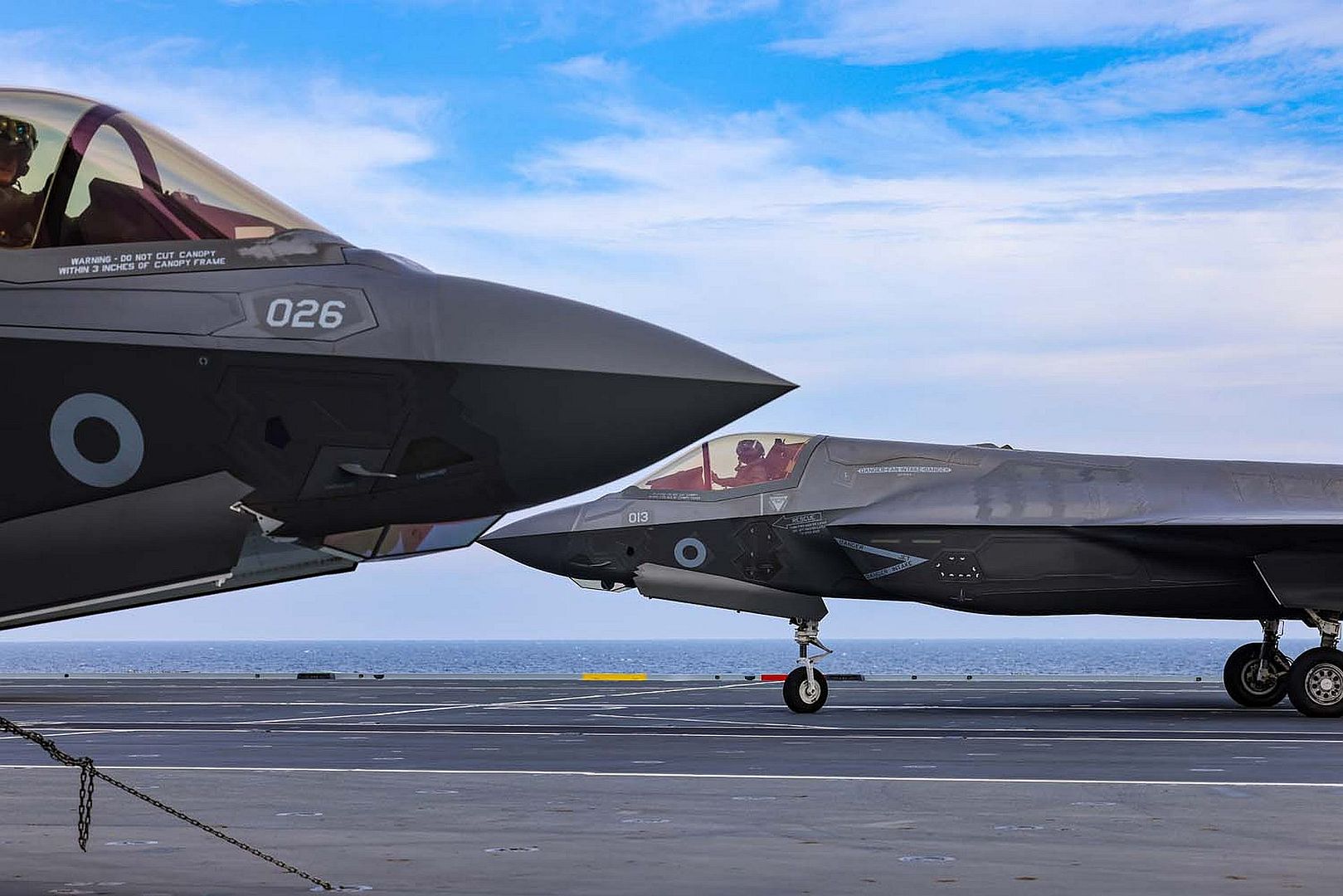
It is all in preparation for the Carrier Strike Group 25 deployment, which will send British warships, support vessels and jets across the world on the first mission of its kind since HMS Queen Elizabeth led a 49,000-mile mission to Japan and back in 2021.
For now, F-35B Lightning jets, frigates, destroyers, submarines, Royal Fleet Auxiliary tankers, and helicopters are in the North Sea, as they test their ability to carry out operations seamlessly together.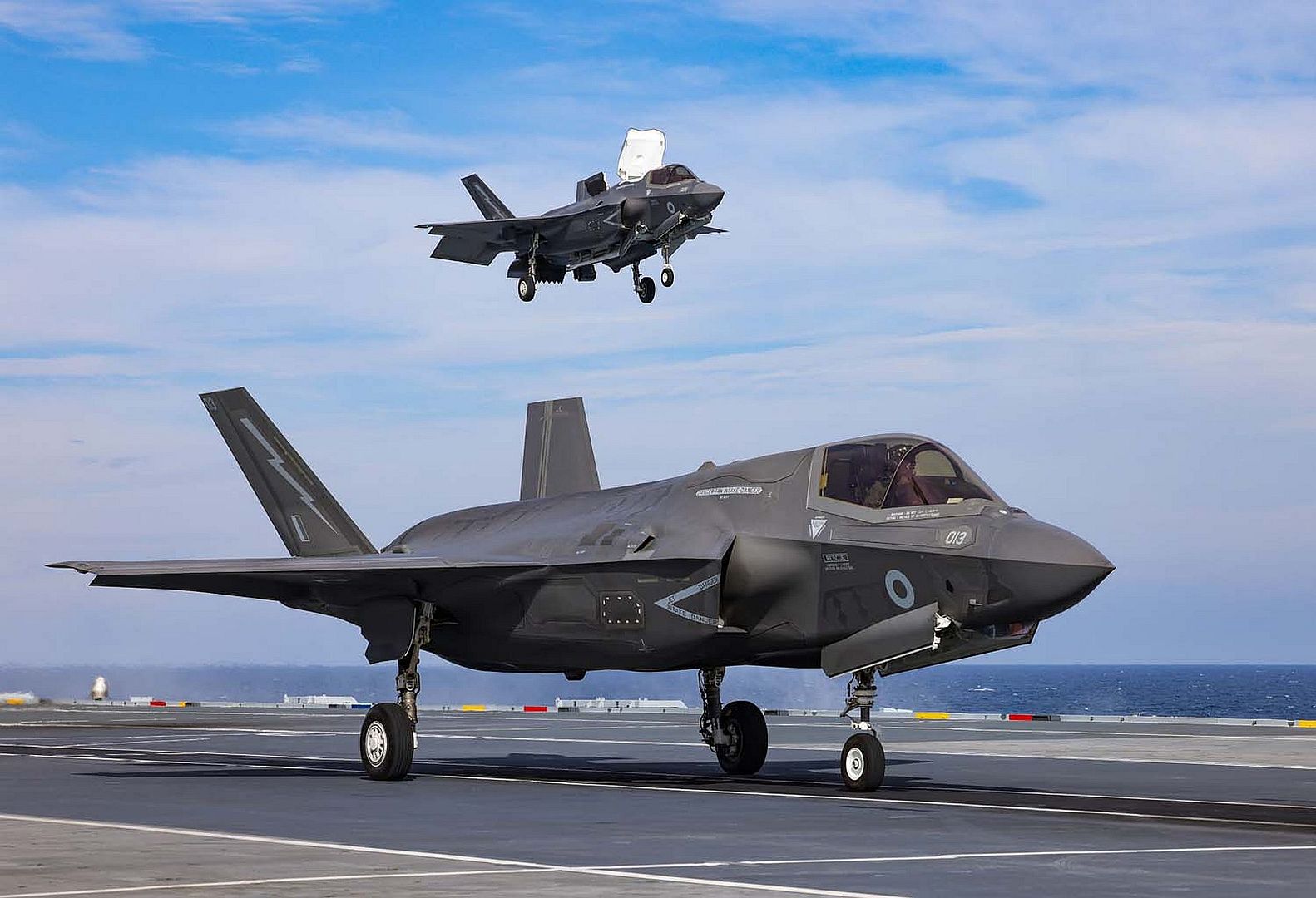
This will be supported by the RAF who will provide aircraft to support anti-submarine operations and test the air defence capability of the task group.
Running the exercise from HMS Prince of Wales is Commodore James Blackmore, Commander of the UK Carrier Strike Group, and his battle staff, who carefully coordinate operations, ensuring the task group works as a highly effective unit.
He said: “The UK’s Carrier Strike Group is the 1* battle staff that commands the fleet embarked on HMS Prince of Wales.
“I have command of highly capable assets and personnel, which provide a powerful capability across all domains from anti-air to cyber.
“This exercise is important because it will validate my team as a “Very High Readiness” force, which means we can be ready to command a fleet with a few days’ notice.
“This is all in preparation for next year’s exercise across which will see us traverse the globe to achieve.”
“Exercise Strike Warrior is an important milestone for 809 NAS, being the Squadron’s first return to sea since the Falklands conflict and an important stepping stone in developing our Initial Operational Capability.”
During Strike Warrior, HMS Prince of Wales will be surrounded by warships, including HMS Portland, HMS Iron Duke, HMS Dauntless and an Astute-class submarine which will protect her from a range of threats.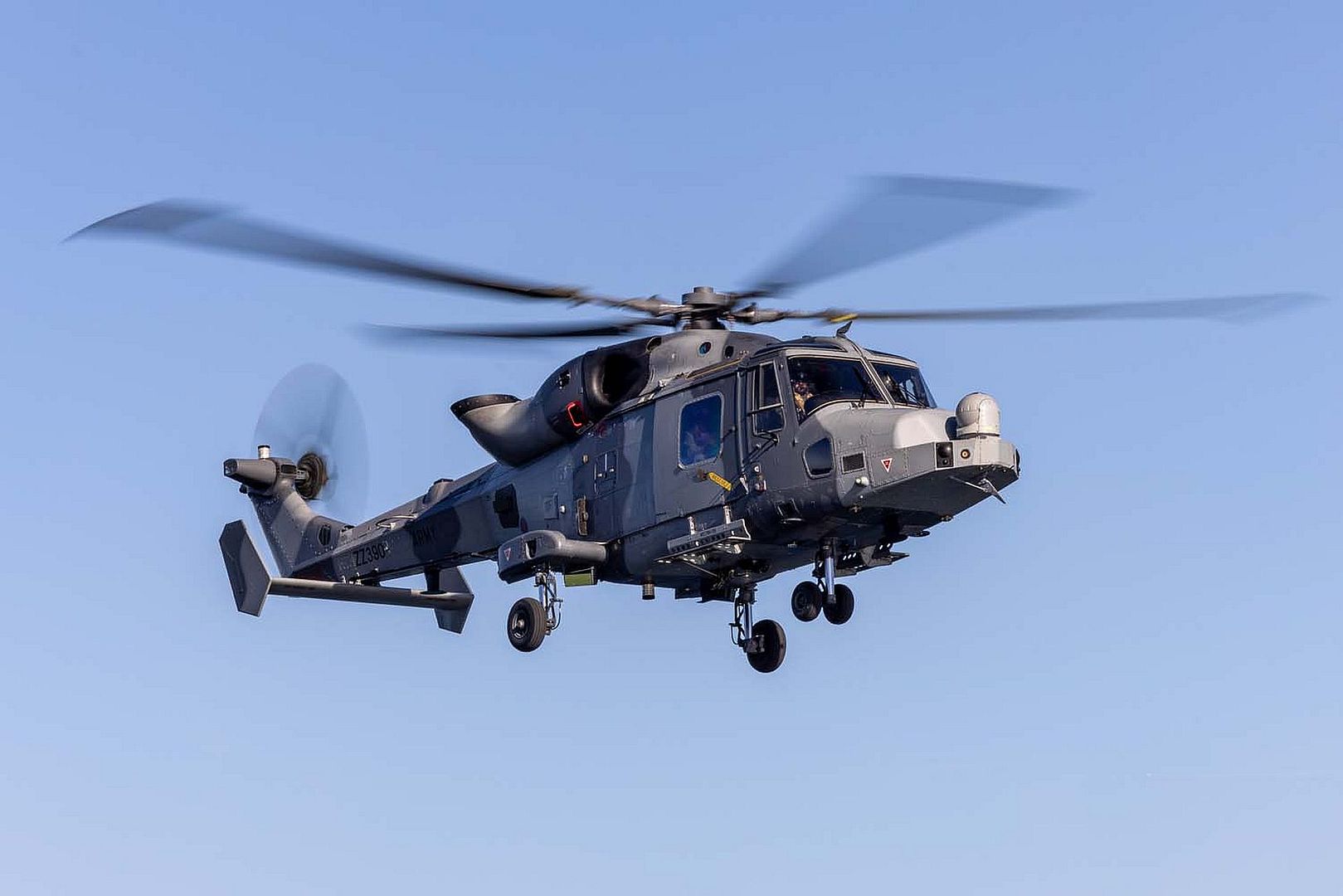
HMS Portland (Type 23 frigate) will work on countering threats beneath the waves in their primary role as submarine hunters, aided by Merlin helicopters and P8 Maritime Patrol Aircraft from the RAF.
Type 45 destroyer Dauntless brings world-class air defence to the task group, with her powerful Sampson radars and Sea Viper missiles acting as a shield from above – systems which have just proved their prowess against drones and missiles with HMS Diamond in the Red Sea and Gulf of Aden.
An Astute-class hunter killer submarine is lurking beneath the waves, capable of fending off adversary subs but also hitting targets with Tomahawk missiles.
Over the next two weeks, this potent task group will come up against intensive warfare scenarios to test their ability to firstly protect HMS Prince of Wales and her air group, which will be required to carry out flying operations throughout.
The UK Carrier Strike Group will operate with NATO warships from Standing NATO Maritime Group 1—the alliance’s premier task force in Northern European waters – throughout Strike Warrior.
The two task forces will test tactics across a range of scenarios, including anti-submarine warfare, countering attacks from uncrewed systems, air defence exercises, pilot rescues and practising sailing through narrow straits while under threat.
While all of this takes place, F-35B jets from 809 Naval Air Squadron will be flying sorties, including carrying out mock long-range strikes into mainland Europe.
It is the first time Marham-based 809 have deployed on the carrier after standing up at the end of last year.
809 Naval Air Squadron’s Commanding Officer, Commander Nick Smith, said: “The F-35 Lightning Force, specifically the front-line units 617 Squadron and 809 Naval Air Squadron, bring the headline Carrier Strike capability to the task group. The 5th Generation capability we bring ranges from projection of firepower ashore, to support of other theatre assets or defence of the task group.
(Photos courtesy of the RN)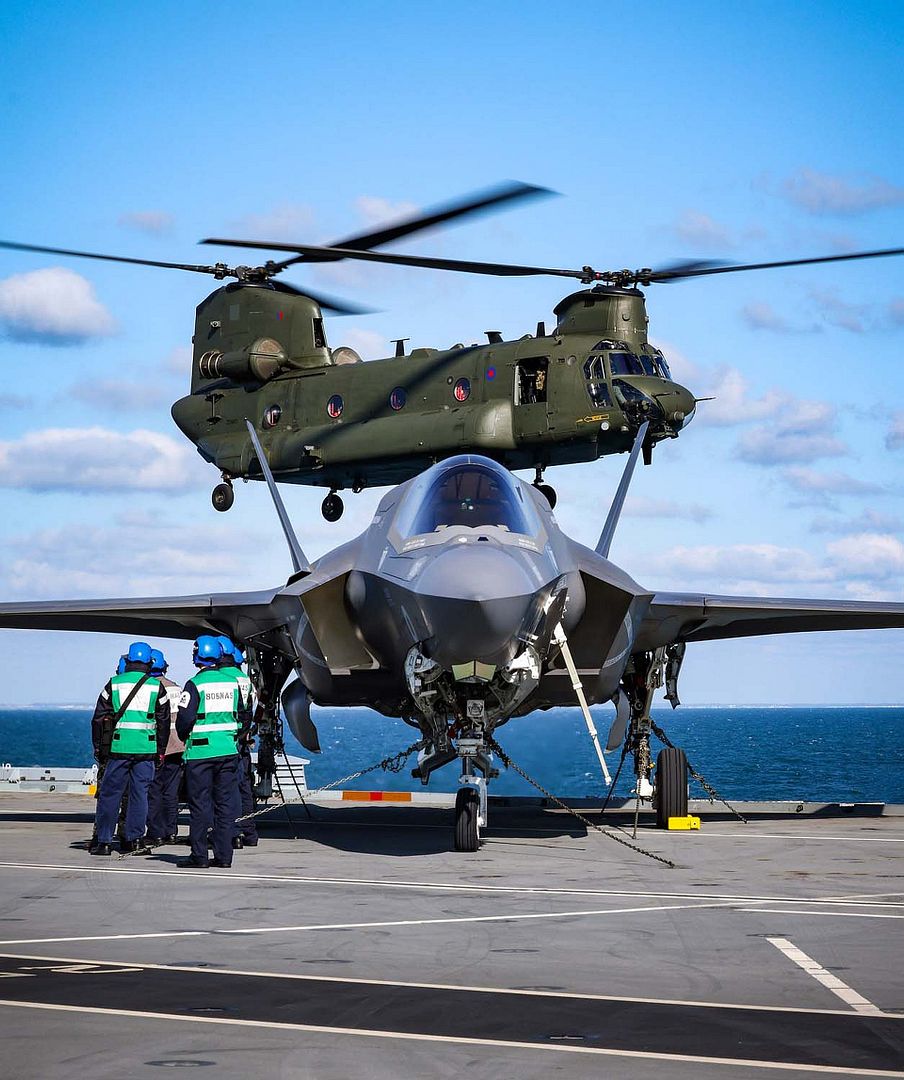
The last part of the weapons instructor training is about to begin. After months of intensive theory and practical classes, both in the Netherlands and Norway, in two weeks it will be time for the ultimate test: the two-week final exercise.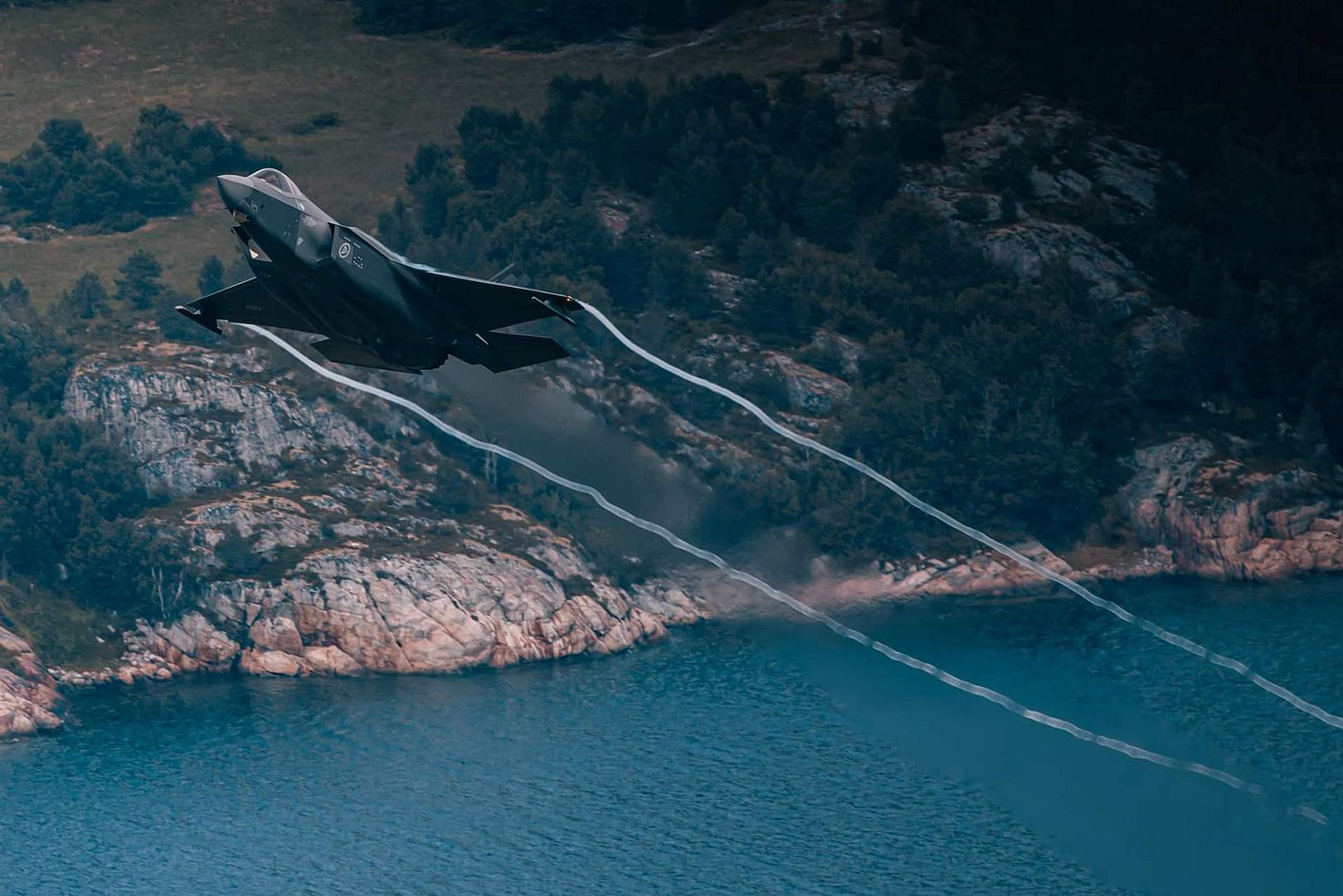
During this final exercise of the Weapons Instructor Course (WIC), the trainees fly both above the North Sea and in military airspace above the north of the Netherlands. This is what they do from Vliegbasis Leeuwarden , which can be noticeable both during the day and in the evening.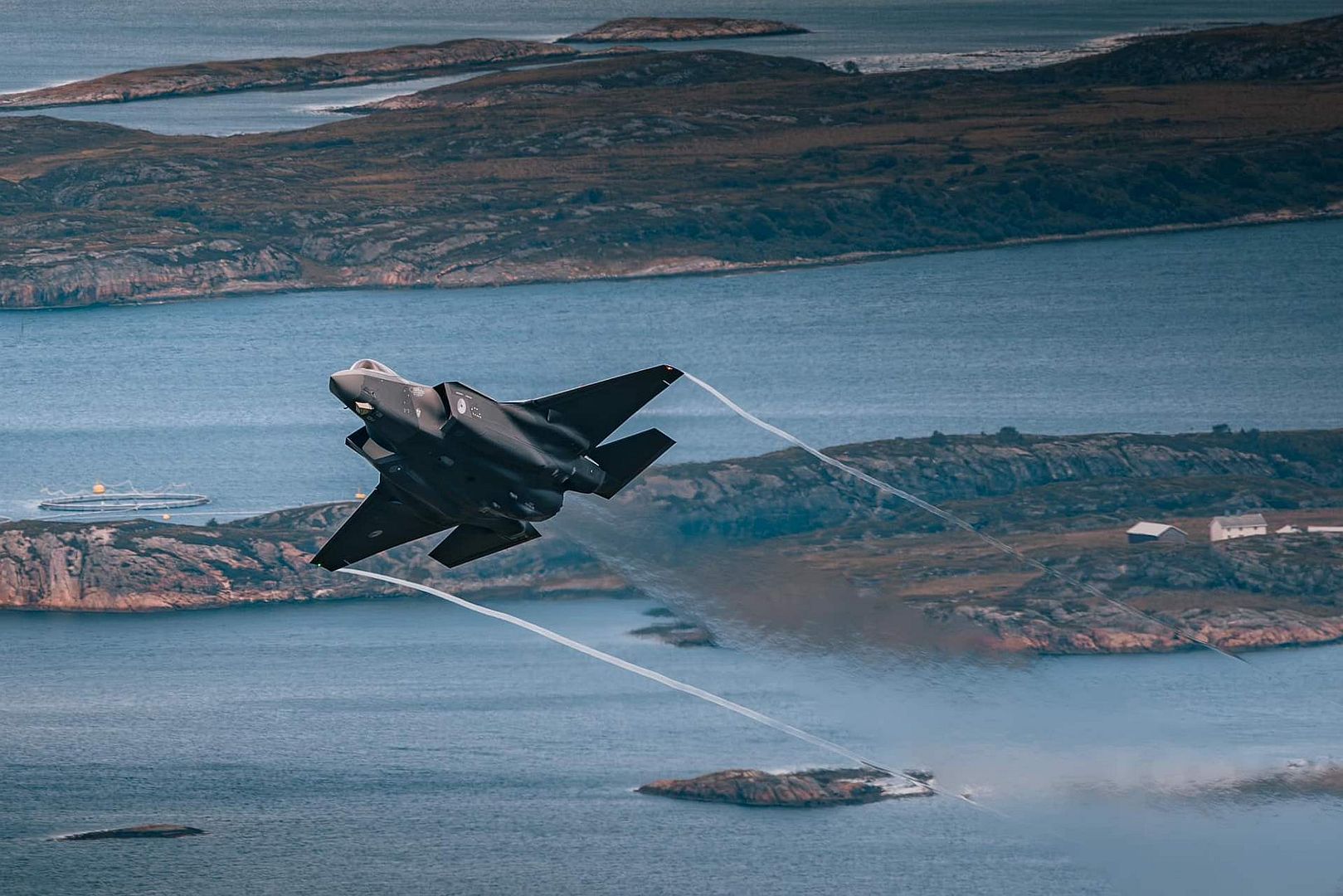
(Photos courtesy of the Koninklijke Luchtmacht)
-
10 months ago
 Main AdminU.S. Air Force Maj. Melanie “Mach” Kluesner demonstrates the abilities of a U.S. Air Force F-35A Lightning II during an air show demonstration team practice Oct.15, 2024, at Hill Air Force Base, Utah. The F-35A Demonstration Team rehearses regularly to maintain flying certifications and to uphold their mission and Air Force recruiting standards. (U.S. Air Force photos by Cynthia Griggs)
Main AdminU.S. Air Force Maj. Melanie “Mach” Kluesner demonstrates the abilities of a U.S. Air Force F-35A Lightning II during an air show demonstration team practice Oct.15, 2024, at Hill Air Force Base, Utah. The F-35A Demonstration Team rehearses regularly to maintain flying certifications and to uphold their mission and Air Force recruiting standards. (U.S. Air Force photos by Cynthia Griggs)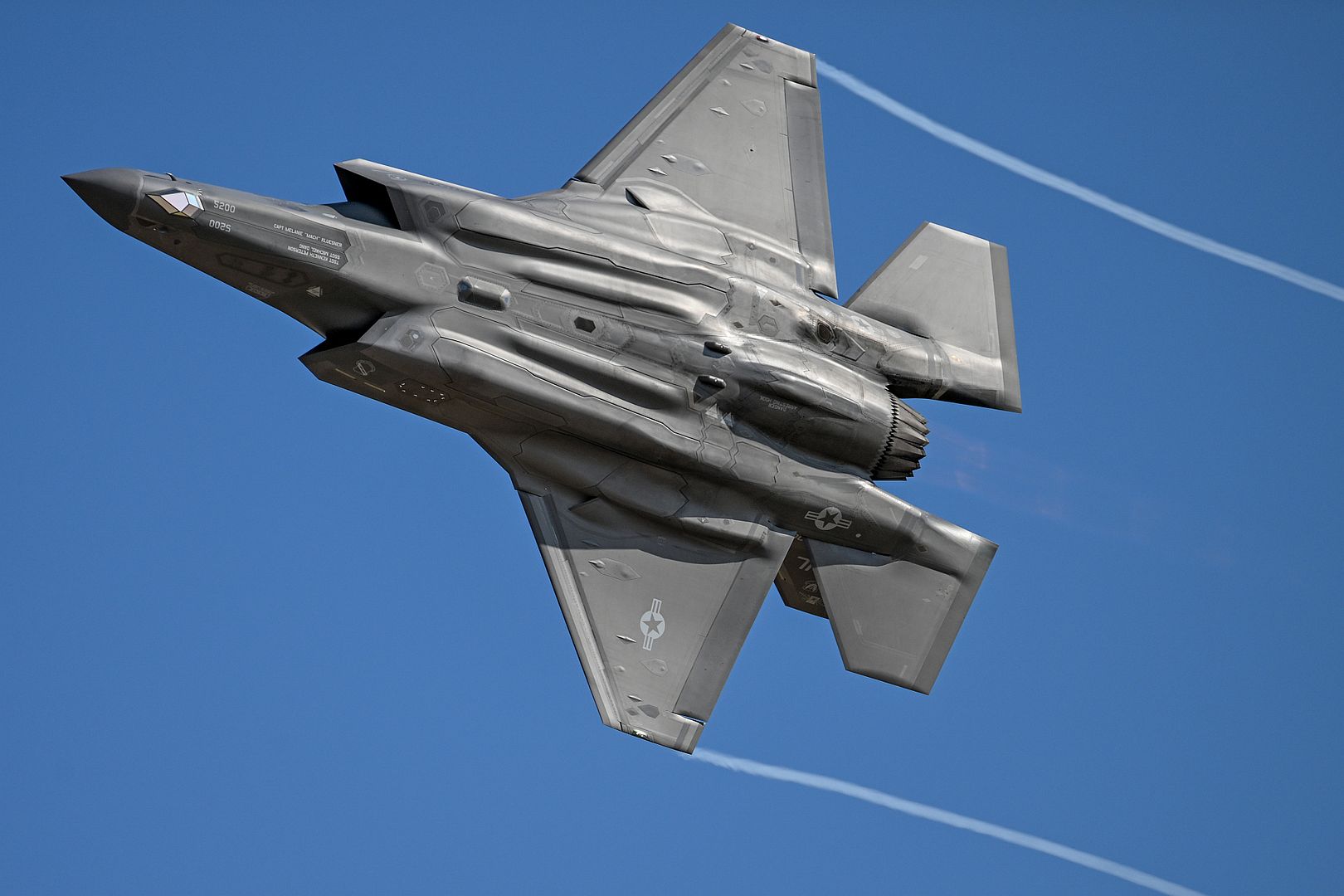



A U.S. Air Force F-16 Fighting Falcon assigned to the 14th Fighter Squadron, Misawa Air Base, Japan, flies over Yokota Air Base, Japan, Oct. 7, 2024, during an annual aircraft arresting system certification test. The tail-hook latches onto the AAS cable which then rapidly decelerates the aircraft in the event of an emergency landing. Certifying the BAK-12 system gives Yokota’s airfield the ability to host fighter aircraft during contingency operations. (U.S. Air Force photo by Yasuo Osakabe)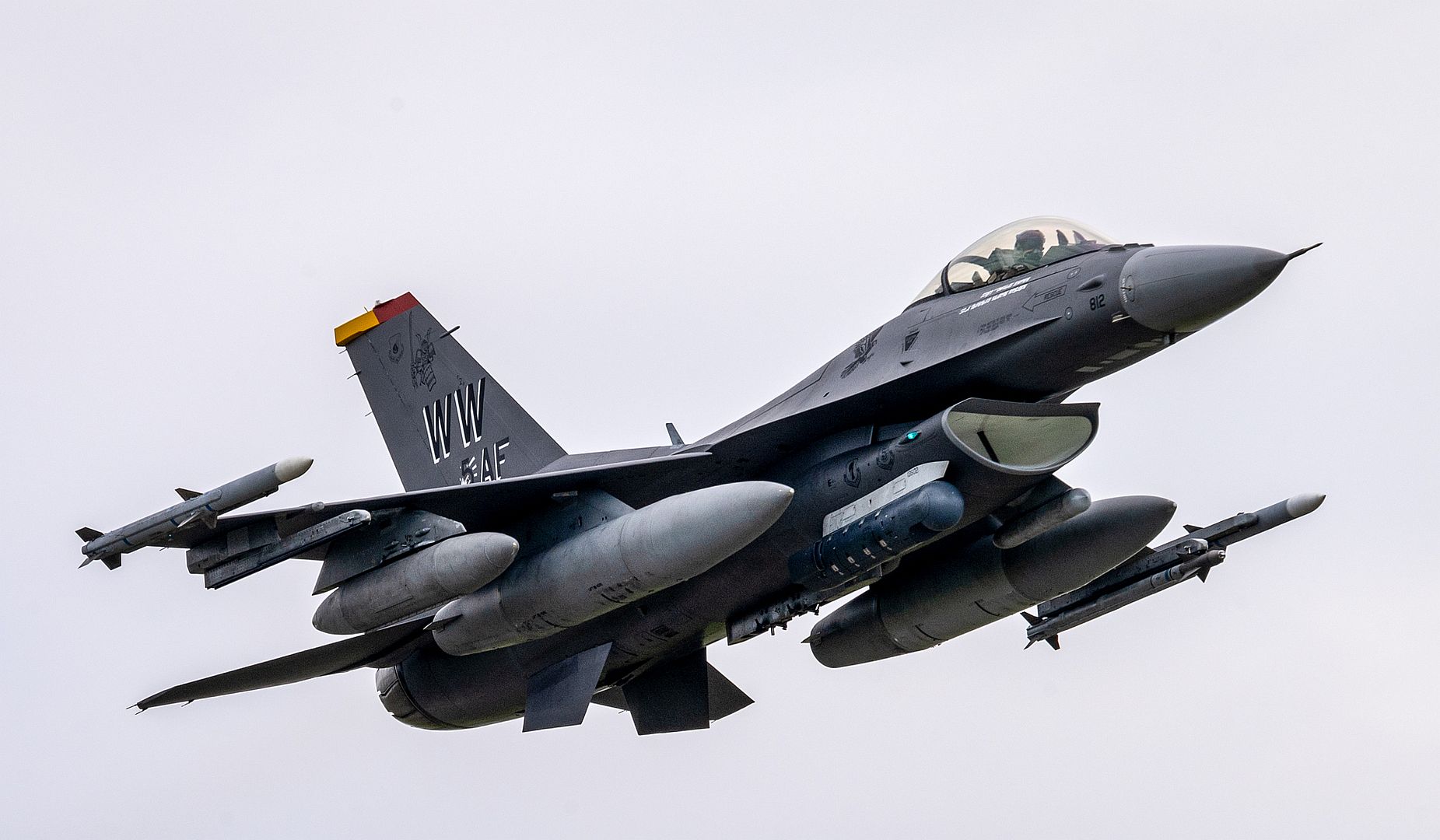
A U.S. Air Force F-16 Fighting Falcon assigned to the 14th Fighter Squadron, Misawa Air Base, Japan, approaches a barrier cable during an annual flightline aircraft arresting system certification test at Yokota Air Base, Japan, Oct. 7, 2024. The tail-hook latches onto the AAS cable which then rapidly decelerates the aircraft in the event of an emergency landing. Certifying the BAK-12 system gives Yokota’s airfield the ability to host fighter aircraft during contingency operations. (U.S. Air Force photo by Yasuo Osakabe)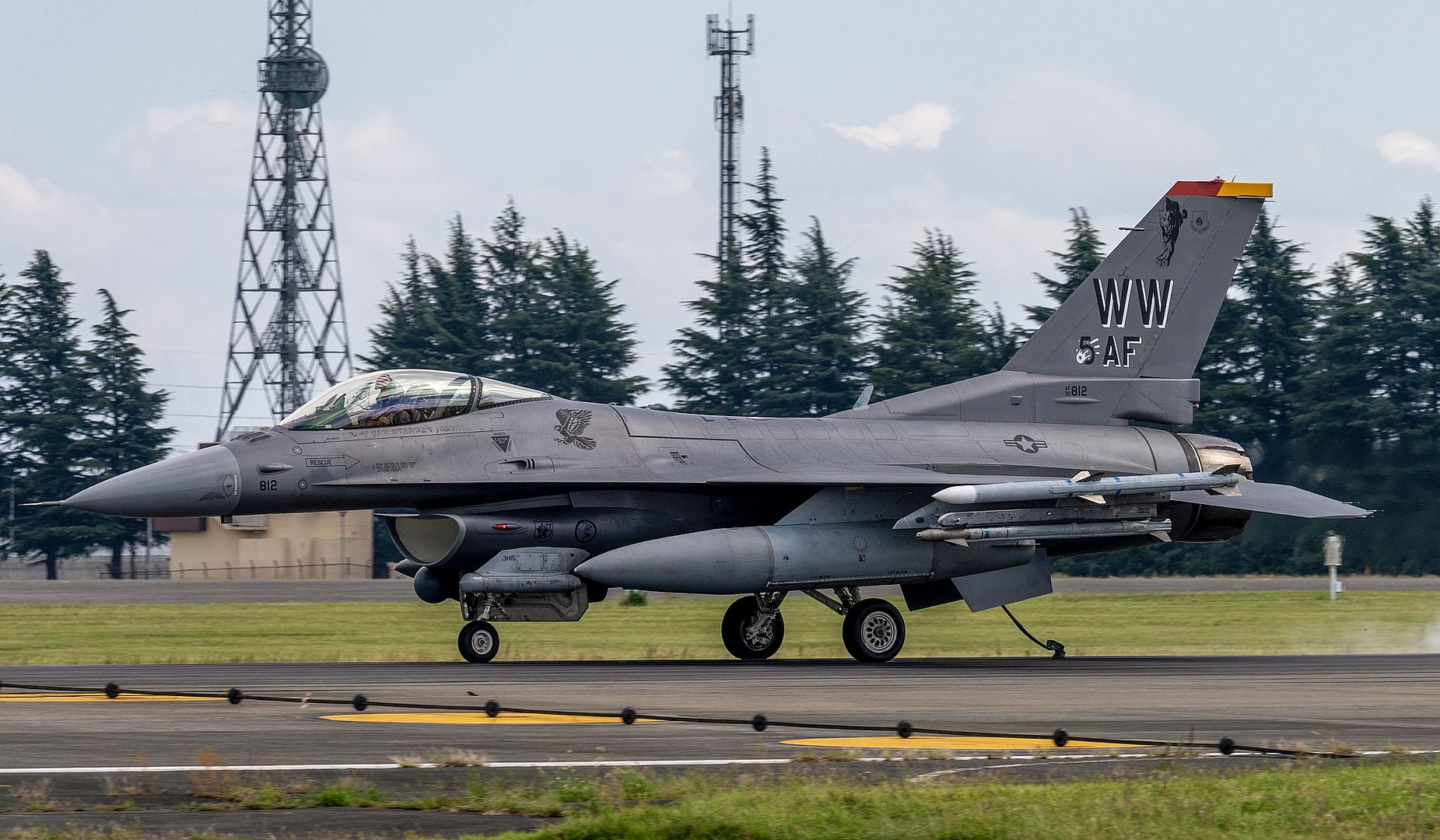
A U.S. Air Force F-16 Fighting Falcon assigned to the 14th Fighter Squadron, Misawa Air Base, Japan, catches a barrier cable during an annual flightline aircraft arresting system certification test at Yokota Air Base, Japan, Oct. 7, 2024. The tail-hook latches onto the AAS cable which then rapidly decelerates the aircraft in the event of an emergency landing. Certifying the BAK-12 system gives Yokota’s airfield the ability to host fighter aircraft during contingency operations. (U.S. Air Force photo by Yasuo Osakabe)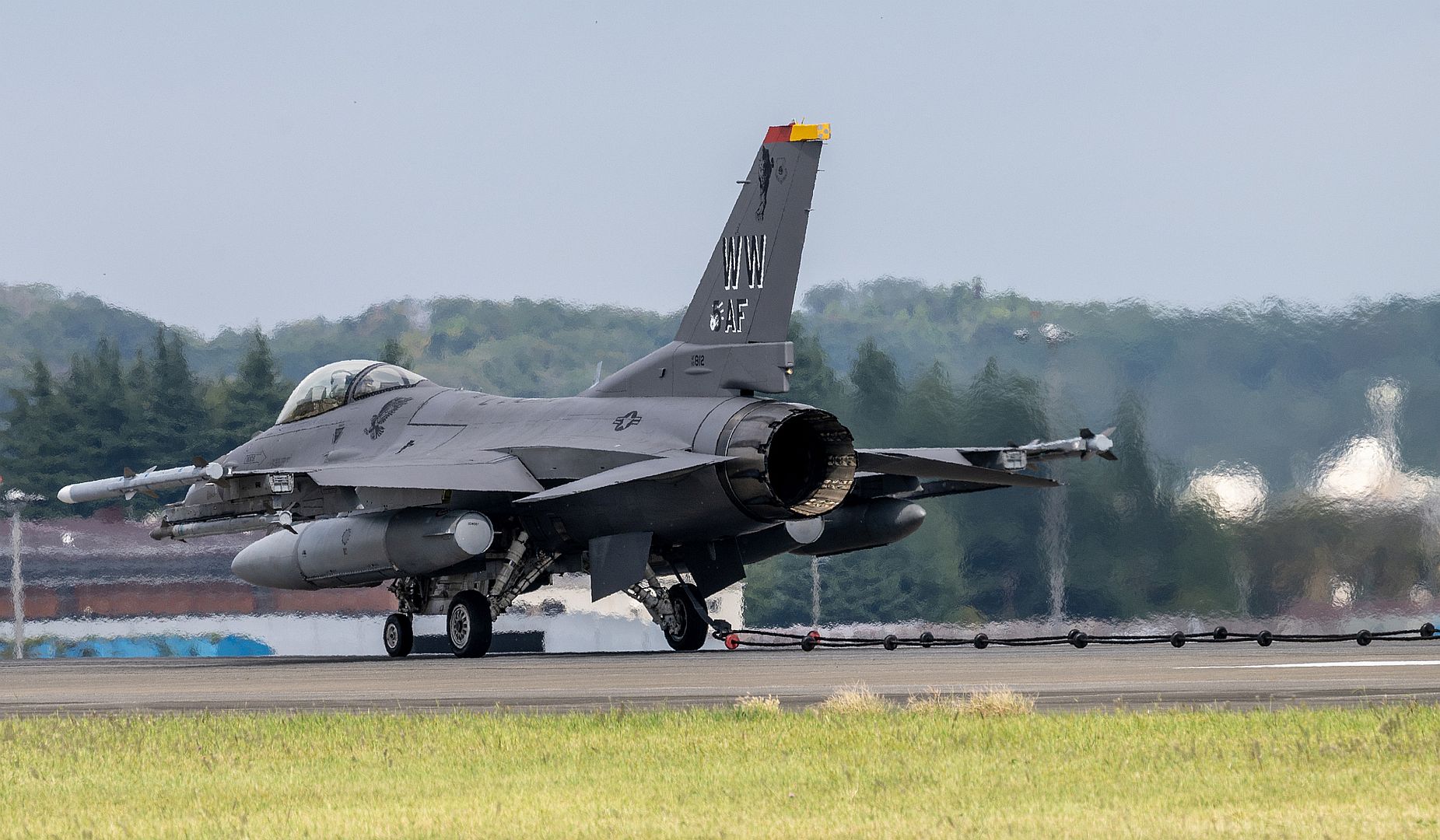
Vodochody, 16 October 2024 – The largest Czech aircraft manufacturer, AERO Vodochody AEROSPACE, has named its most modern trainer aircraft L-39 Skyfox. The name draws inspiration from the long tradition of successful Czechoslovakian aircraft such as the L-29 Dolphin and the L-39 Albatros, while also capturing the unique features of the new trainer.
The Czech aircraft manufacturer Aero Vodochody produces the L-39 Skyfox in series production and this year celebrates its 105th anniversary. During that time, dozens of machines have flown out of its workshops, providing a diverse range of tasks and activities from training to reconnaissance to combat. In particular, the legendary Aero L-29 Dolphin and L-39 Albatros trainer aircraft have not only gone down in aviation history as some of the most used trainers in the world, but their very names Dolphin and Albatros have also become icons.
“The name L-39 Skyfox perfectly reflects the essence of the trainer from Aero. The ‘Czech Fox’ stands out for its efficiency, superior multi-role capability, and ability to adapt to different flight conditions. Pilots themselves appreciate the L-39 Skyfox’s excellent flight characteristics, intuitive handling, excellent cockpit visibility, and high level of protection when training on the aircraft,” says Viktor Sotona, Chairman and CEO of Aero, describing the choice of the new name, adding: “An important aspect of Skyfox is the care for pilots. Like the fox, which is agile, smart, and can avoid danger, our aircraft is characterized by excellent safety features. With a zero-zero seat and the ability to carry weapons systems, pilots can trust the aircraft to hold them up and protect them even in challenging situations.”
The L-39 Skyfox is an all-new, multi-functional, modern platform that is capable of covering multiple functions, from pilot training to light combat and reconnaissance missions. It takes the successful aerodynamic concept from its predecessor, the L-39 Albatros. The Skyfox represents the most efficient machine in its class, available in both Western and Eastern configurations and certified to EU and NATO regulations. This versatile technology platform combines advanced simulation technologies and ground training systems. The Czech L-39 Skyfox trainer offers an innovative combination of advanced avionics, a powerful jet engine, and excellent flight characteristics, making it a suitable choice for all phases of 4th and 5th-generation pilot training, reconnaissance, and light combat missions.
The L-39 Skyfox aircraft will be used in the Czech Republic by LOM PRAHA and its Flight Training Centre in Pardubice for training pilots of the Czech Army. Practical pilot training is already underway at Aero’s facilities. “We will deliver two L-39 Skyfoxes by the end of this year and we are ready to deliver the remaining two by the middle of next year. According to the contract, LOM PRAHA has the option to purchase four more aircraft, which would provide sufficient capacity for training pilots not only for the Czech Air Force but also for the NATO Flight Training Europe program,” adds Viktor Sotona.
The serial production of the L-39 Skyfox trainer aircraft started in May 2023. Currently, about 600 subcontractors are involved in the production process, 400 of them coming from the Czech Republic. Earlier this year, Aero achieved the required production rate of one aircraft per month.
Vietnam has become the first L-39 Skyfox customer. Six of Aero’s aircraft have undergone final acceptance by the Vietnamese Air Force this year, including full assembly, function verification, and a flyby by a factory pilot. In 2024, Aero received official authorization to develop, manufacture, maintain, and repair Hungarian aircraft, including the L-39 Skyfox, which it will deliver to the Hungarian Air Force. In addition, a memorandum was signed between Aero and the Swedish company Saab to explore the possibility of adapting the L-39 Skyfox for the needs of the Hungarian Air Force.
-
10 months agoSun Oct 20 2024, 01:10pmDuggy
 Main AdminTwo L-29's from the University of Iowa's Operator Performance Laboratory recently supported several test initiatives in collaboration with the United States Air Force Test Pilot School. The thirty-day deployment at Edwards helped students and instructors obtain key research in the areas of autonomy and machine learning (Air Force photos by Madeline Guadarrama).
Main AdminTwo L-29's from the University of Iowa's Operator Performance Laboratory recently supported several test initiatives in collaboration with the United States Air Force Test Pilot School. The thirty-day deployment at Edwards helped students and instructors obtain key research in the areas of autonomy and machine learning (Air Force photos by Madeline Guadarrama).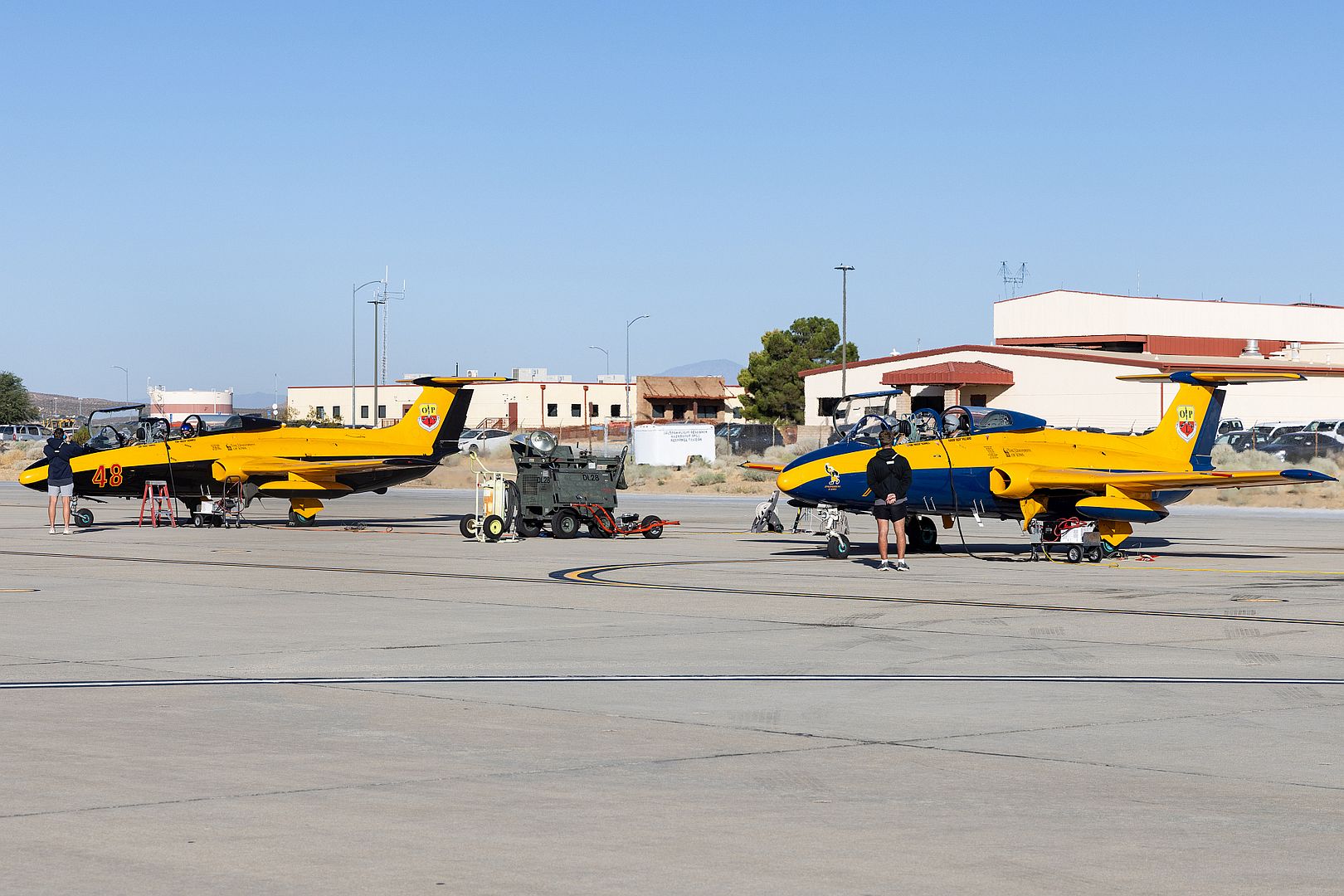
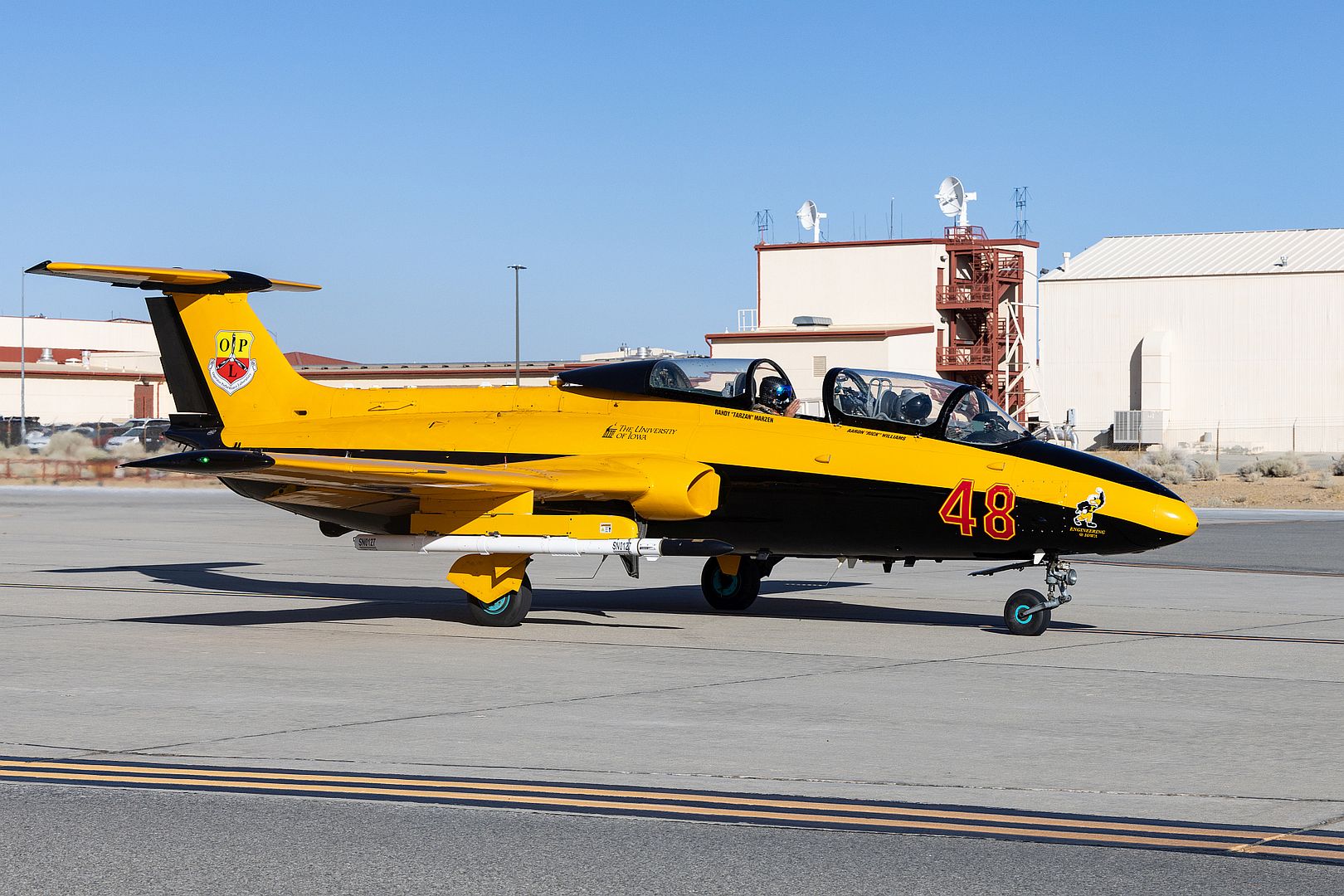
Six U.S. Navy Blue Angels F/A-18 Super Hornet aircraft fly in the skies of Texoma, Oct. 14, 2024. The formation met with two KC-46 Pegasus aircraft, assigned to the 56th Air Refueling Squadron, to receive fuel mid-flight. (U.S. Air Force photo by Airman 1st Class Lauren Torres)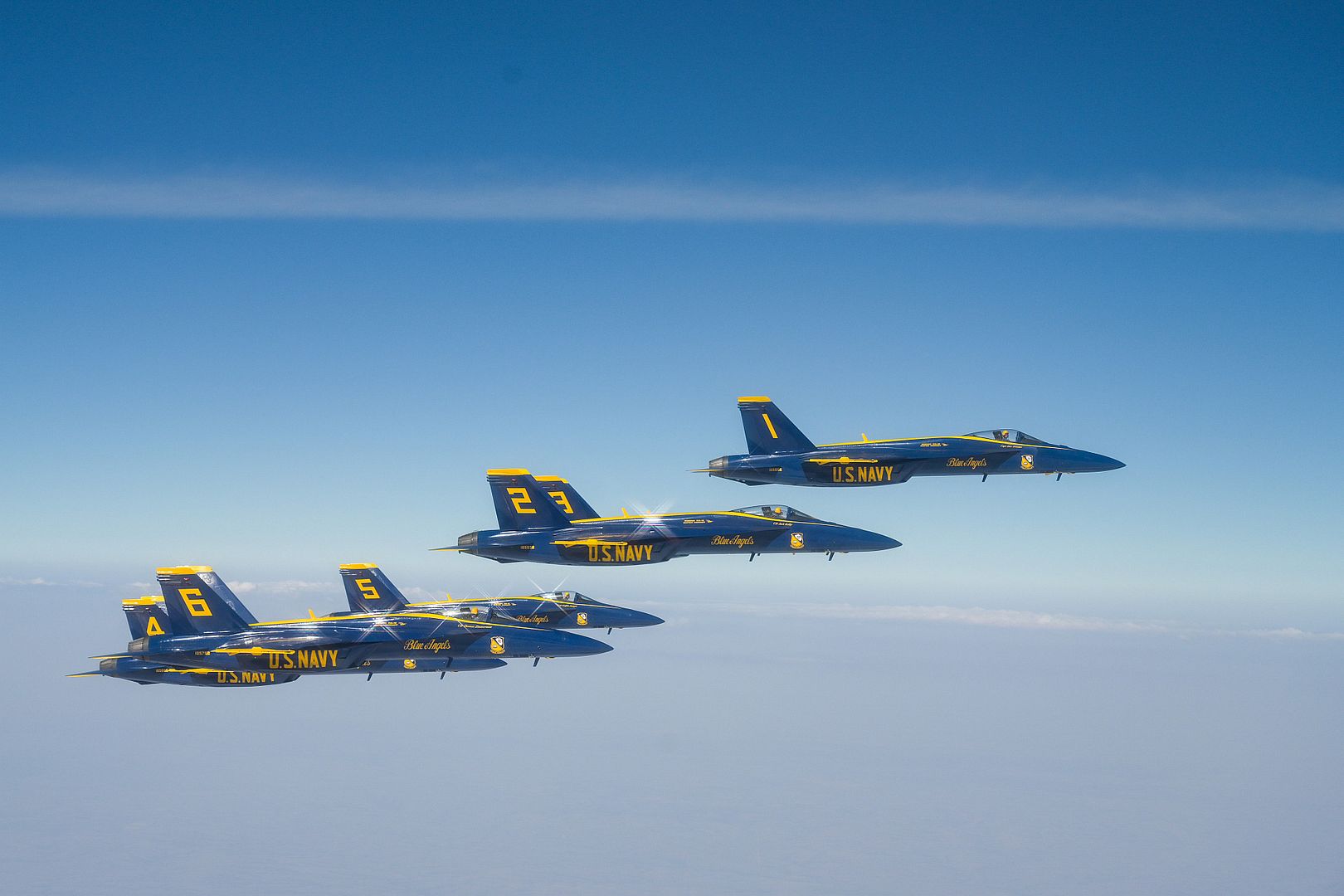
Exercise "APEX": a French-Italian collaboration for policing airspace.
The goal? Strengthen the air defense procedures of the two countries.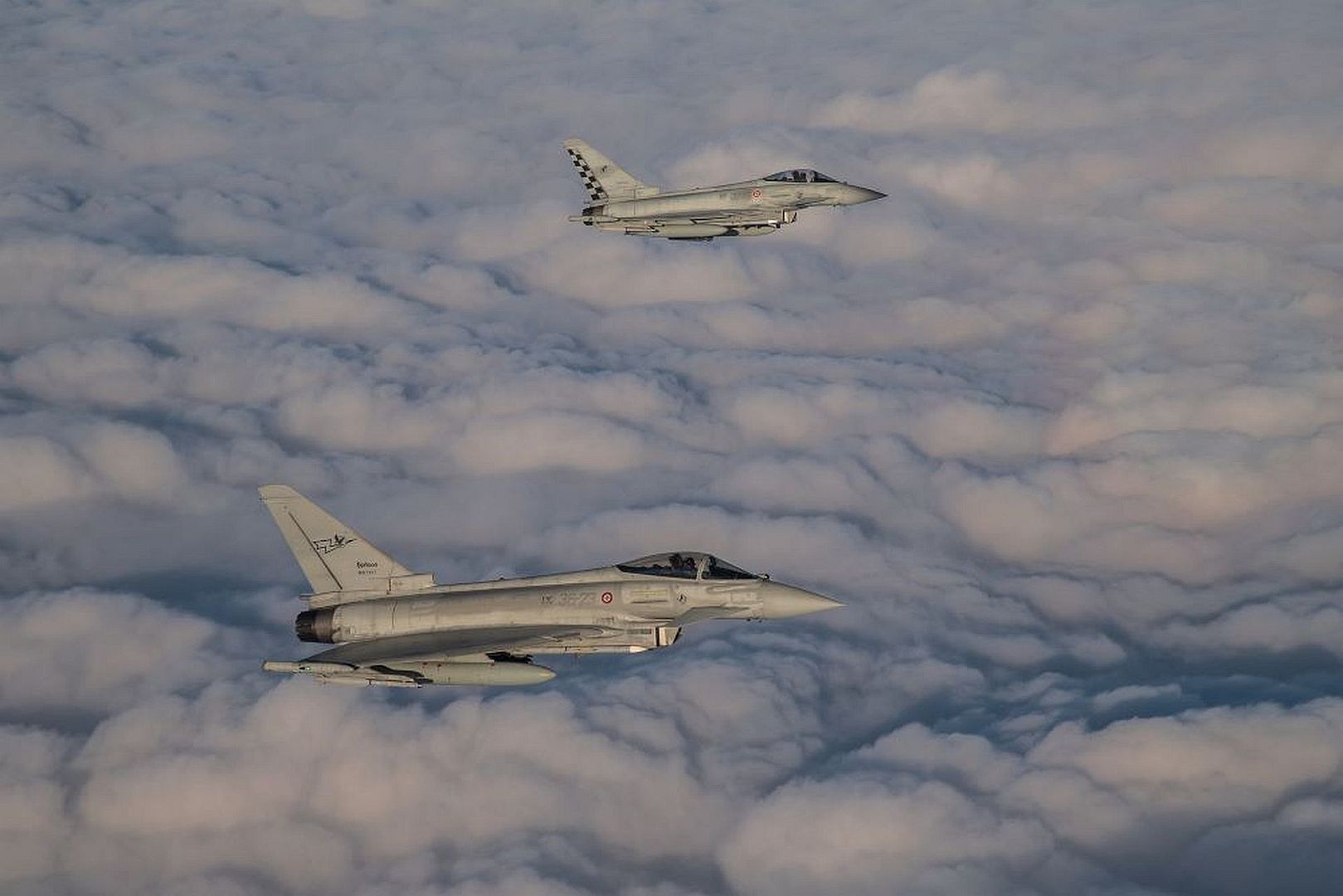
After the detection of an aircraft on the suspicious trajectory, two Italian Eurofighters were deployed to intercept it, relayed by a French Rafale.
(Photos courtesy of the Armée de l'Air et de l'Espace)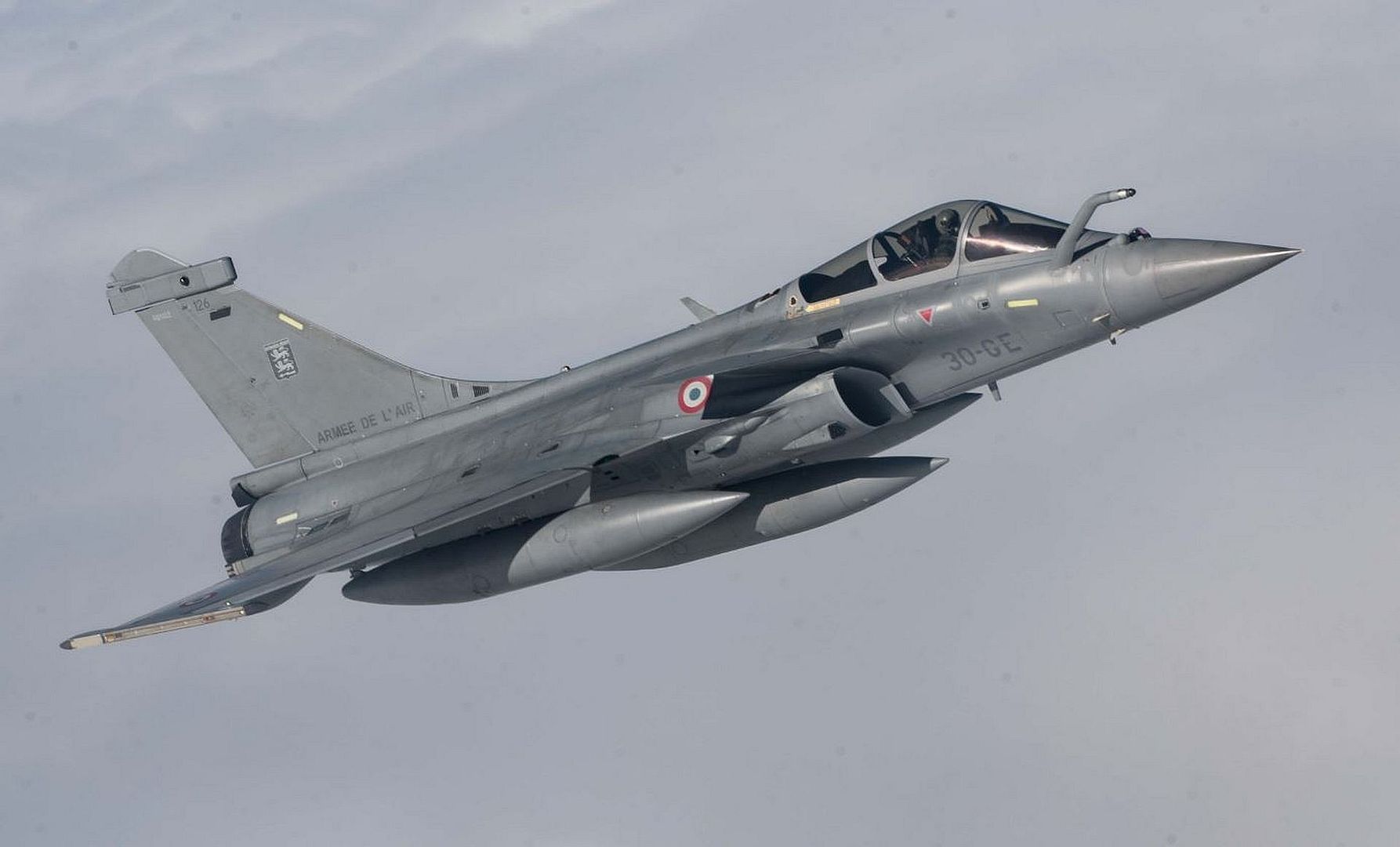
Next week the #Sirio exercise begins.
The Spanish Air Force hosts its Sirio exercise at Gando Air Base (Gran Canaria) in October 2024 again. The exercise normally attracts a large number of Spanish Air Force fighter aircraft from almost all units. This year, the exercise is scheduled from 21 to 30 October 2024.
(Photo courtesy of the Ejército del Aire)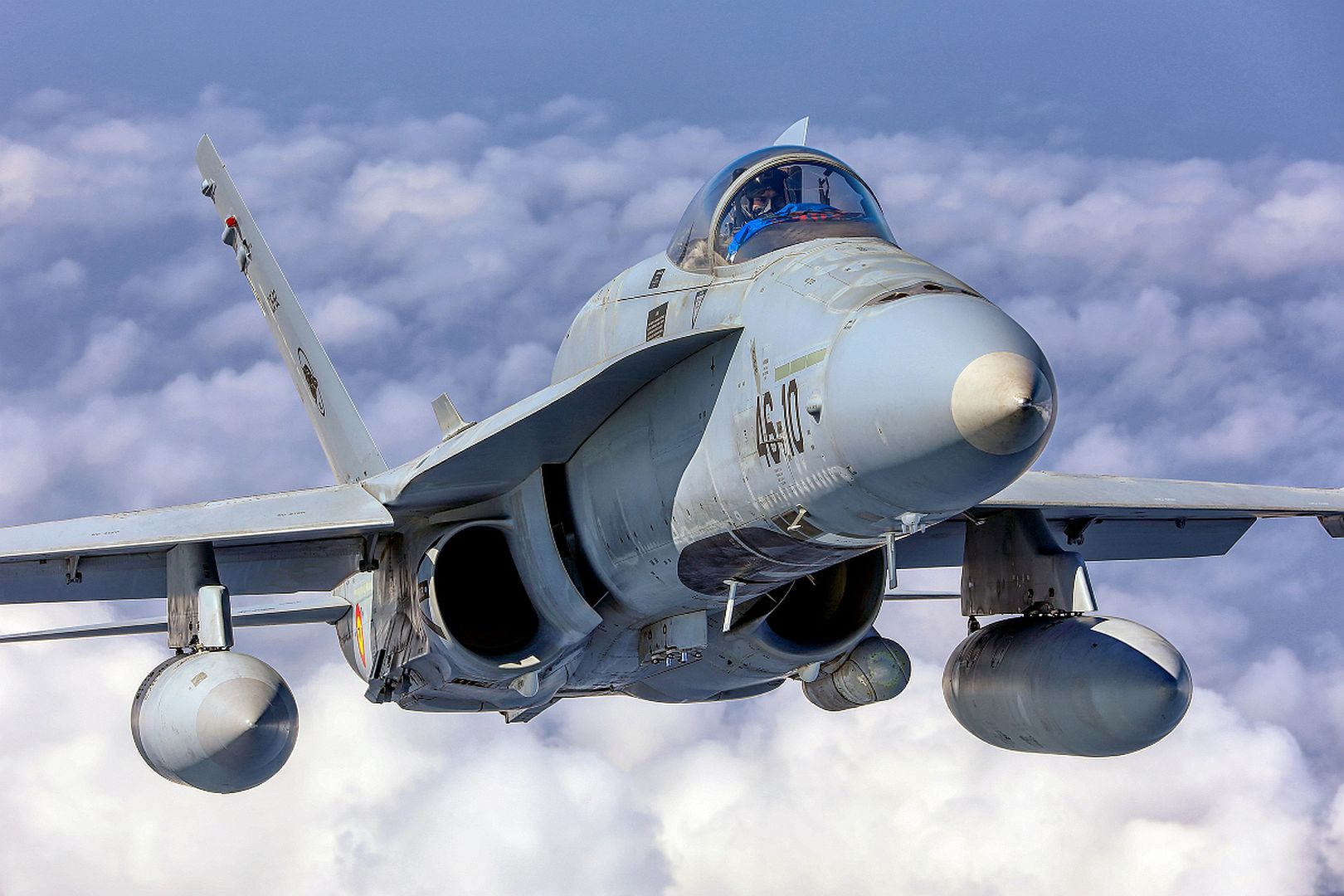
-
10 months ago
 Main AdminAn A-10C Thunderbolt II aircraft assigned to the 23rd Wing at Moody Air Force Base, Georgia, flies over the flight line at Robins AFB, Georgia, Oct. 17, 2024. The A-10C reached initial operation capability in 2007, with close air support capabilities including its combination of large and varied ordnance load, austere field capability and survivability. (U.S. Air Force photo by Patrick Sullivan)
Main AdminAn A-10C Thunderbolt II aircraft assigned to the 23rd Wing at Moody Air Force Base, Georgia, flies over the flight line at Robins AFB, Georgia, Oct. 17, 2024. The A-10C reached initial operation capability in 2007, with close air support capabilities including its combination of large and varied ordnance load, austere field capability and survivability. (U.S. Air Force photo by Patrick Sullivan)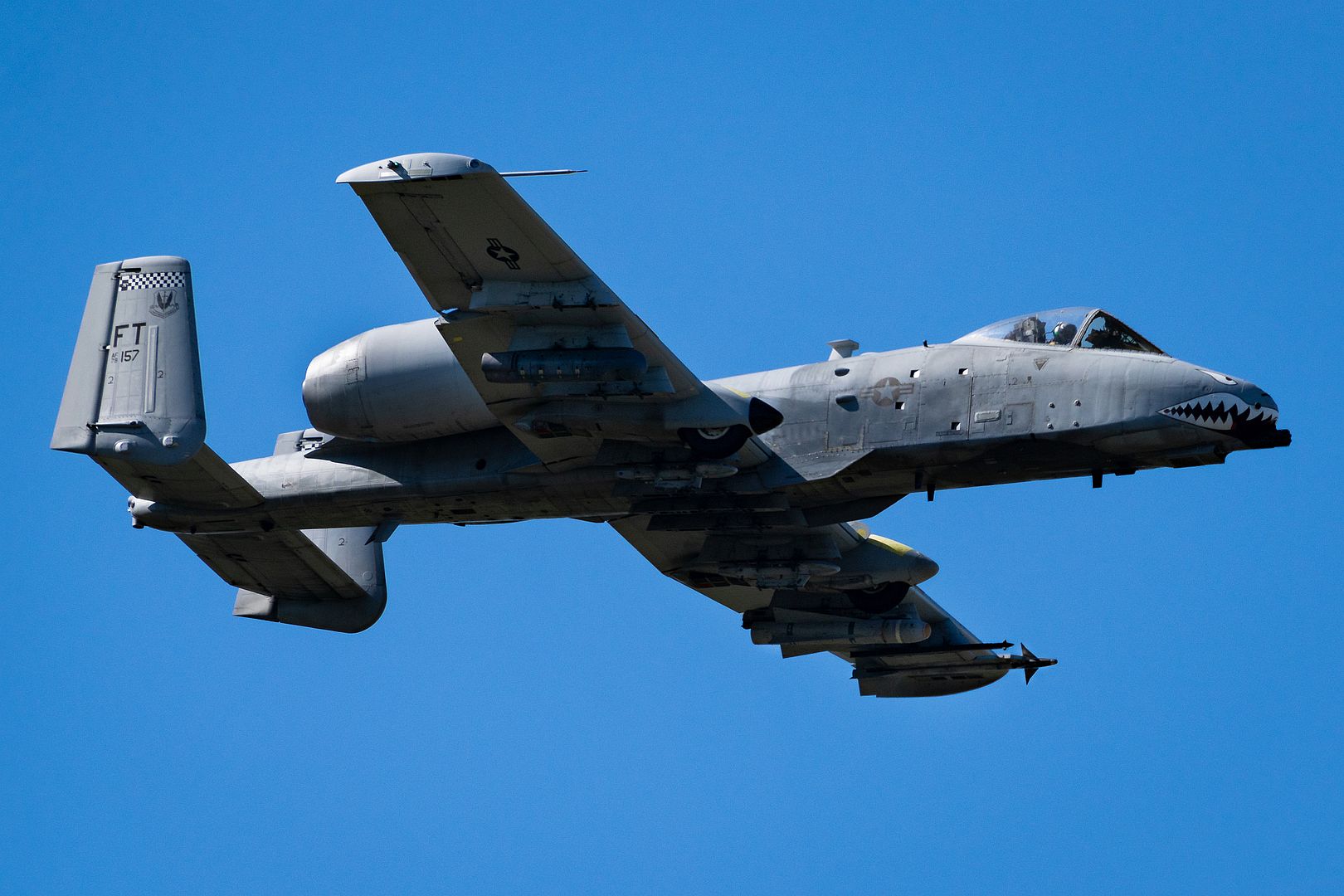
A U.S. Air Force F-16 Fighting Falcon of the South Dakota Air National Guard’s 114th Fighter Wing flys alongside a U.S. Air Force KC-135 Stratotanker of the 185th ARW while flying over Nebraska, Oct. 17, 2024. The aerial refueling of the F-16 was witnessed by Iowa Gov. Kim Reynolds who visited the 185th ARW. (U.S. Air National Guard photo by Staff Sgt. Tylon Chapman)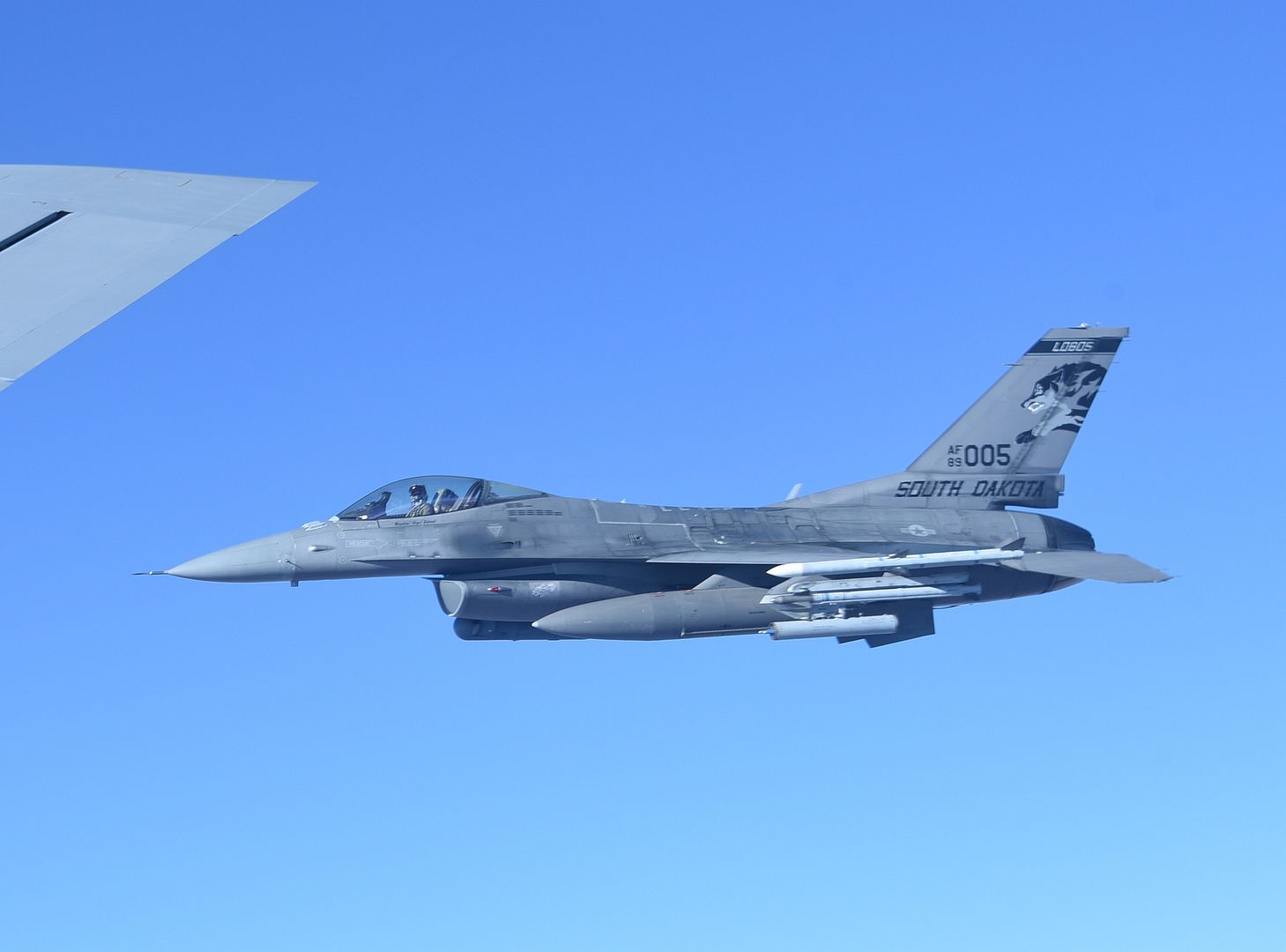
A U.S. Air Force F-16 Fighting Falcon fighter jet assigned to the 169th Fighter Squadron, takes off during a combat readiness inspection at McEntire Joint National Guard Base, South Carolina, Oct. 17, 2024. The inspection assesses the wing’s readiness to respond to near-peer threats at a moment’s notice in defense of our national security. (U.S. Air National Guard photo by Senior Airman Danielle Dawson)
An F-35B Lightning II aircraft, flown by a test pilot from Air Test and Evaluation Squadron Two Three (VX-23), approaches Japan’s Izumo-class multi-functional destroyer JS Kaga (DDH-184) prior to landing on the ship for the first time Oct. 20, 2024, off the southern coast of California. The short takeoff and vertical landing variant of the 5th generation aircraft and an integrated test team are aboard the ship to conduct developmental test to certify modifications to the Japan Maritime Self-Defense Force’s largest vessel. Data that testers gather during these sea trials will be analyzed and eventually inform decisions to enhance the capabilities of the Maritime Self-Defense Force as well as contribute to improved interoperability between Japan and the U.S. Japan is an F-35 Joint Program Office foreign military sales customer planning to buy 42 F-35Bs.
(Photos by Cmdr. Darin Russell)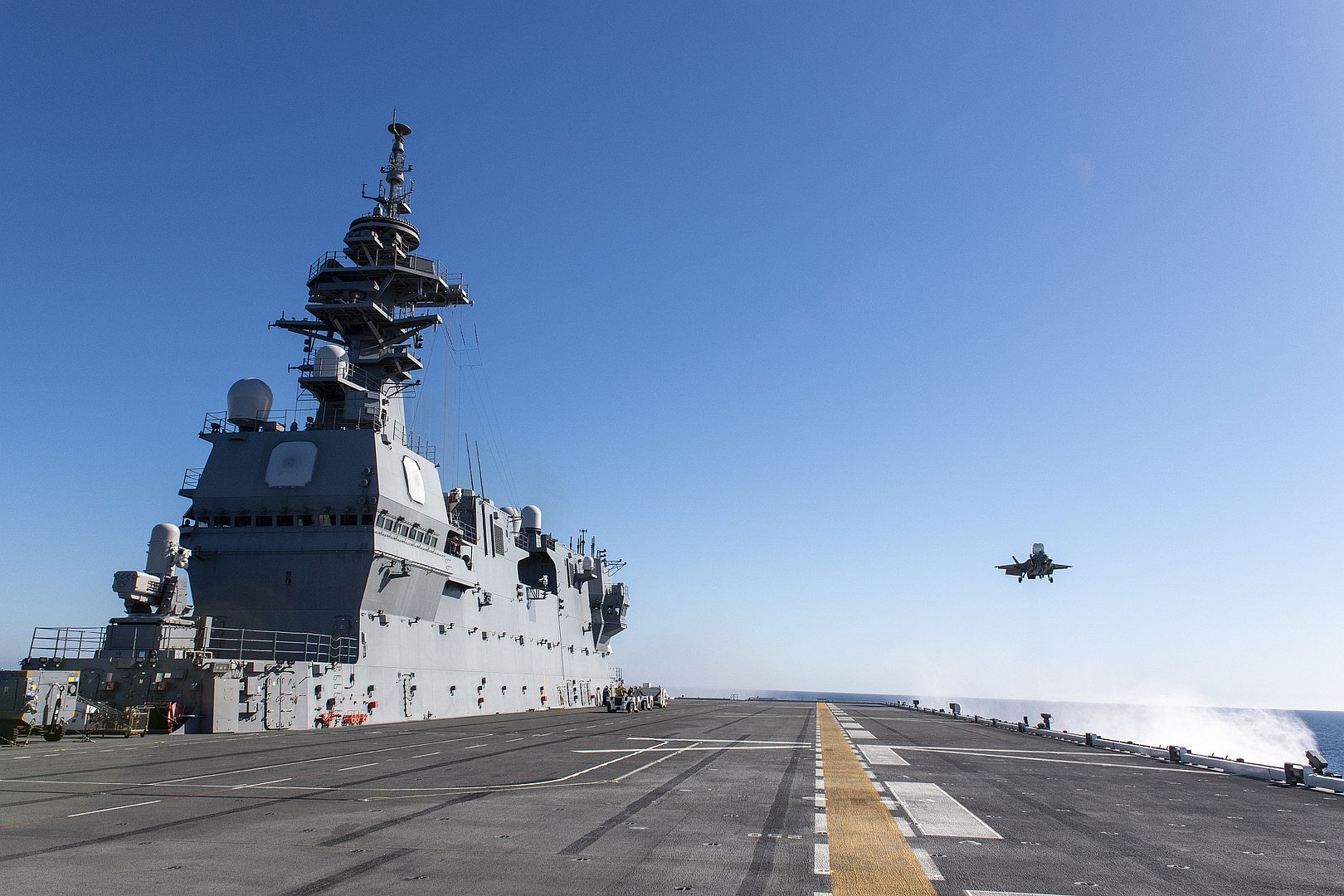

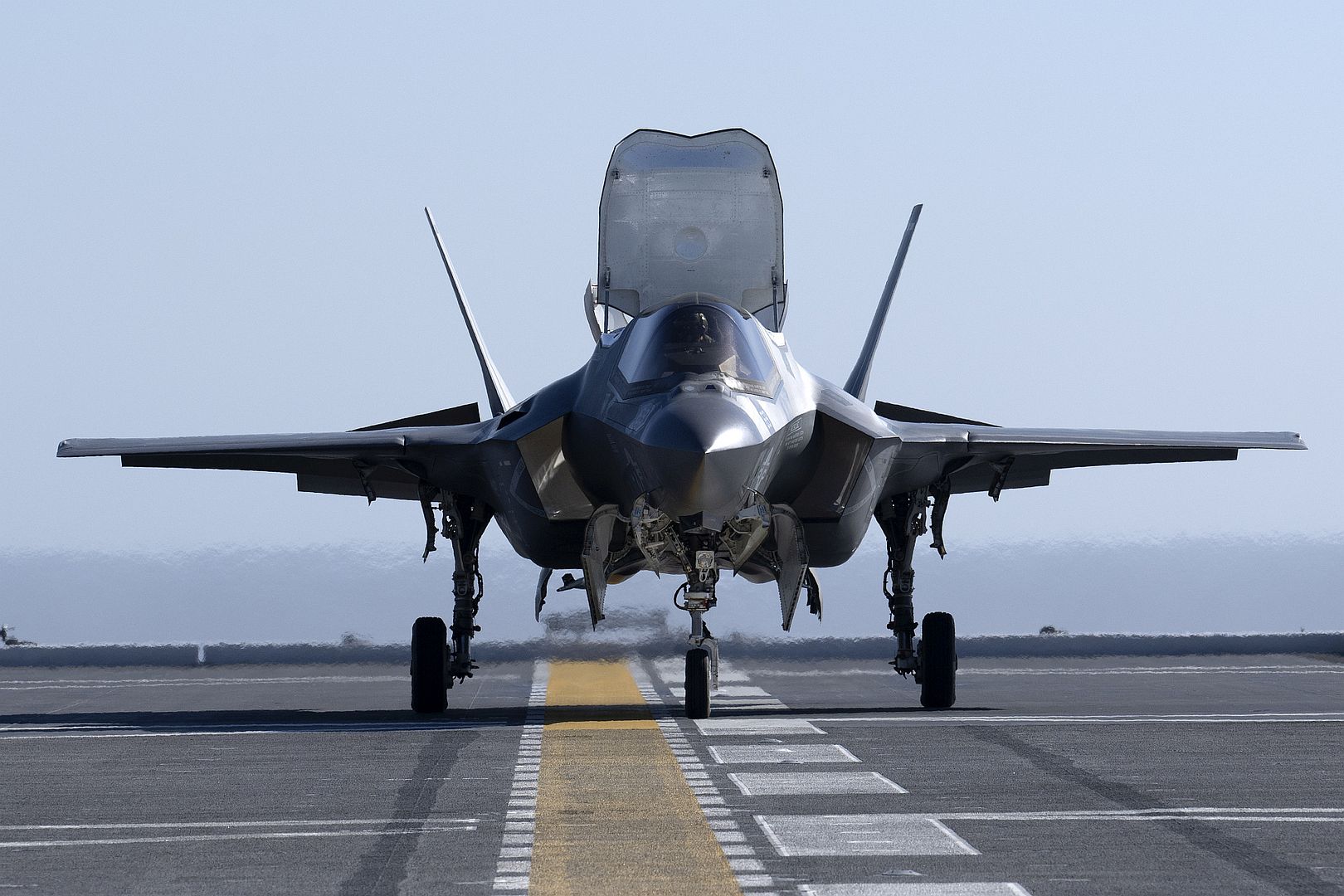
U.S. Air Force Airmen assigned to the 4th Fighter Wing perform maintenance on an F-15E Strike Eagle during a “Super Nights” training event at Seymour Johnson Air Force Base, North Carolina, Oct. 9, 2024. The purpose of Super Nights is to synchronize student and instructor pilots from various squadrons and enhance the progression of night flying portion of the training syllabus for student aircrew. (U.S. Air Force photo by Tech. Sgt. Christopher Hubenthal)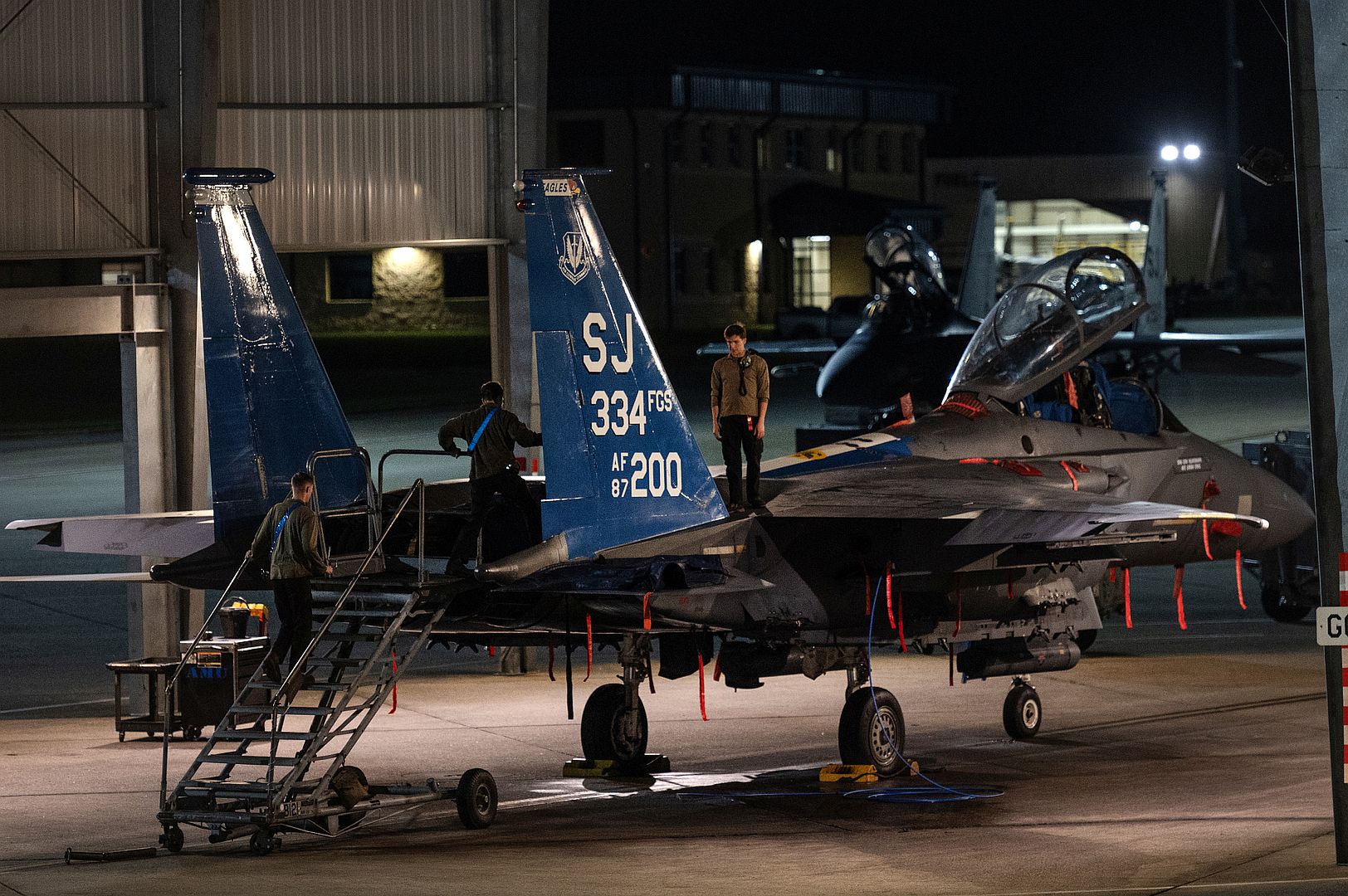
PALMDALE, Calif., -- In a big win for U.S. Air Force readiness, the “Spirit of Nebraska” a B-2 bomber, returned to operations 91 days ahead of schedule, after completing programmed depot maintenance (PDM) here on Oct. 15, 2024.
Previously, it has taken B-2s approximately 470 days to go through PDM. However, the “Spirit of Nebraska” was able to get through PDM in only 379 days due to several changes the Air Force Life Cycle Management Center’s Bombers Directorate made to improve efficiency.
“Bringing these jets into PDM, getting the work done quickly, and delivering them back to the warfighter early is a big deal,” said Col. Francis Marino, B-2 System Program Manager within the Bombers Directorate. “This accomplishment would not have been possible without the great partnership between our team, Air Force Global Strike Command and Northrop Grumman.”
PDM occurs every nine years, and is an exhaustive inspection, overhaul, and repair of the bomber, with much of the work focused on restoration of the bomber’s Low Observable (LO) or stealth materials.
“PDM’s main objective is to accomplish LO restoration of the aircraft,” said Staci Gravette, B-2 PDM Program Manager. “Since the aircraft is stripped [for LO restoration] we are also able to do other maintenance work as well.”
One of the ways the Air Force was able to reduce PDM time for the aircraft, was to conduct the fuel system inspection earlier in the PDM cycle.
In the past, if an inspection identified a fuel leak, the team would have to pull parts and materials back off the aircraft, repair the leak, and redo previous work, often causing a 45-day delay. Moving the fuel system inspection up in the PDM cycle, eliminated duplicate work and delay.
Additionally, the team was able to reduce time by conducting pre-inspections of the aircraft before it arrived at PDM. This allowed them to catch issues ahead of time, order parts, and work specific repairs into the schedule.
“As any aircraft continues to age, you're going to see more and more issues that need to be repaired on a PDM line,” Marino said. “The pre-inspection is great because it reduces the number of surprises at PDM.”
Maintaining the B-2s dominance is a priority for the Bombers Directorate. Improving the PDM process and other sustainment and modernization efforts the directorate is leading, ensures the aircraft continues to operate.
“Nothing else can even come close,” said Shawn Clay, B-2 Product Support Manager, referring to the capabilities of the B-2. “When you take into account that this is 1980s technology [on the aircraft] that is still leading the world today, it just speaks volumes to the amazing aircraft weapon system that it is. On top of that, the actual mission – holding our enemies at bay and giving them a moment of pause … like the thought of a B-2 coming in and before you even know it’s there, the fight’s all over.”
“Until the B-21 is fielded, the B-2 is the world’s only long-range penetrable strike bomber and the only aircraft that can do what we need it to do today,” added Marino. “As long as the aircraft is operational and our adversaries continue to come out with new and advanced weaponry across the electromagnetic spectrum, we’re going to have to continuously invest in the B-2s lethality, its survivability, and of course its readiness. The work we’re doing on the PDM line will play a key role in all of this.”
(Air Force photo by Christian Turner)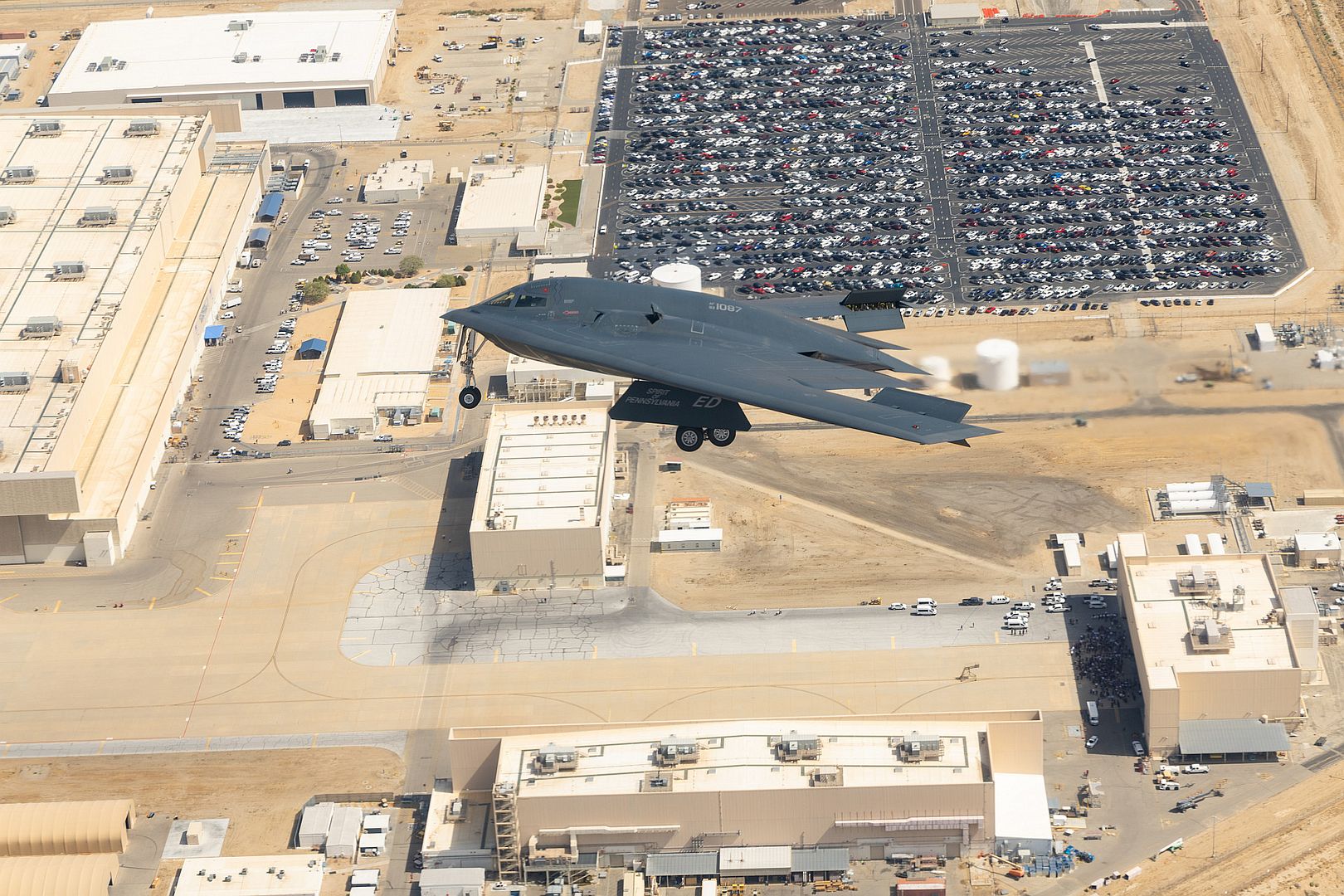
AURORA, Colo. – Oct. 21, 2024 – Phase two of Northrop Grumman Corporation’s (NYSE: NOC) Deep Sensing and Targeting (DSaT) system was successfully demonstrated at Vanguard 24, an annual capstone experiment hosted by the U.S. Army. DSaT gathers space-based data for long-range precision fires while airborne, helping bridge specific capability gaps and future warfighting requirements by expanding mission effectiveness and standoff range for Army platforms.
During the test event, Northrop Grumman:
Combined multiple space-based sensor data to provide targeting intelligence to the Army while in flight to achieve deep strike objectives
Utilized tactical radios for Line of Sight and Beyond Line of Sight communications to seamlessly integrate into existing and future networks
Incorporated automation and intelligence analysis services to improve the efficiency, accuracy and speed of the mission
The DSaT system, housed on a civilian aircraft (right), was successfully showcased at Vanguard 24, aligning with the Army’s Global 6500 Jet Trainer (left). Vanguard provides a venue to test emerging technologies, tools and concepts that address specific capability gaps and future warfighting requirements. (Photo Credit: Northrop Grumman)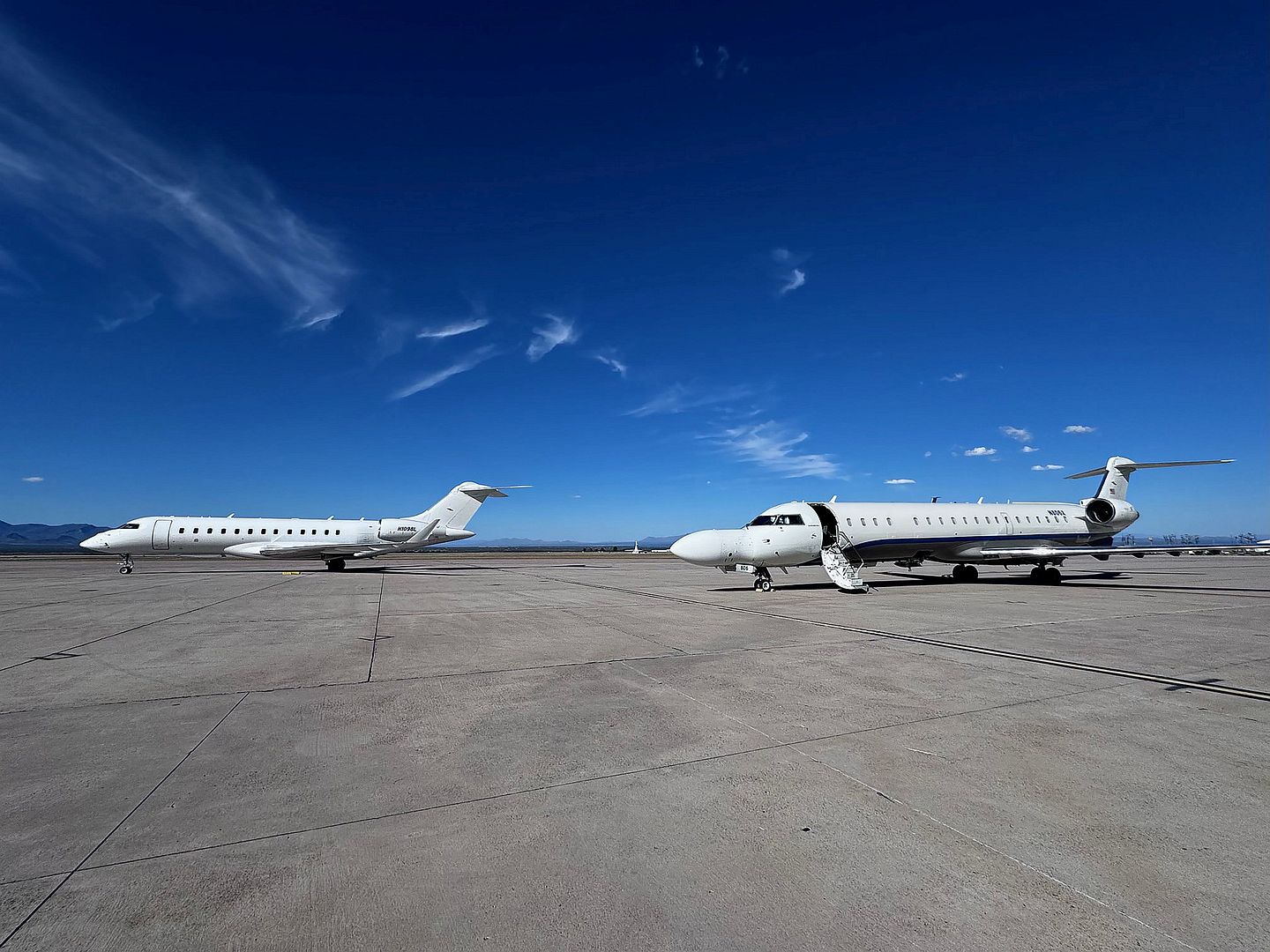
DUBAI, Oct. 21, 2024 /PRNewswire/ -- Boeing [NYSE: BA] and Emirates SkyCargo today announced an order for five more of the world's largest and longest-range twin-engine freighter, building on its earlier purchase of five 777 Freighters. The latest order, which was finalized in September and listed as unidentified on Boeing's Orders and Deliveries website, brings Emirates' order book to 249 Boeing widebody airplanes, including 14 777 Freighters.
As the cargo division of the world's largest international airline, Emirates SkyCargo plans to operate 21 777 Freighters in the coming years ─ nearly doubling its current fleet of 11 freighters as the carrier continues to expand capacity.
"We're investing in new freighter aircraft to meet surging demand and provide our customers around the world with even more flexibility, connectivity and options to leverage market opportunity," said HH Sheikh Ahmed bin Saeed Al Maktoum, Chairman and Chief Executive, Emirates Airline and Group. "Demand for Emirates' air cargo services has been booming. This reflects Dubai's growing prominence as a preferred and trusted global logistics hub, and also the success of Emirates SkyCargo's bespoke solutions that address the needs of shippers in different industry sectors."
The 777 Freighter can fly farther (9,200 kilometers / 4,970 nautical miles) and carry more freight (102 tonnes) than any other twin-engine cargo jet today. This capability enables operators to fly more freight on more nonstop routes with better operating economics, connecting high-value cargo markets such as the Middle East with the U.S. and Europe.
"Emirates continues to set the direction for our industry and we deeply appreciate the trust they have placed in the Boeing widebody family to serve as the backbone of their global fleet," said Stephanie Pope, president and CEO of Boeing Commercial Airplanes. "We are proud to support Emirates SkyCargo's growth as it relies on the performance and versatility of our 777 Freighter to further connect the world."
Boeing's Commercial Market Outlook forecasts an additional 2,845 freighters will enter service over the next 20 years to support growing global trade and e-commerce demand. The 777 Freighter is Boeing's best-selling freighter of all time, with 275 delivered to date. As the market leader in freighter airplanes, Boeing provides more than 90% of the worldwide dedicated freighter capacity, including new production and converted airplanes.
As a leading global aerospace company, Boeing develops, manufactures and services commercial airplanes, defense products and space systems for customers in more than 150 countries. As a top U.S. exporter, the company leverages the talents of a global supplier base to advance economic opportunity, sustainability and community impact. Boeing's diverse team is committed to innovating for the future, leading with sustainability, and cultivating a culture based on the company's core values of safety, quality and integrity. Boeing's relationship with the Middle East extends back to 1945. Since then, Boeing has established a number of offices across the region including in Riyadh, Dubai, Abu Dhabi, Doha and Kuwait. Join our team and find your purpose at boeing.com/careers.
October 21, 2024
Business jets and services
Bombardier’s Global 8000, the World’s Fastest Business Jet, Speeds Forward as Manufacturing Begins
Bombardier manufacturing sites in Saint-Laurent (Quebec), Red Oak (Texas) and Querétaro (Mexico) have begun to manufacture key components for the 1st Global 8000 production aircraft*
The Global 8000 will be the fastest civil aircraft since the Concorde, with an industry-leading top speed of Mach 0.94 and an impressive range of 8,000 nautical miles, making it the ultimate business aircraft
Bombardier’s new ultra-long range business jet continues to excel with flight testing fully on track and initial certification agency flight tests conducted
Bombardier today announced that manufacturing of major structural components for the 1st production jet is underway across Bombardier facilities in Saint-Laurent (Québec), Red Oak (Texas) and Querétaro (Mexico). Set to enter into service in the second half of 2025, the Global 8000 private jet will stand alone as the world’s fastest and longest-range purpose-built business jet, innovatively crafted with the smoothest ride and the industry’s healthiest cabin. The aircraft also continues to impress in flight testing, achieving positive results throughout its campaign.
“The manufacturing process for what will be the industry’s fastest business jet, the impressive ultra-long-range Global 8000, has begun,” said David Murray, Executive Vice President, Manufacturing, IT and Bombardier Operational Executive System. “Our engineering and production teams continue to demonstrate unmatched levels of expertise, pride and innovation, qualities that are an intrinsic part of Bombardier’s DNA. Our people’s mastery is behind the progress we are making at our production sites and underscores Bombardier’s culture of excellence, as well as our commitment to elevating the world of aviation.”
“Our customers will soon be able to step aboard an aircraft that sets the standard as the fastest and longest-range purpose-built business aircraft in history, allowing them to reach destinations farther and faster than ever before,” added Jean-Christophe Gallagher, Executive Vice President, Aircraft Sales and Bombardier Defense. “Connectivity, comfort and arriving refreshed are just as important today than speed and range, which is why we are proud that the Global 8000 will boast the best-in-class cabin altitude and offer Bombardier’s signature smooth ride.”
The aircraft will feature an industry-leading range of 8,000 nautical miles and an unequaled top speed of Mach 0.94, unlocking more city pairs than ever before including Dubai-Houston, Singapore-Los Angeles, London-Perth and many others. With four true living spaces and a separate crew rest area, the Global 8000 aircraft will be capable of flying up to 8,000 nautical miles non-stop. The discerning business jet will also feature the most generous cabin size in its class along with the industry’s heathiest cabins.
This incredible business aircraft will also deliver in terms of its in-flight experience. The luxurious cabin will incorporate revolutionary features introduced on the Global 7500 aircraft that dramatically improve passenger comfort including an available Principal Suite with a full-size bed and a stand-up shower in the En-suite. Revolutionary cabin advancements will also include entertainment control and connectivity, the intuitive nice Touch CMS and OLED touch dial and Bombardier’s l’Opéra directional audio sound system to ensure passengers receive an unrivalled cabin experience.
In anticipation of the planned entry-into-service of the Global 8000 business jet, an upgrade is currently available for purchase by existing Global 7500 aircraft clients through one of Bombardier's aircraft service centres. Benefits of the upgrade will include improving the aircraft's top speed, increasing its range and providing passengers with exceptionally low cabin altitudes.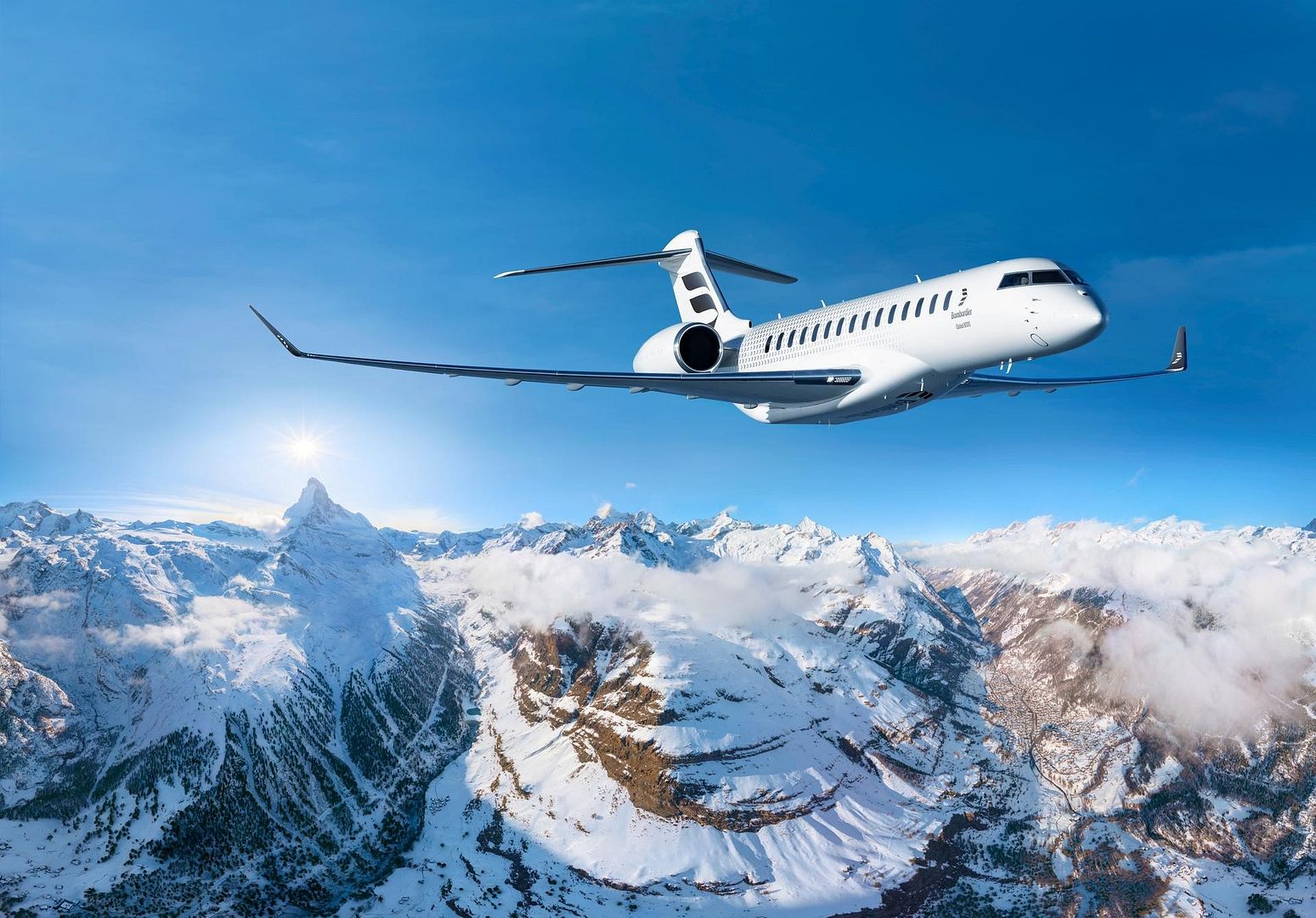
The RAF’s first The Boeing Company Wedgetail Airborne Early Warning and Control aircraft has received its new paint scheme. ????️
Wedgetail WT001 rolled out of the hangar at London Southend Airport in the markings of VIII Squadron, based at RAF Lossiemouth, who will operate the new aircraft in service.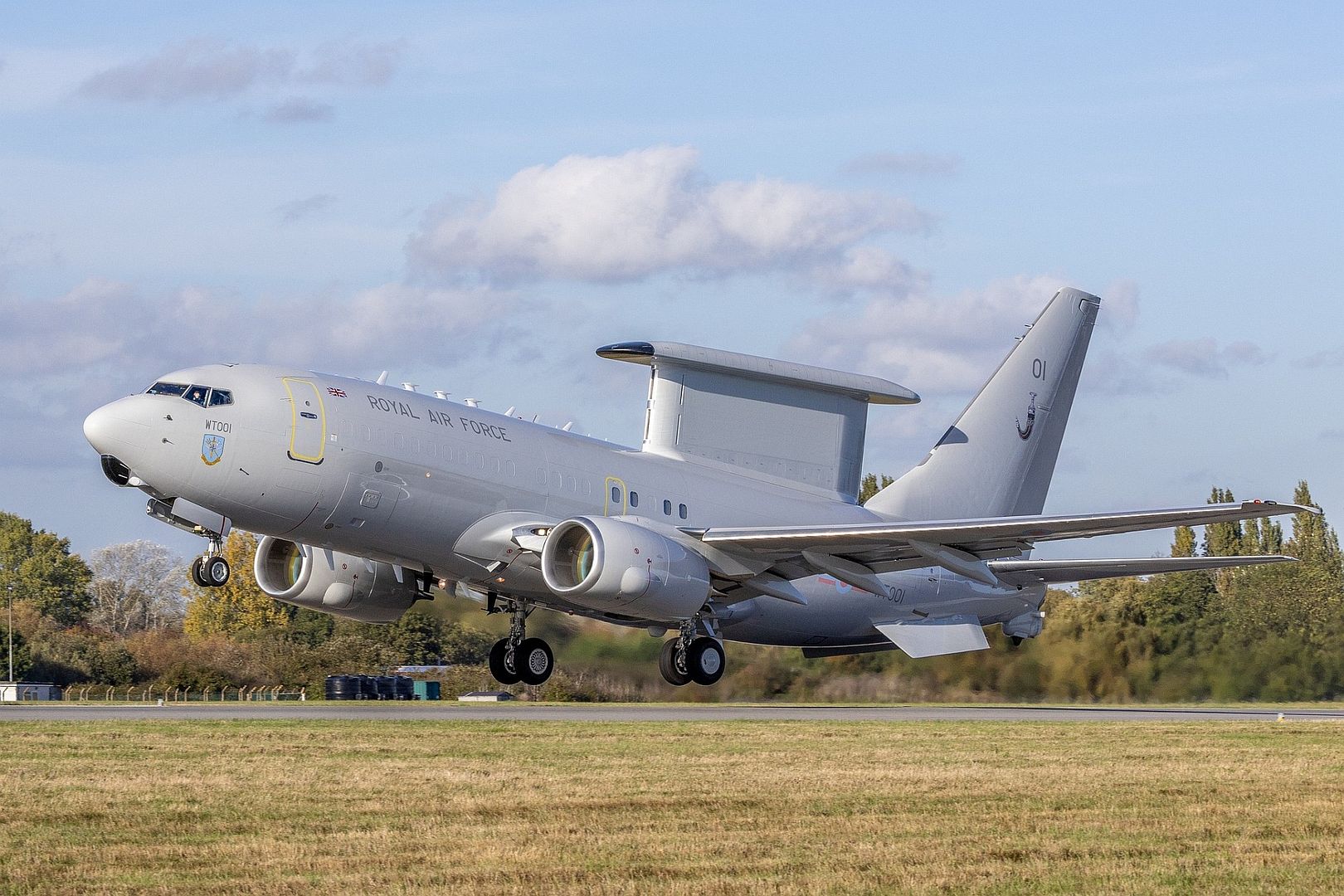
This milestone involved an extensive team comprising personnel from the RAF, Boeing & Defence Equipment & Support.
(Photos courtesy of the RAF)
-
10 months ago
 Main AdminU.S. Air Force Maj. Melanie “Mach” Kluesner, the pilot for the F-35A Demonstration Team, performs aerial maneuvers in a USAF F-35A Lightning II during an airshow at Jacksonville Naval Air Station, Florida, on 20 October, 2024. The Demo Team performs at various airshows across the globe to display the power, agility, and lethality of America's 5th generation fighter jet. (U.S. Air Force photo by Senior Airman Nicholas Rupiper)
Main AdminU.S. Air Force Maj. Melanie “Mach” Kluesner, the pilot for the F-35A Demonstration Team, performs aerial maneuvers in a USAF F-35A Lightning II during an airshow at Jacksonville Naval Air Station, Florida, on 20 October, 2024. The Demo Team performs at various airshows across the globe to display the power, agility, and lethality of America's 5th generation fighter jet. (U.S. Air Force photo by Senior Airman Nicholas Rupiper)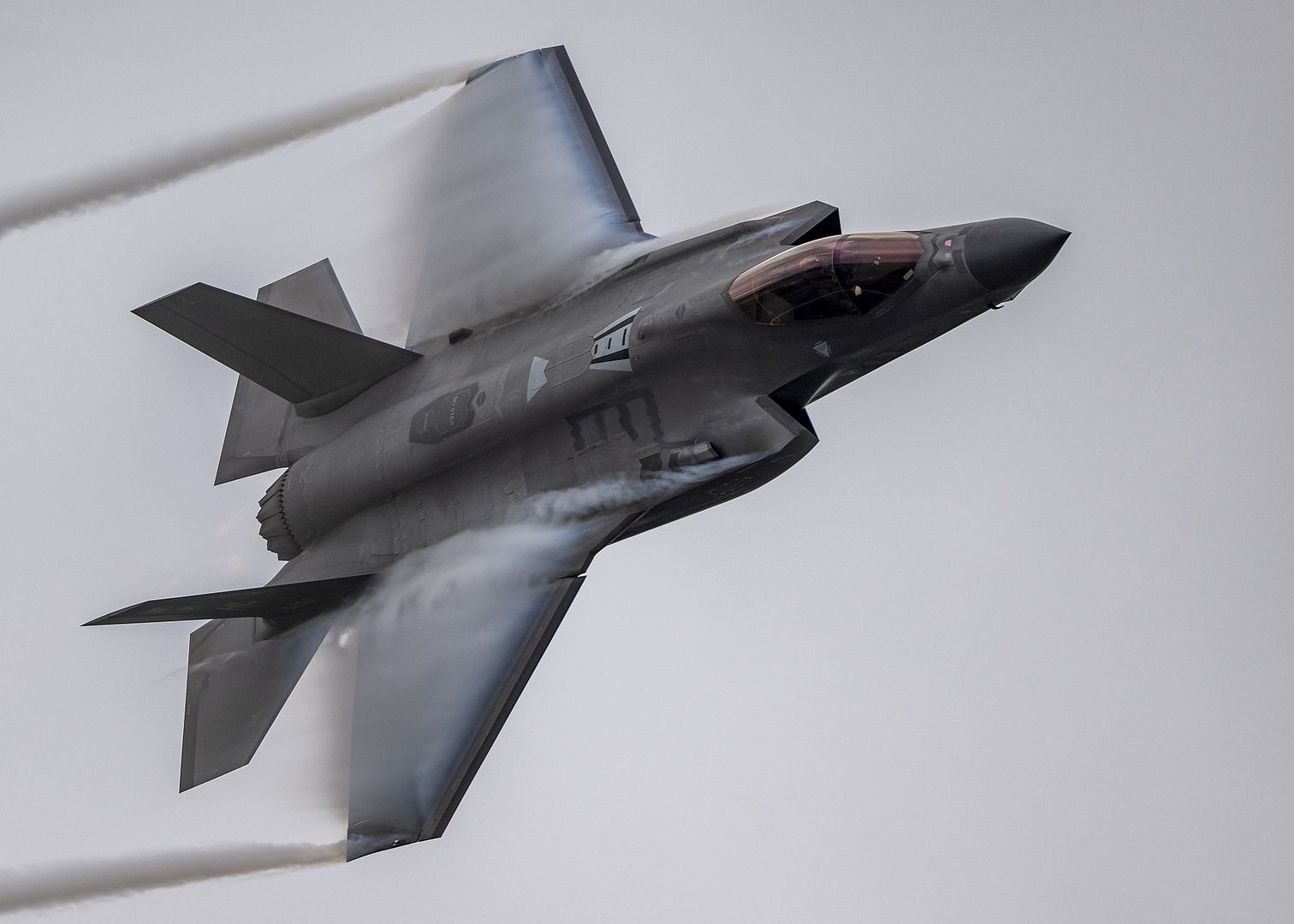
A crew chief with the 121st Air Refueling Wing inspects a KC-135 Stratotanker at Rickenbacker Air National Guard Base, Columbus, Ohio, October 20, 2024. Crew chiefs inspect the KC-135 Stratotanker before take-off, grounded, and post-landing to ensure the aircraft is mission-ready and capable of being anywhere, anytime, to provide aerial refueling. (U.S. Air National Guard photo by Senior Airman Ivy Thomas)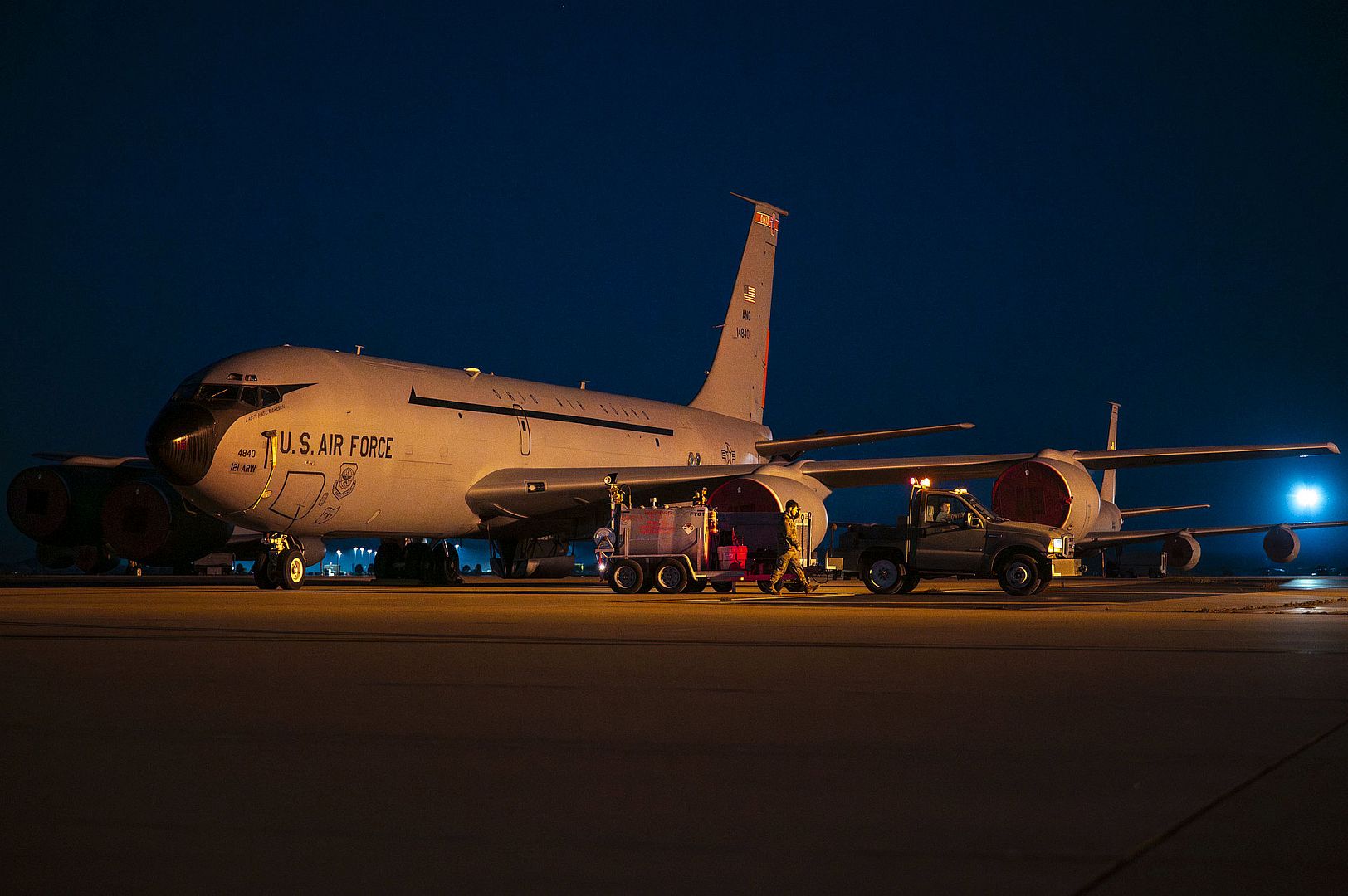
An F-35 Lightning II test pilot from Air Test and Evaluation Squadron Two Three performs a short takeoff in an F-35B aircraft during carrier qualifications aboard Japan’s Izumo-class multi-functional destroyer JS Kaga (DDH-184) Oct. 21, 2024, off the southern coast of California. Laser is flying the short takeoff and vertical landing variant of the 5th generation aircraft for developmental test aboard the Japan Maritime Self-Defense Force’s largest ship. A flight test team from the F-35 Patuxent River Integrated Test Force is aboard to certify the destroyer’s modifications that will support fixed-wing operations from the ship. Data that testers gather during these sea trials will be analyzed and eventually inform decisions to enhance the capabilities of the Maritime Self-Defense Force as well as contribute to improved interoperability between Japan and the U.S. Japan is an F-35 Joint Program Office foreign military sales customer planning to buy 42 F-35Bs.
(Photos by Dane Wiedmann)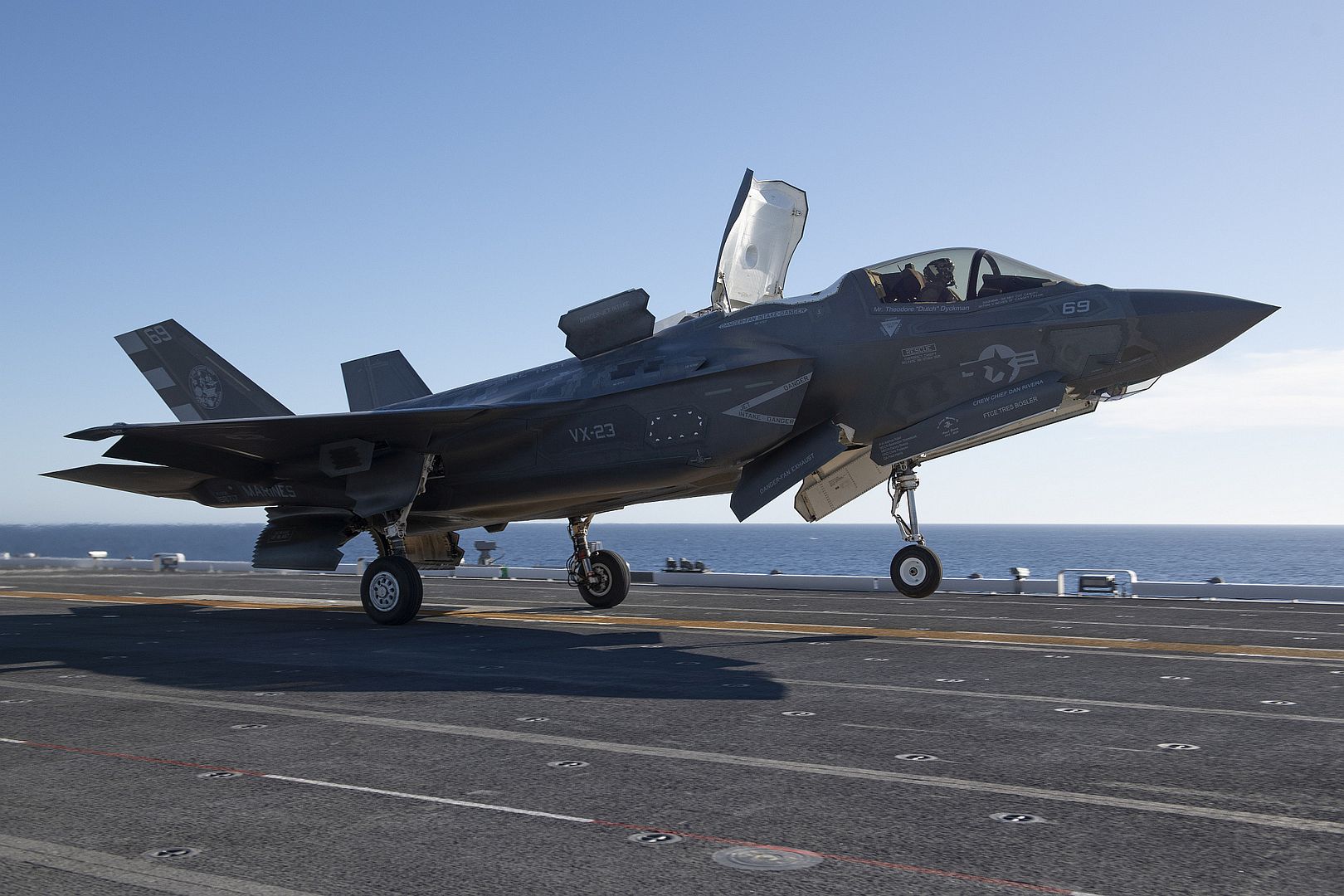
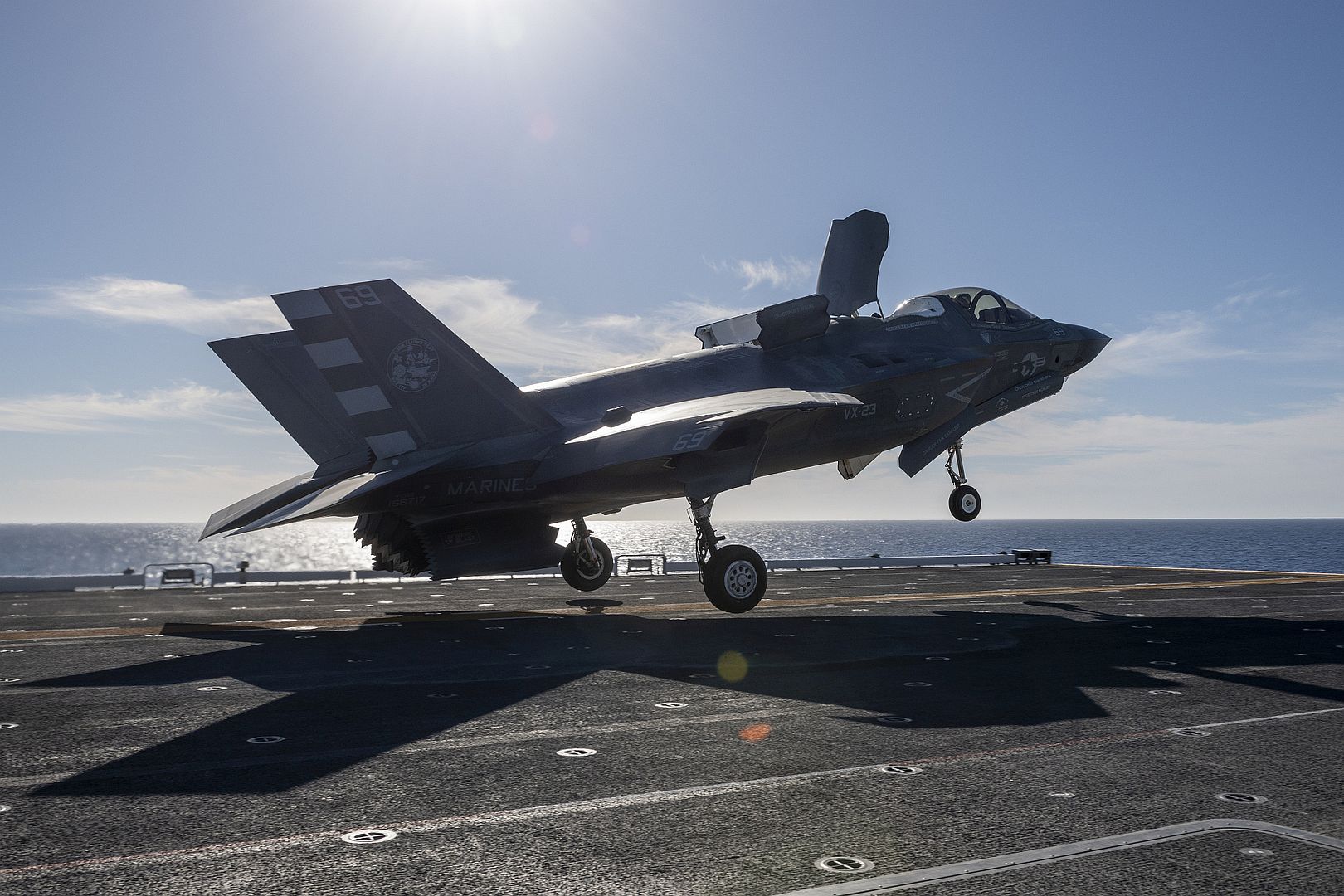
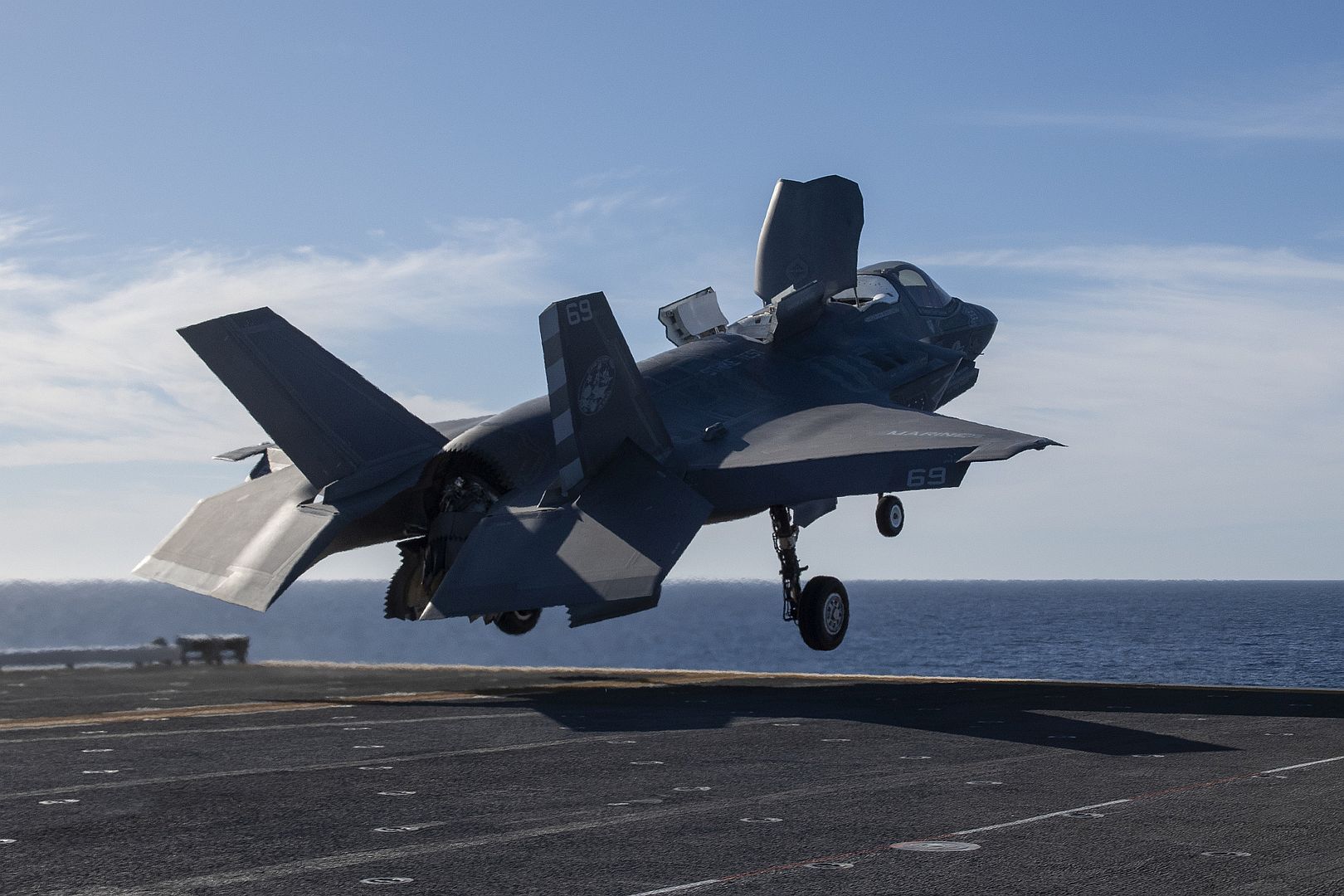
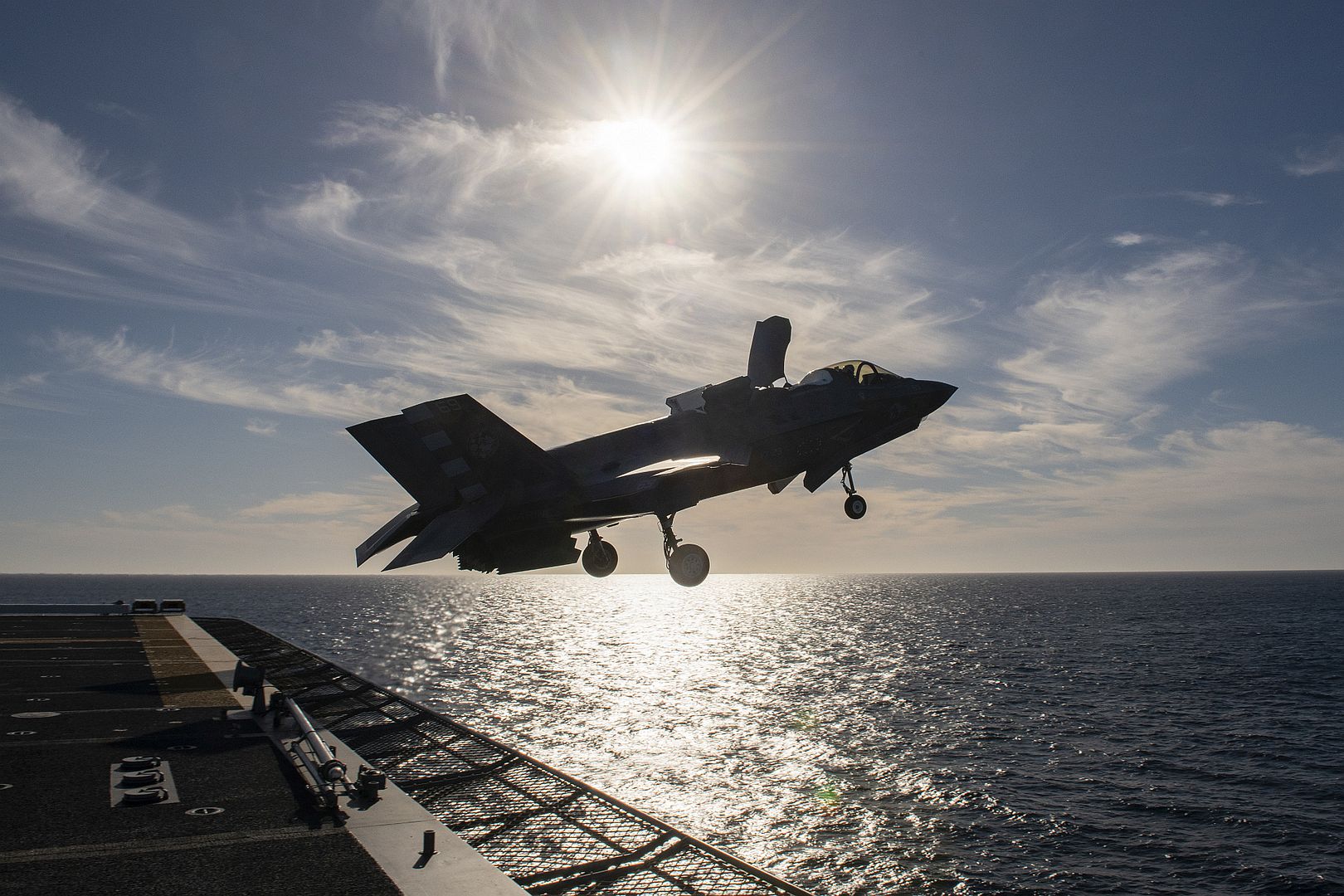
ATLANTIC OCEAN (Oct. 21, 2024) -- An F/A-18E Super Hornet, attached to the "Golden Warriors" of Strike Fighter Squadron (VFA) 87, lands on the flight deck of the world's largest aircraft carrier, USS Gerald R. Ford (CVN 78), Oct. 21, 2024. USS Gerald R. Ford, the flagship of the Gerald R. Ford Carrier Strike Group, is currently underway in the U.S. 2nd Fleet area of operations, conducting Surface Warfare Advanced Tactical Training (SWATT). SWATT is the surface force’s premiere advanced tactical training exercise that increases warfighting capability
and tactical proficiency across all domains. (U.S. Navy photo by Mass Communication Specialist Seaman Tajh Payne)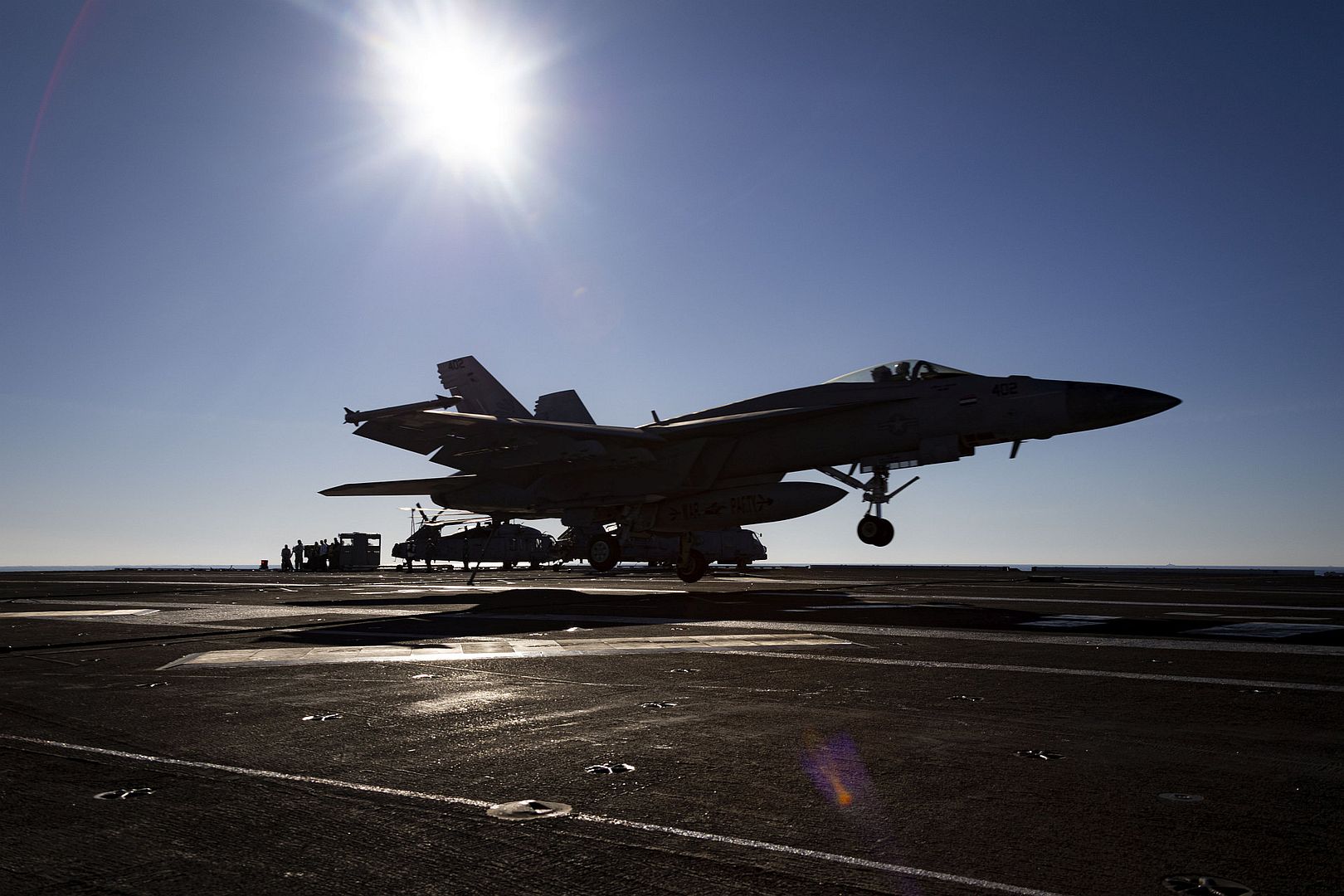
F-16Cs from Edwards AFB, CA practice formation flying September 30, 2024 not far from Death Valley
(Air Force photos by Todd Schannuth)
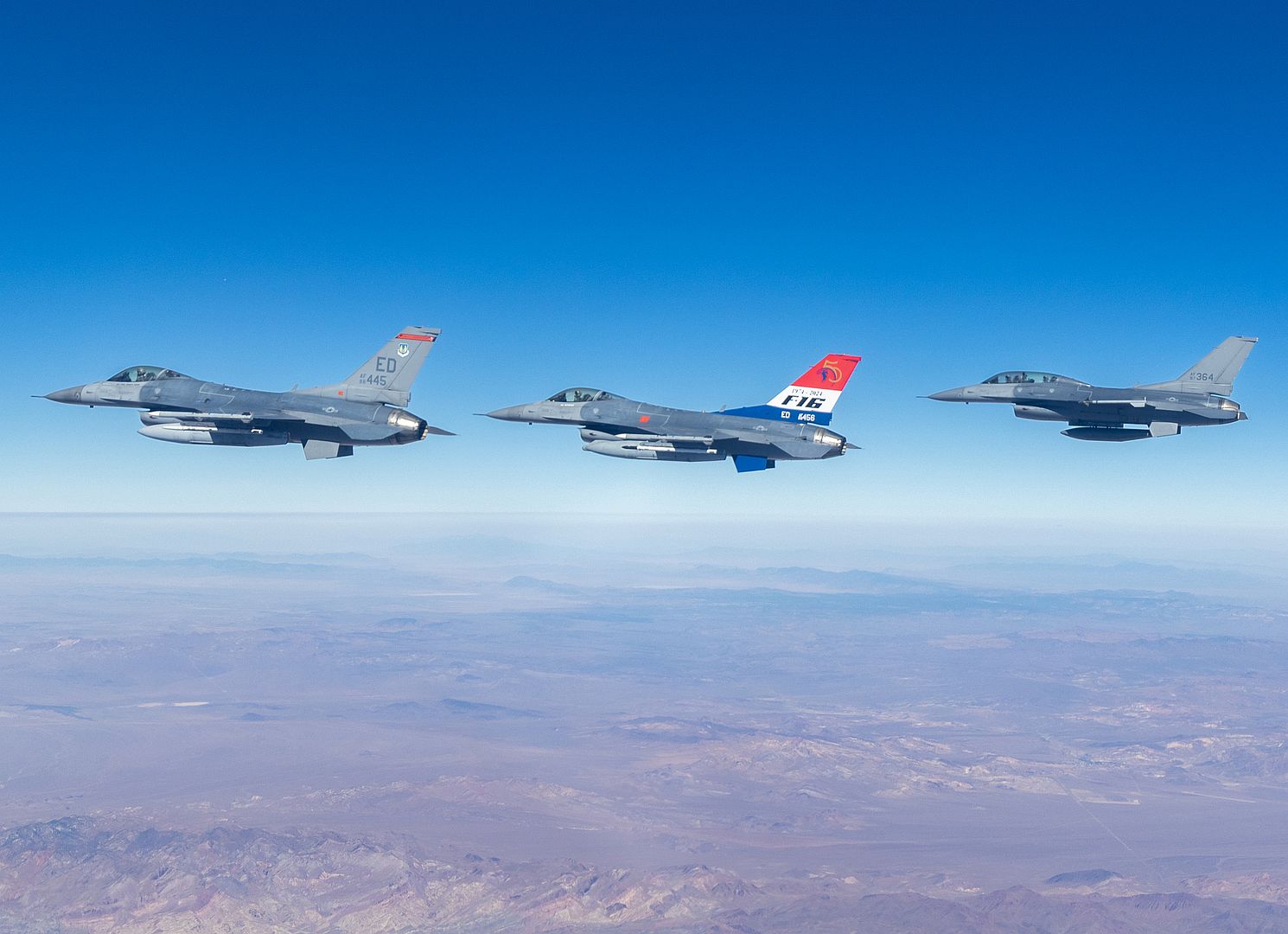
LAS VEGAS (October 21, 2024) – Textron Aviation today announced that its Cessna Citation CJ4 Gen3 prototype aircraft took to the skies for the first time in early October. The announcement of this milestone flight follows the company’s unveiling today of three new Gen3 products to its Citation light jet family at the National Business Aviation Association - Business Aviation Convention & Exhibition (NBAA-BACE) in Las Vegas. These next-generation business jets -- the Citation M2 Gen3, CJ3 Gen3 and CJ4 Gen3 -- build upon the legacy of the Citation family, which has long been recognized as the most popular line of business jets worldwide.
The Cessna Citation CJ4 Gen3 is designed and manufactured by Textron Aviation Inc., a Textron Inc. (NYSE:TXT) company.
“The first flight of the CJ4 Gen3 prototype aircraft marks a major step forward in the flight test program, paving the way for future certification and delivery to customers,” said Chris Hearne, senior vice president, Engineering & Programs. “Our flight test pilots reported that the aircraft flew well and performed to the levels we anticipated. The program will now move into a rigorous testing phase, ensuring the aircraft meets the highest performance standards.”
Piloted by senior test pilot Corey Eckhart and chief test pilot Ed Wenninger, the CJ4 Gen3 prototype aircraft, powered by two Williams International FJ44-4A turbofan engines, took off from the company’s west Wichita campus at Eisenhower National Airport. The team evaluated the new avionics systems, along with the propulsion, environmental and flight control systems, during the 1 hour and 47-minute flight.
The Citation CJ4 Gen3 is the first business jet to announce inclusion of the all-new Garmin G3000 PRIME next-generation avionics suite. PRIME brings exceptional control to the pilot experience, with a streamlined touchscreen and smoother flight deck flow, reducing pilot workload. Additionally, the CJ4 Gen3 includes Garmin Autothrottles and Garmin Emergency Autoland, further enhancing operational efficiency.
The CJ4 Gen3 prototype aircraft will continue in the testing program as the team’s focus turns to aircraft systems, engine, avionics and overall performance. The aircraft is expected to enter into service in 2026.
About the Cessna Citation CJ4 Gen3
The Cessna Citation CJ4 Gen3 is the largest Citation aircraft in the light jet segment. The single-pilot certified aircraft combines superior speed, range and operating economics compared to larger aircraft, making it the ideal platform for owner/operators or corporate missions. The CJ4 is valued by customers around the world for luxury and productivity, as well as a wide range of missions including air ambulance, maritime patrol, search and rescue and aerial survey.
The Citation CJ4 Gen3 is expected to feature a maximum range of 2,165 nm and a maximum payload of 2,200 pounds. With seating for up to 11 occupants and a 1,040-pound baggage capacity, the aircraft offers superior performance and versatility.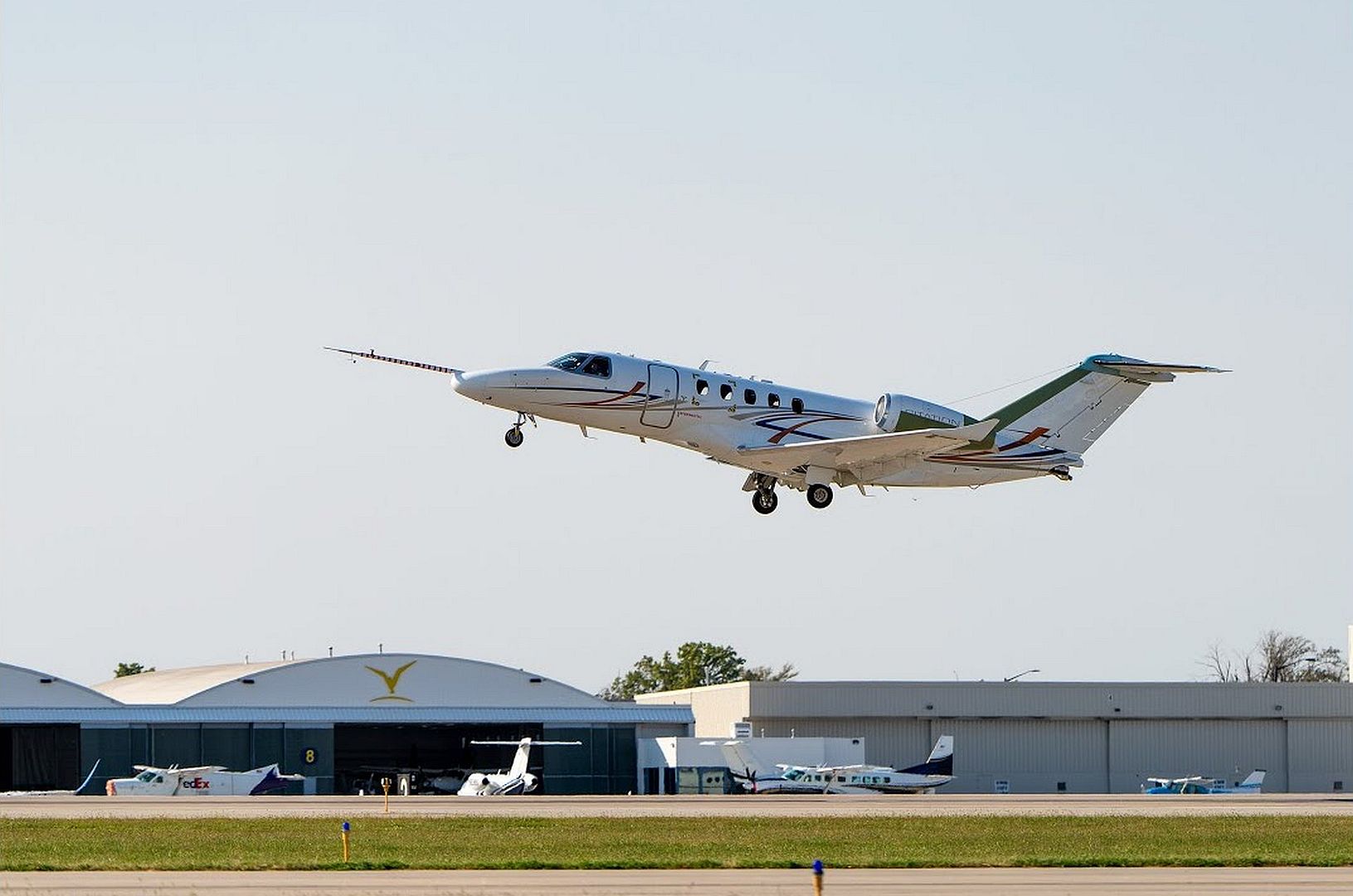
The RAAF have successfully completed Exercise Elangaroo 24 in Malaysia.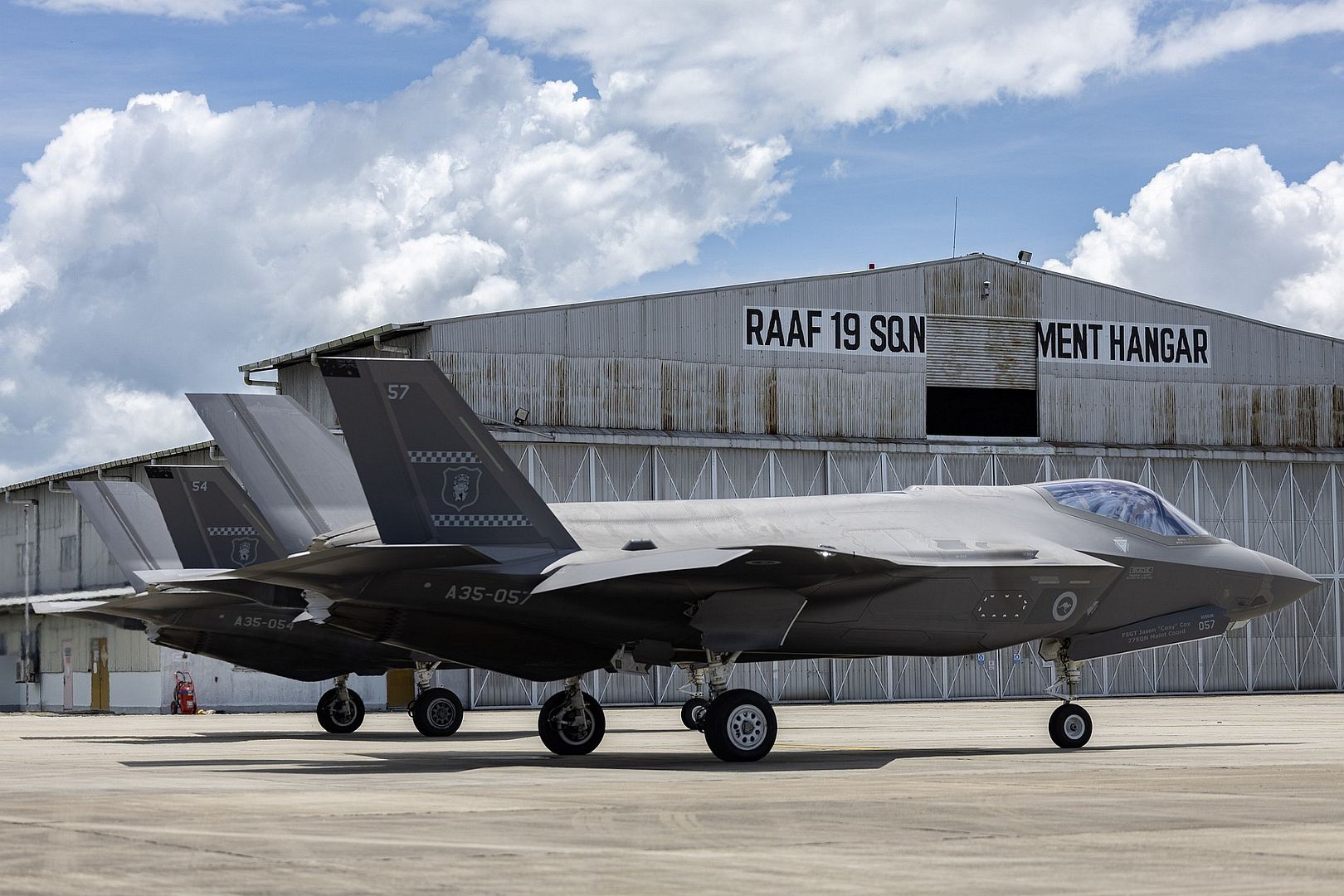
During the exercise the two countrys continued to strengthen there friendship and enhance there ability to work together. From intense air combat training missions to agile combat employment operations and combat support operations, every moment on this exercise has brought them closer together.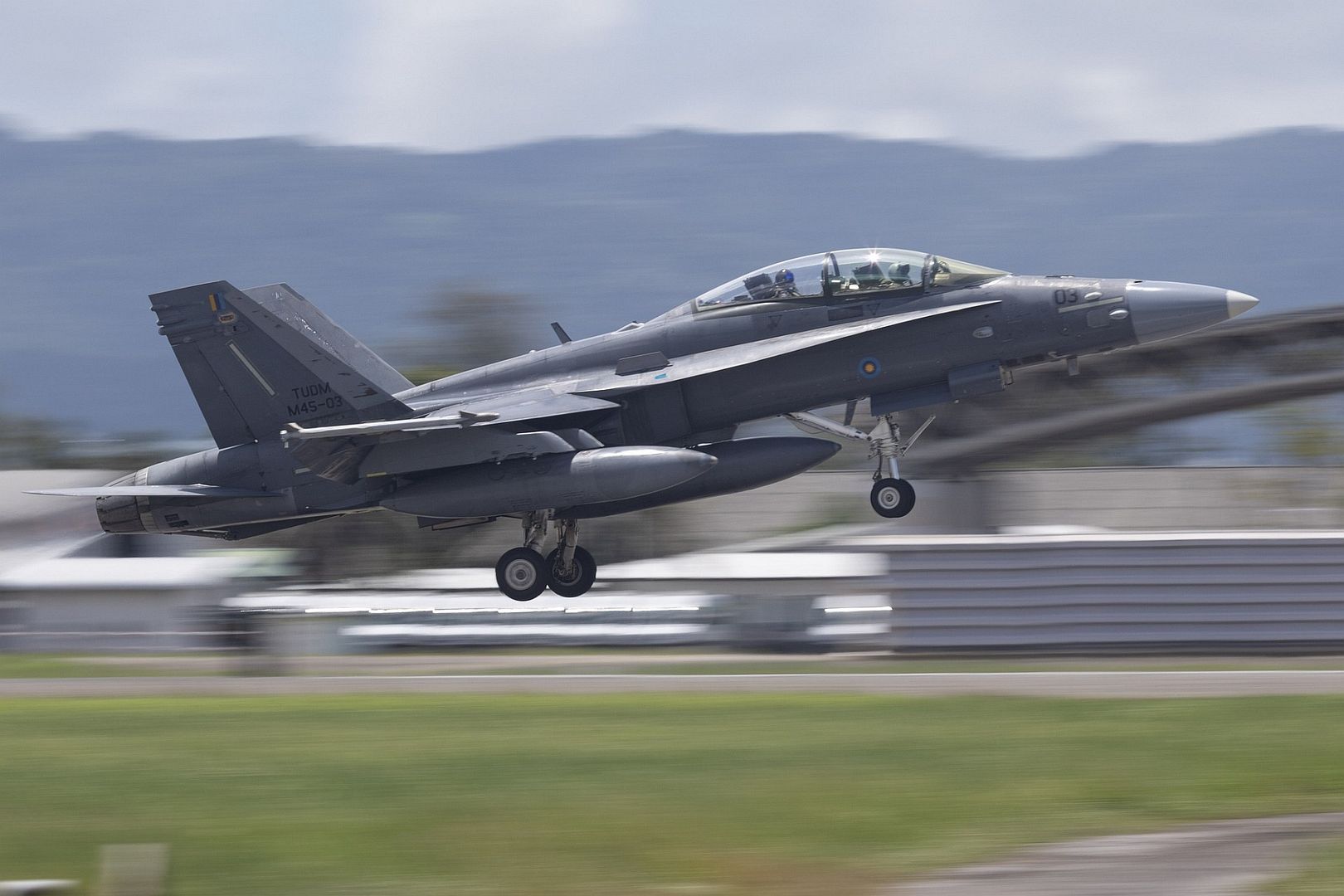
(Photos courtesy of the RAAF)
-
10 months ago
 Main AdminAn AC-130J Ghostrider assigned to the 16th Special Operations Squadron takes off from the runway at Cannon Air Force Base, New Mexico, Oct. 22, 2024. The AC-130J provides ground forces an expeditionary, direct-fire platform that is persistent, ideally suited for urban operations and delivers precision low-yield munitions against ground targets. (U.S. Air Force photo by Staff Sgt. Kevin Williams)
Main AdminAn AC-130J Ghostrider assigned to the 16th Special Operations Squadron takes off from the runway at Cannon Air Force Base, New Mexico, Oct. 22, 2024. The AC-130J provides ground forces an expeditionary, direct-fire platform that is persistent, ideally suited for urban operations and delivers precision low-yield munitions against ground targets. (U.S. Air Force photo by Staff Sgt. Kevin Williams)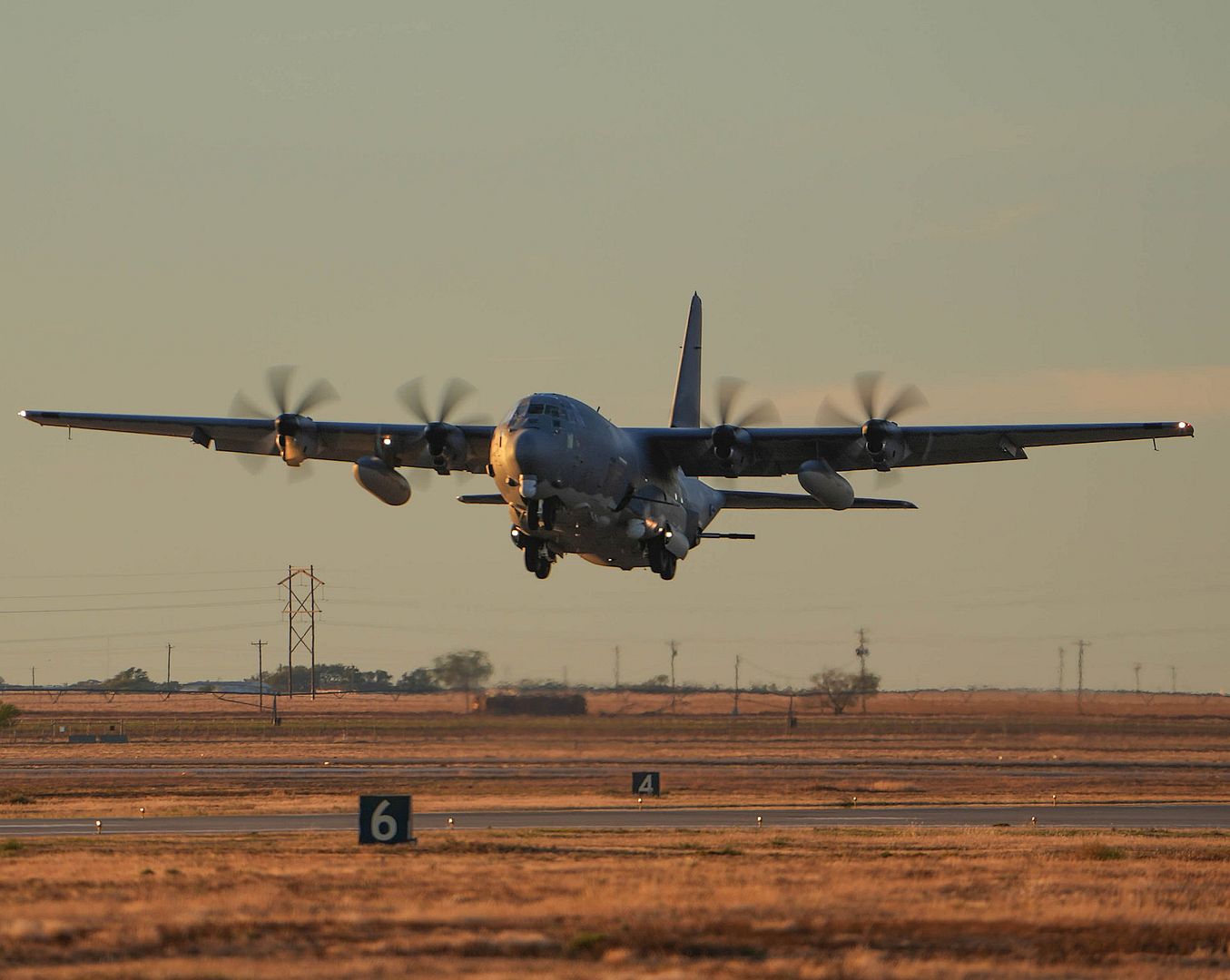
A U.S. Air Force A-10 Thunderbolt II assigned to the 23rd Fighter Group, Moody Air Force Base, Georgia, approaches a KC-135 Stratotanker assigned to MacDill AFB for aerial refueling over Florida, Oct. 22, 2024. The KC-135 provides the core aerial refueling capability for the U.S. Air Force and has excelled in this role for more than 60 years. (U.S. Air Force photo by Tech. Sgt. Alexander Cook)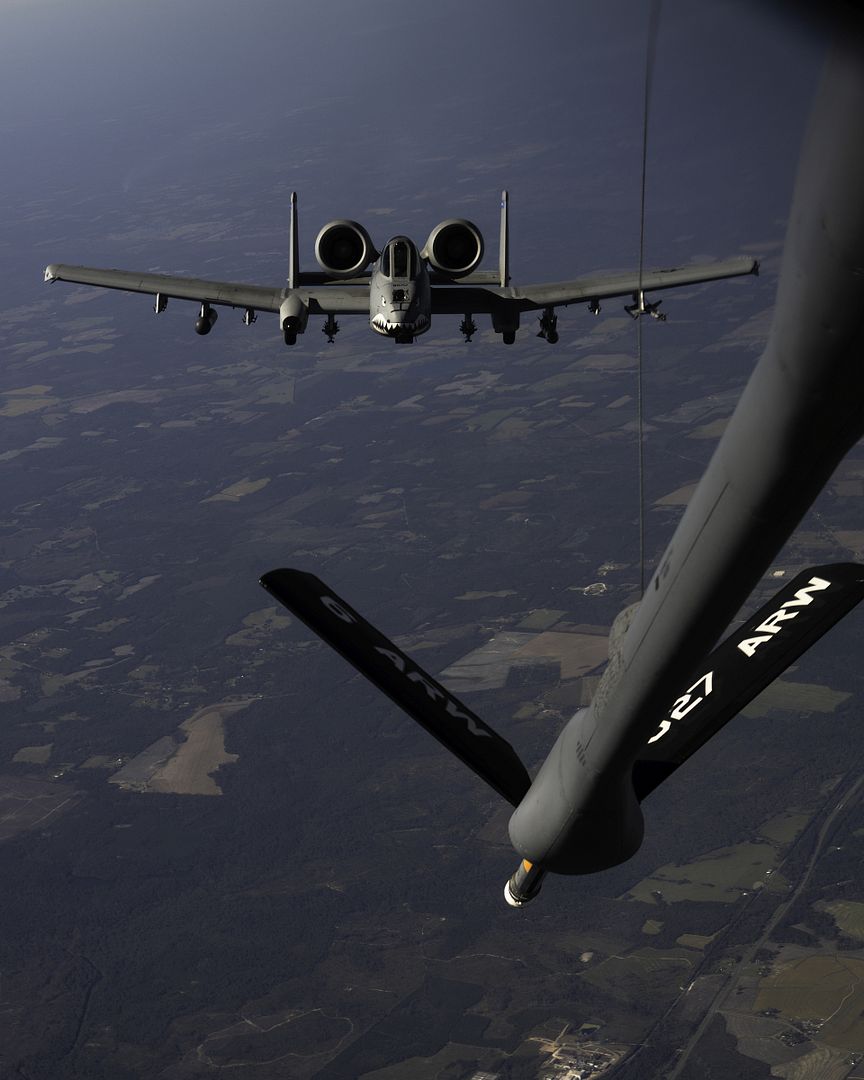
A U.S. Air Force A-10 Thunderbolt II assigned to the 23rd Fighter Group, Moody Air Force Base, Georgia, banks right after receiving fuel from a KC-135 Stratotanker assigned to MacDill AFB over Florida, Oct. 22, 2024. The A-10 can loiter near battle areas for extended periods of time and operate in low ceiling and visibility conditions. The wide combat radius and short takeoff and landing capability permit operations in and out of locations near front lines. (U.S. Air Force photo by Tech. Sgt. Alexander Cook)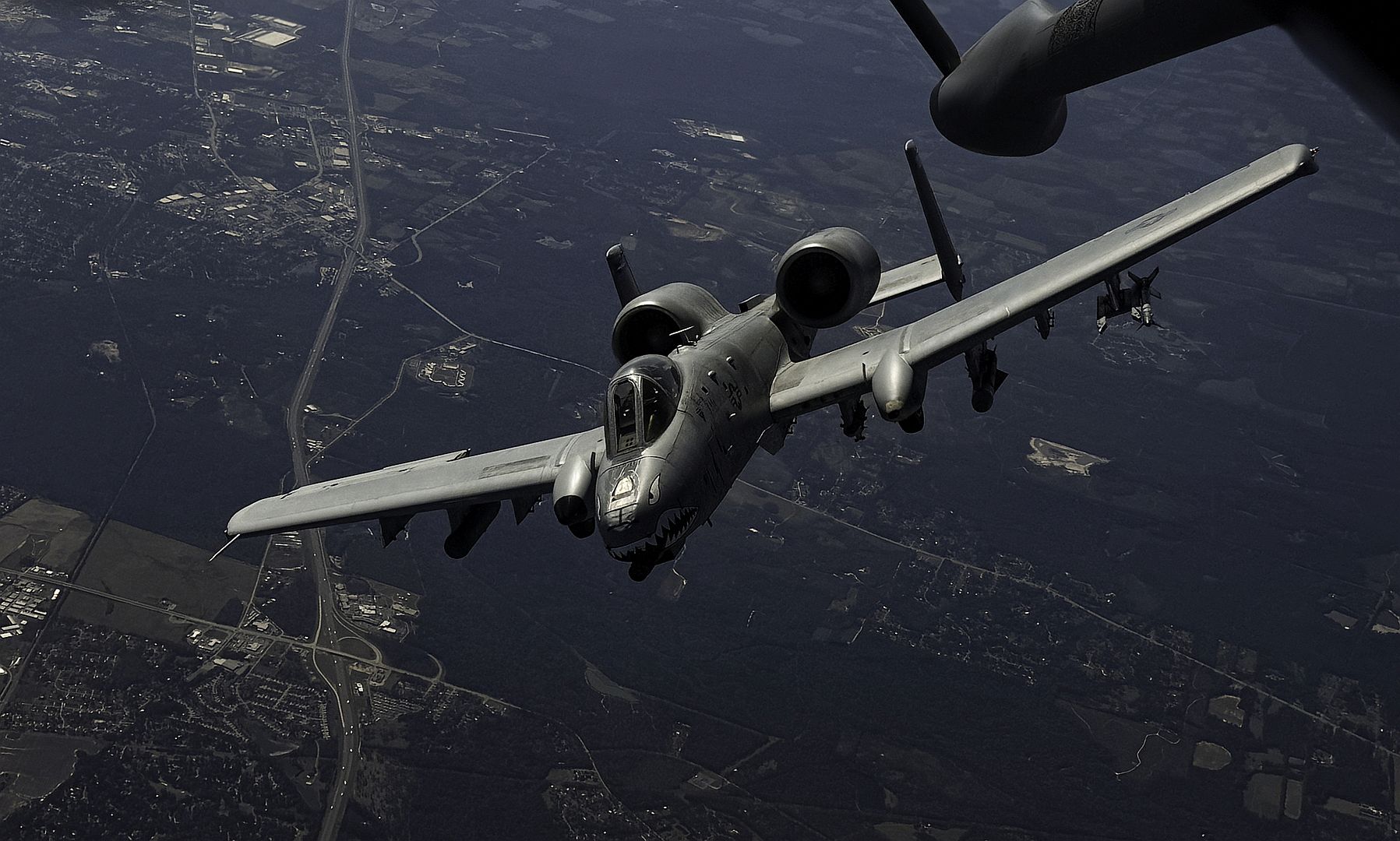
A 114th Fighter Wing F-16 Fighting Falcon takes off during a base tour at Joe Foss Field, SD Oct. 17, 2024. The Air Force ROTC Detachment 780 visited the 114th Fighter Wing, where they toured Security Forces, flightline operations, and Maintenance, ending with an officer panel. (U.S. Air National Guard photo by Staff Sgt. Taylor Solberg)
October 23, 2024
HENSOLDT, Lufthansa Technik Defense and Bombardier Defense today announced that the PEGASUS aircraft has completed its first flight out of Bombardier’s facility in Wichita, Kansas. Led by HENSOLDT, PEGASUS is an airborne missionized platform that will integrate the Kalætron Integral SIGINT system to perform highly critical signal surveillance missions for the German armed forces. As the aircraft officially enters its next phase and is moving one step closer to the Lufthansa Technik Defense-led systems integration and certification, a celebration was held to mark the PEGASUS aircraft’s first flight. Representatives from HENSOLDT, Lufthansa Technik and Bombardier Defense as well as representatives from the German Armed Forces traveled from Germany, Canada, and across the United States to gather in Wichita and celebrate this pivotal program milestone.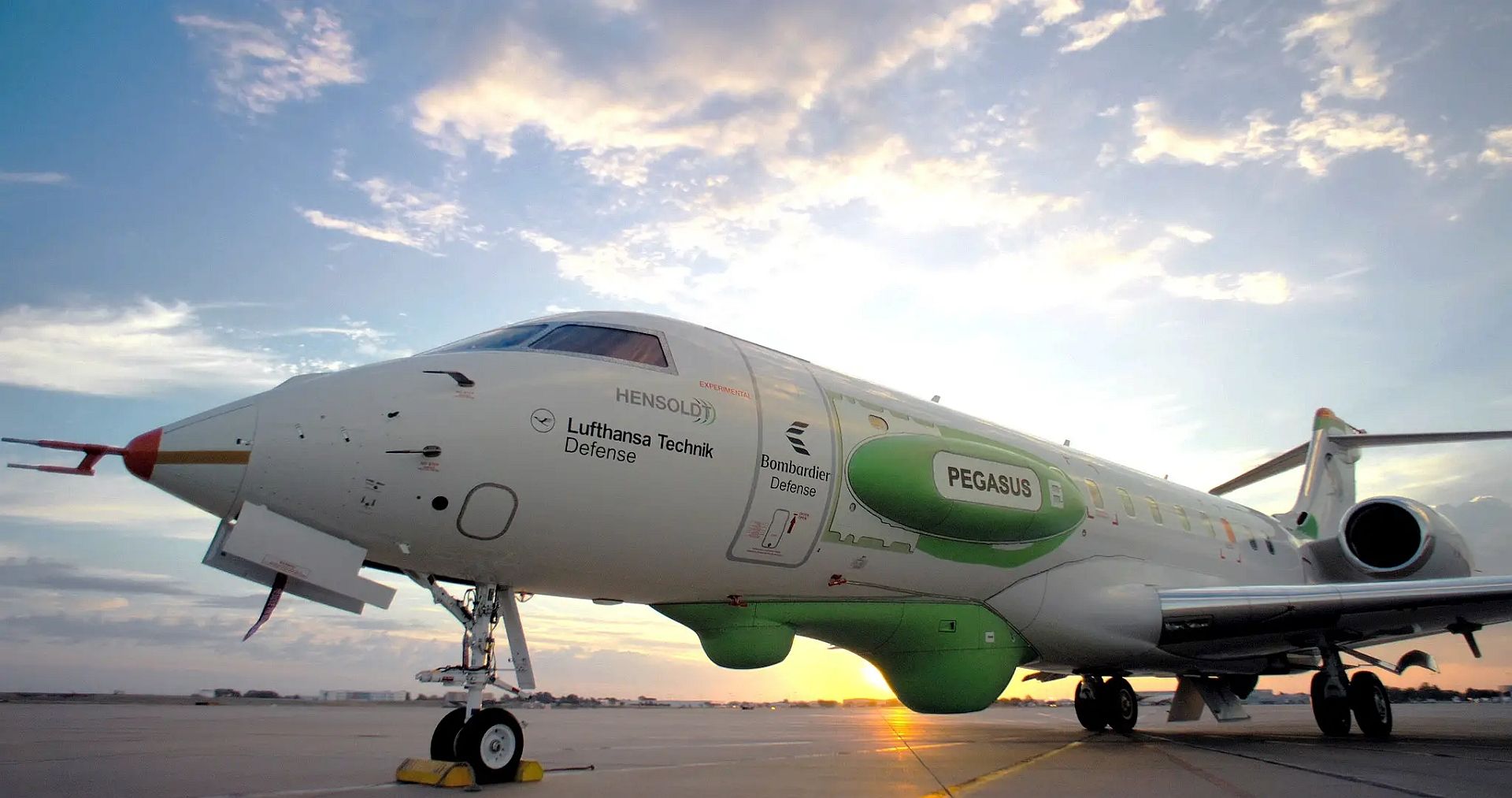
This stage of aircraft testing is conducted by the Bombardier Flight Test Centre (BFTC) team, located in Wichita, where Bombardier’s highly skilled pilots validate key aspects of the program. These successful tests demonstrate the high capability of the Bombardier Global aircraft to complete the German Air Force’s critical missions. This represents a significant milestone for the first of three modified Global 6000 aircraft destined to be delivered to the German Bundeswehr.
“Germany’s next generation signal intelligence aircraft is flying high,” said Steve Patrick, Vice President, Bombardier Defense. “This successful first flight is the result of the strong collaboration and shared knowledge between HENSOLDT, Lufthansa Technik Defense, Bombardier Defense and our suppliers, to get the modified, high-performing Global 6000 aircraft for the PEGASUS program in the air. With flight testing regularly underway from Bombardier’s Wichita base, the aircraft continues to gather essential certification data to improve and perfect the platform before it moves to the next stage.”
“Today marks an important milestone for the PEGASUS programme,” said Dietmar Thelen, Head of Spectrum Dominance Division at HENSOLDT. “With the integration of our Kalætron-Integral system, we are delivering key components that are essential for the ‘reconnaissance of tomorrow’. This achievement underscores the excellent cooperation between HENSOLDT, Lufthansa Technik Defense and Bombardier Defense.”
“Seeing the first PEGASUS aircraft taking to the skies bearing the Lufthansa Technik Defense logo fills me with pride and also joyful anticipation, as it brings us one decisive step closer to welcoming this aircraft back at our site,” says Michael von Puttkamer, Vice President Special Aircraft Services at Lufthansa Technik. “I’d like to congratulate and thank the outstanding Bombardier Defense team for their great performance in reaching this important project milestone, and I look forward to the upcoming flight test activities as well as the ongoing cooperation with HENSOLDT in the subsequent integration and certification of their highly sophisticated signals intelligence system.”
In June 2021, HENSOLDT was awarded the contract to supply an airborne system for electronic signals intelligence on board three Bombardier Global jets based on its Kalætron Integral system. Since that award, HENSOLDT, Lufthansa Technik Defense and Bombardier have collaborated closely on a joint design activity. Extensive structural modification work has been performed to prepare the first aircraft at Bombardier Defense’s U.S. base in Wichita, Kansas, which houses an important contingent of the company’s experienced and skilled defense workforce. This is the site of the initial ground and flight test activities.
Upon completion of initial testing, each aircraft will be transferred to Lufthansa Technik Defense’s facilities in Hamburg for further integration work. The company is moreover responsible for the regulatory certification of PEGASUS on the overall aircraft level. So far, Lufthansa Technik has completed its design activities for the integration of the mission system, the additional civil and military avionics systems as well as the aircraft cabin. The production process of interior parts has also already started in order to ensure the components’ readiness for immediate installation when the aircraft arrives in Hamburg. In the meantime, HENSOLDT has adapted the systems architecture to the operational needs of the German Bundeswehr. The corresponding hardware and software developments are currently in progress, various demonstrations have shown the immense potential and capabilities of the upcoming solution.
HENSOLDT is acting as general contractor and bears overall responsibility for the realization of the project. Lufthansa Technik Defense will act as a subcontractor, procuring the modified aircraft from Bombardier and fitting and integrating the reconnaissance system developed by HENSOLDT into the platform. Many small and medium sized enterprises from all over Germany, Canada and the U.S. are involved in the project as part of the supply chain for all companies bringing PEGASUS to the finish line.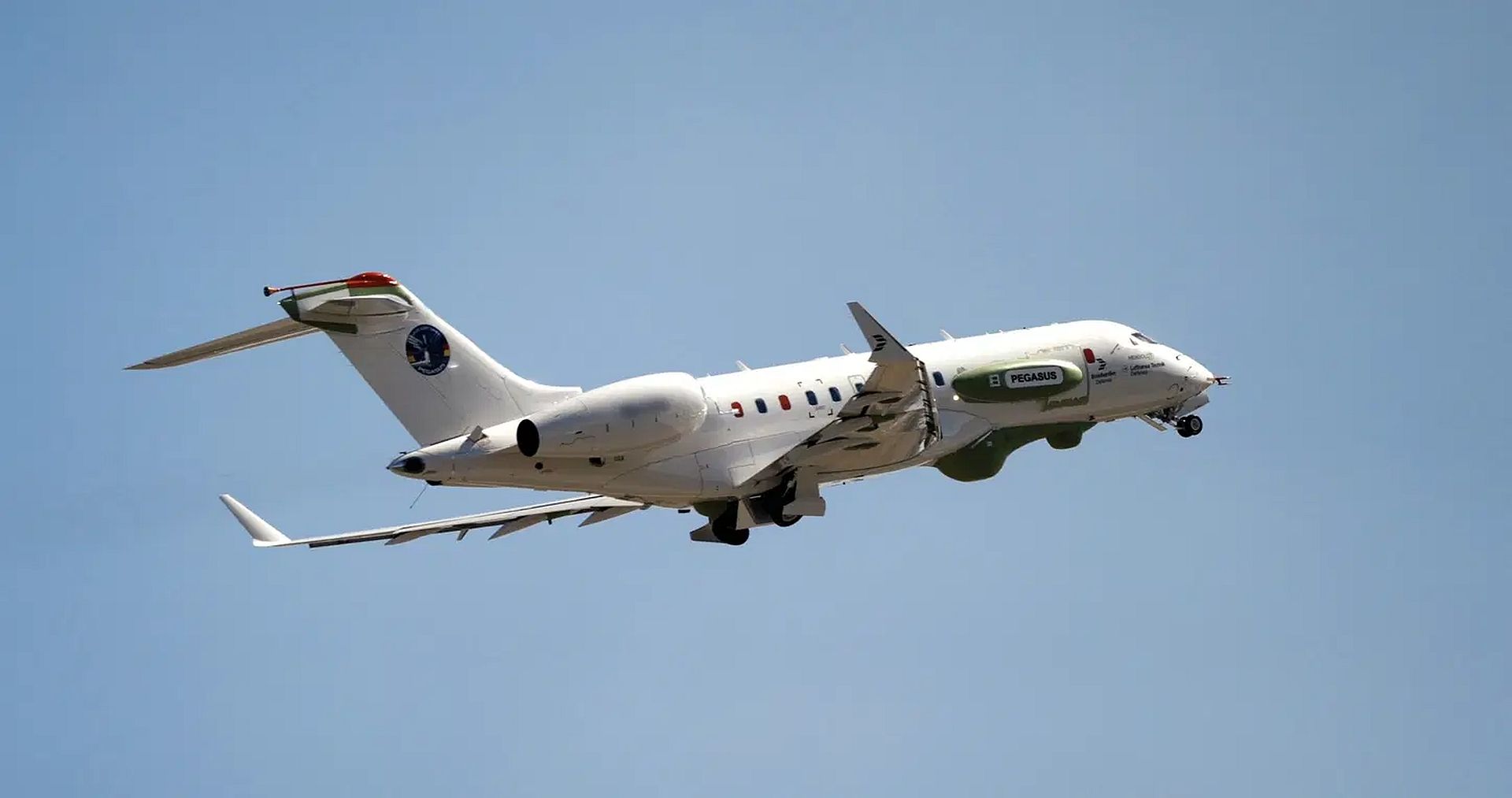
NATO annual nuclear exercise is on
Sixty aircraft from thirteen Allies are participating in NATO’s annual nuclear deterrence exercise, a long-planned, routine training activity that is hosted by a different NATO Ally each year.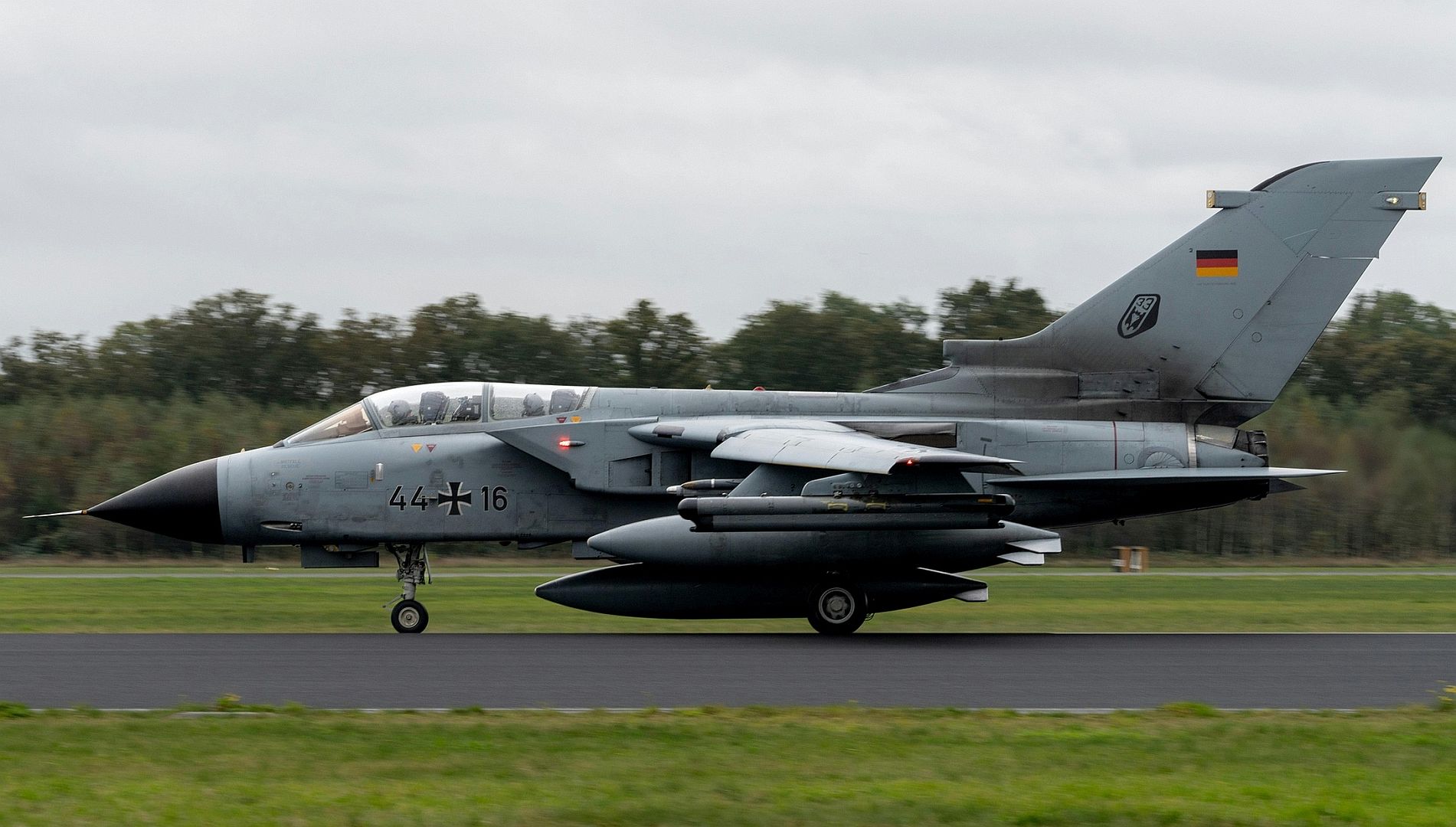
“Nuclear deterrence is the cornerstone of Allied security,” NATO Secretary General Mark Rutte said.
This exercise is an important test of the Alliance's nuclear deterrent and sends a clear message to any adversary that NATO will protect and defend all Allies.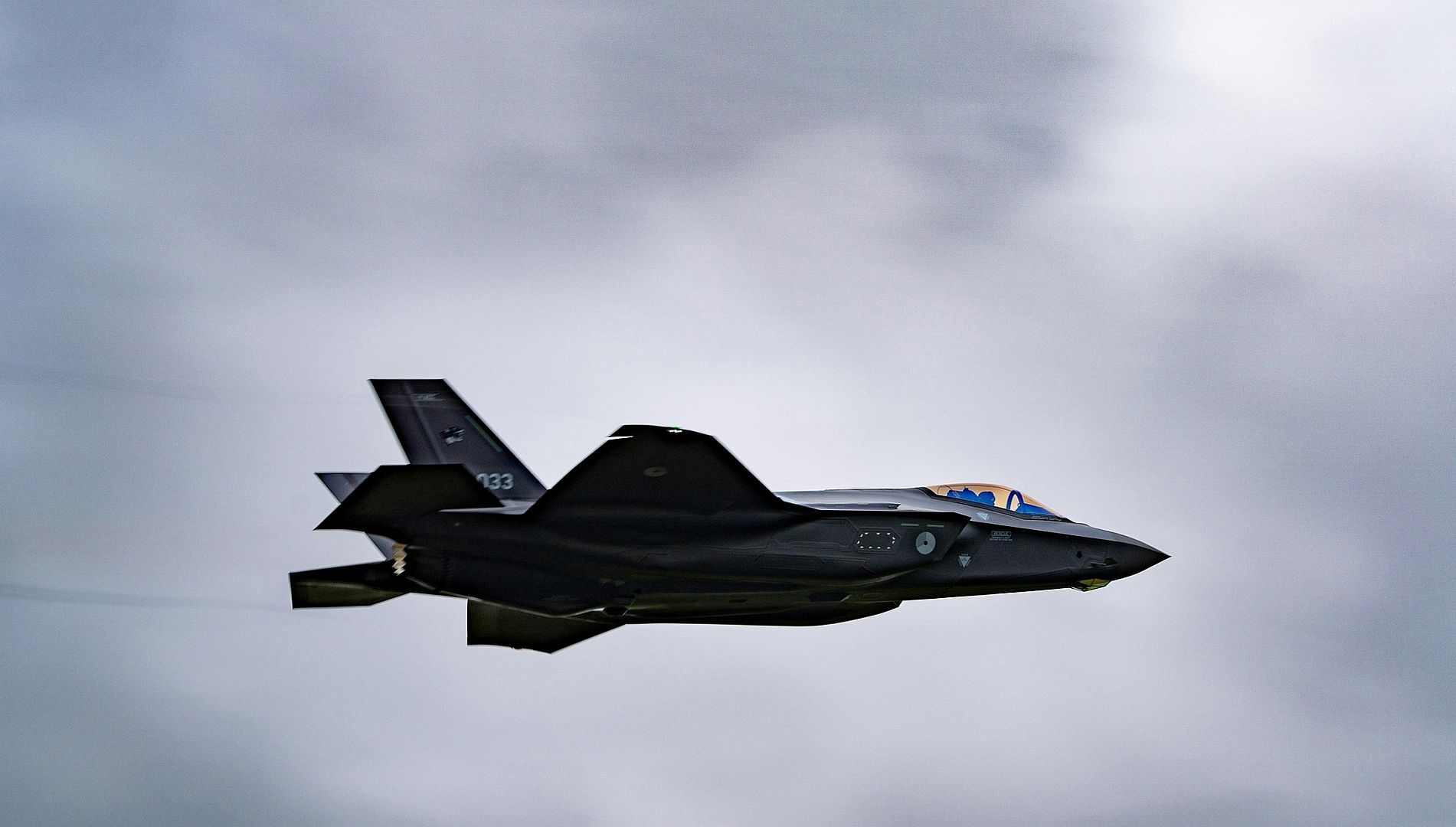
This year’s exercise involves flights mainly over host countries Belgium and the Netherlands and in airspace over Denmark, the United Kingdom and the North Sea
The exercise runs for two weeks and involves fighter jets capable of carrying US nuclear warheads, but does not involve any live weapons
(Photos courtesy of NATO)
-
10 months ago
 Main AdminU.S. Air Force F-16 Fighting Falcon fighter jets assigned to the 157th Fighter Squadron, South Carolina Air National Guard, stand by for the upcoming Weapons System Evaluation Program exercise during Checkered Flag at Tyndall Air Force Base, Florida, Oct. 22, 2024. Checkered Flag is one of the Department of Defense’s largest air-to-air exercises designed to integrate fourth and fifth generation airframes to enhance mobility, deployment and employment capabilities. (U.S. Air National Guard photo by Senior Airman Danielle Dawson)
Main AdminU.S. Air Force F-16 Fighting Falcon fighter jets assigned to the 157th Fighter Squadron, South Carolina Air National Guard, stand by for the upcoming Weapons System Evaluation Program exercise during Checkered Flag at Tyndall Air Force Base, Florida, Oct. 22, 2024. Checkered Flag is one of the Department of Defense’s largest air-to-air exercises designed to integrate fourth and fifth generation airframes to enhance mobility, deployment and employment capabilities. (U.S. Air National Guard photo by Senior Airman Danielle Dawson)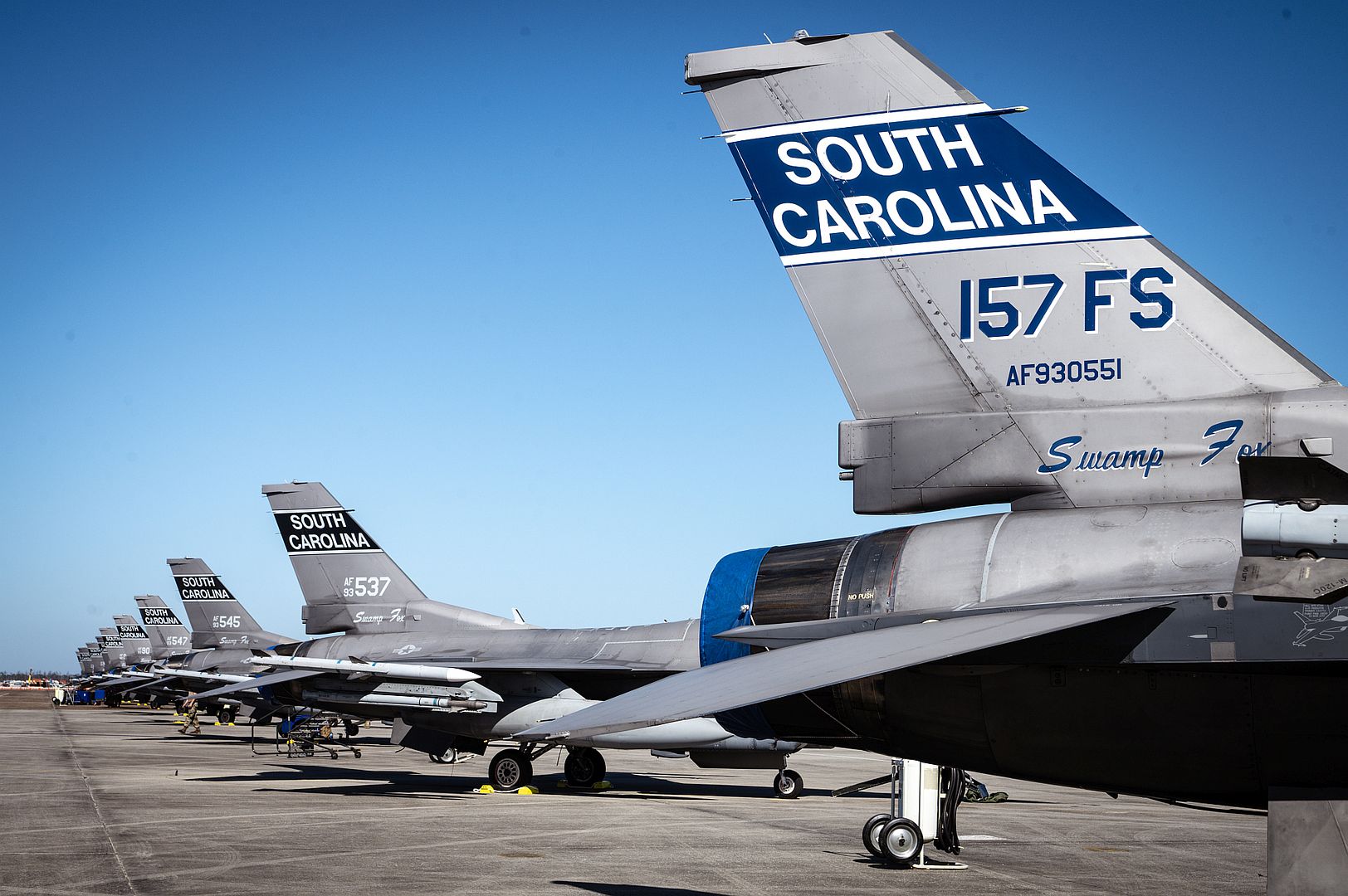
NORTH SEA (Oct. 24, 2024) The Nimitz-class aircraft carrier USS Harry S. Truman (CVN 75), the Royal Navy Queen Elizabeth-class aircraft carrier HMS Prince of Wales (R09), and a Carrier Air Wing (CVW) 1 E/A-18G Growler participate in the NATO-led maritime vigilance activity Neptune Strike 24-2, Oct. 24, highlighting the strike group’s commitment to supporting NATO operations and collective defense of the Alliance. USS Harry S. Truman, the flagship of the Harry S. Truman Carrier Strike Group (HSTCSG), is on a scheduled deployment in the U.S. 6th Fleet area of operations supporting U.S. Naval Forces Europe-Africa to defend U.S., Allied and partner interests. (U.S. Navy photo by Mass Communication Specialist 3rd Class Logan McGuire)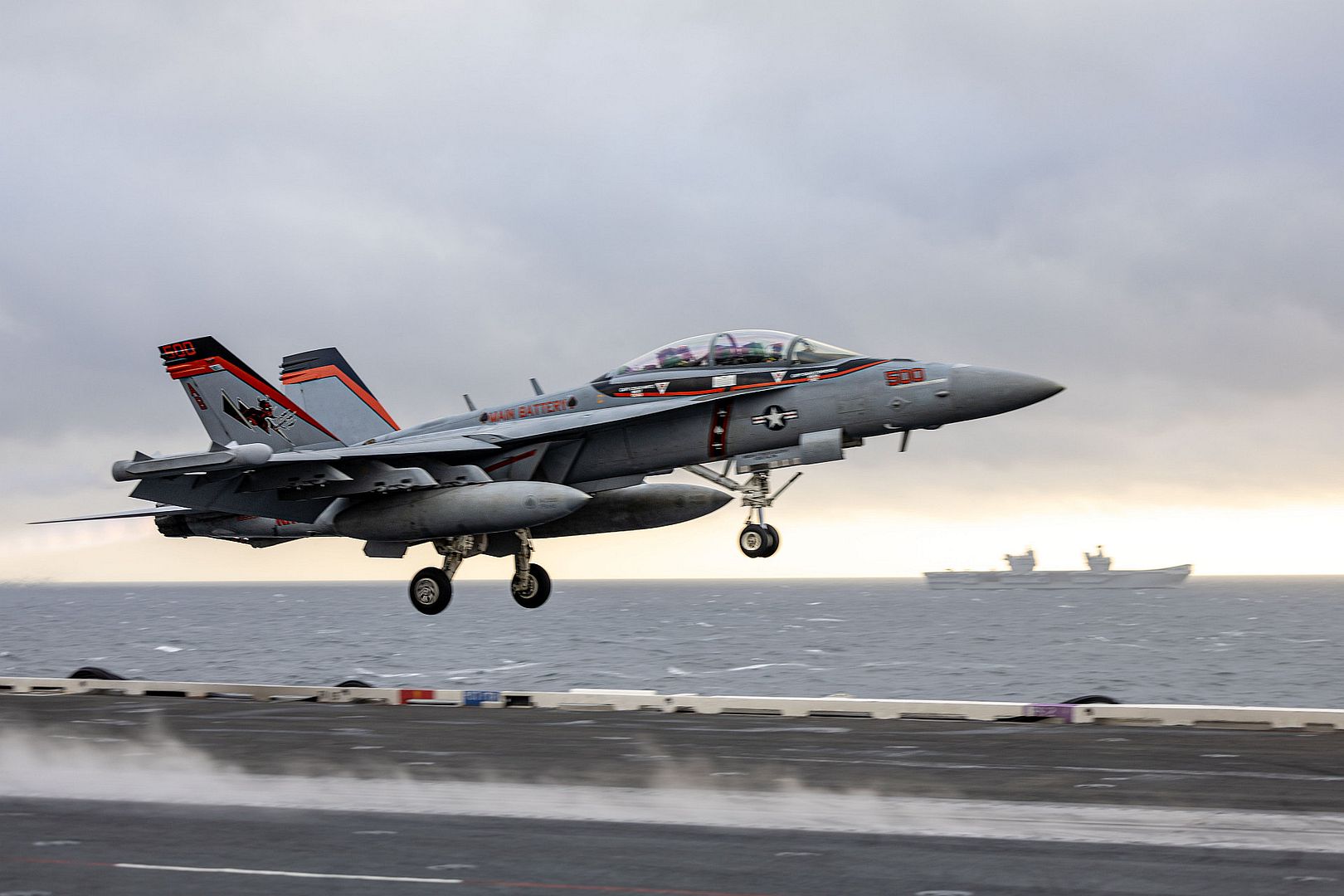
NORTH SEA (Oct. 24, 2024) Carrier Air Wing 1 F/A-18 Super Hornets, an E/A-18G Growler, and Royal Navy F-35B Joint Strike Fighter participate in the NATO-led maritime vigilance activity Neptune Strike 24-2, Oct. 24, highlighting the strike group’s commitment to supporting NATO operations and collective defense of the Alliance. USS Harry S. Truman, the flagship of the Harry S. Truman Carrier Strike Group (HSTCSG), is on a scheduled deployment in the U.S. 6th Fleet area of operations supporting U.S. Naval Forces Europe-Africa to defend U.S., Allied and partner interests. (U.S. Navy photo by Mass Communication Specialist 2nd Class Hunter Day)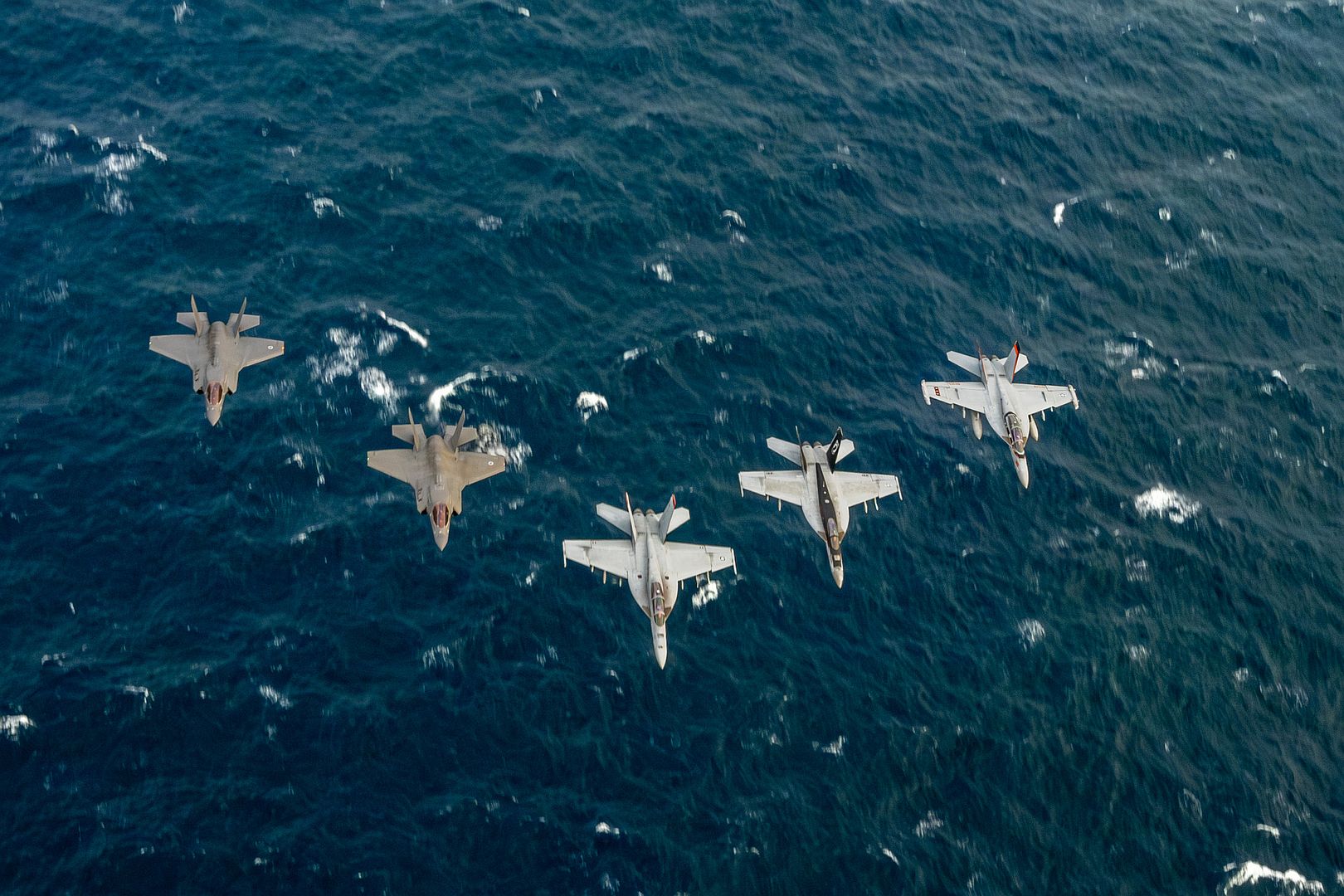
Barcelona, October 24, 2024 – Embraer (NYSE: ERJ; B3: EMB3) has signed a multi-year contract with LOT Polish Airlines for the Pool Program. With this agreement, the airline will receive support for a wide range of repairable components for its three E195-E2s recently leased from Azorra. LOT Polish Airlines is one of the largest E-Jets operators worldwide, with 47 aircraft manufactured by Embraer in its fleet. Currently, Pool Program supports more than 60 airlines worldwide.
"We are excited to expand our collaboration with Embraer through the Pool Program agreement. This partnership is a testament to our commitment to operational excellence and efficiency as we continue to grow our fleet with the E195-E2 aircraft. Having Embraer’s robust support network behind us ensures that we can provide our passengers with the reliability and quality they expect from LOT Polish Airlines. This agreement is not only a continuation of our long-standing relationship with Embraer but also another step in optimizing our fleet maintenance and operational capabilities,” says Krzysztof Krolak,
Vice President of Technical Operations, LOT Polish Airlines.
“We are very pleased to sign a Pool Program agreement with LOT Polish Airlines. The company is growing its E2 footprint along with our services, which shows that we are on the right path to support the aircraft operation and maintain the readiness of its fleet. LOT was the first operator of the E-Jets in 2004, and it is an honor to keep advancing in our long-term relationship,” says Carlos Naufel, CEO and President, Embraer Services & Support.
Embraer provides support to airlines worldwide, with its technical expertise and vast component services network. The results are significant savings in repair and inventory carrying costs and a reduction in warehousing space and resources required for repair management, while ultimately providing guaranteed performance levels. Embraer Services & Support’s portfolio offers a wide range of competitive solutions designed for each customer to support the growing fleet of Embraer aircraft worldwide and deliver the best after-sales experience in the global aerospace industry.
Barcelona, October 24, 2024 – Embraer (NYSE: ERJ; B3: EMB3) has signed a multi-year contract with LOT Polish Airlines for the Pool Program. With this agreement, the airline will receive support for a wide range of repairable components for its three E195-E2s recently leased from Azorra. LOT Polish Airlines is one of the largest E-Jets operators worldwide, with 47 aircraft manufactured by Embraer in its fleet. Currently, Pool Program supports more than 60 airlines worldwide.
-
10 months ago
 Main AdminA U.S. Air Force F-22 Raptor from the 1st Fighter Wing, Joint Base Langley-Eustis, Virginia, takes off for a training flight during Checkered Flag 25-1 at Tyndall Air Force Base, Florida, Oct. 23, 2024. Checkered Flag is a large-force aerial exercise held at Tyndall which fosters readiness and interoperability through the incorporation of 4th and 5th generation aircraft during air-to-air combat training. (U.S. Air Force photo by Senior Airman Stefan Alvarez)
Main AdminA U.S. Air Force F-22 Raptor from the 1st Fighter Wing, Joint Base Langley-Eustis, Virginia, takes off for a training flight during Checkered Flag 25-1 at Tyndall Air Force Base, Florida, Oct. 23, 2024. Checkered Flag is a large-force aerial exercise held at Tyndall which fosters readiness and interoperability through the incorporation of 4th and 5th generation aircraft during air-to-air combat training. (U.S. Air Force photo by Senior Airman Stefan Alvarez)
A U.S. Air Force F-16C Fighting Falcon from the 138th Fighter Wing, Tulsa Air National Guard Base, Oklahoma, takes off for a training flight during Checkered Flag 25-1 at Tyndall Air Force Base, Florida, Oct. 23, 2024. Checkered Flag provides an opportunity for multiple airframes to meet National Defense Strategy objectives by building resilient joint forces capable of projecting air power across the globe. (U.S. Air Force photo by Senior Airman Stefan Alvarez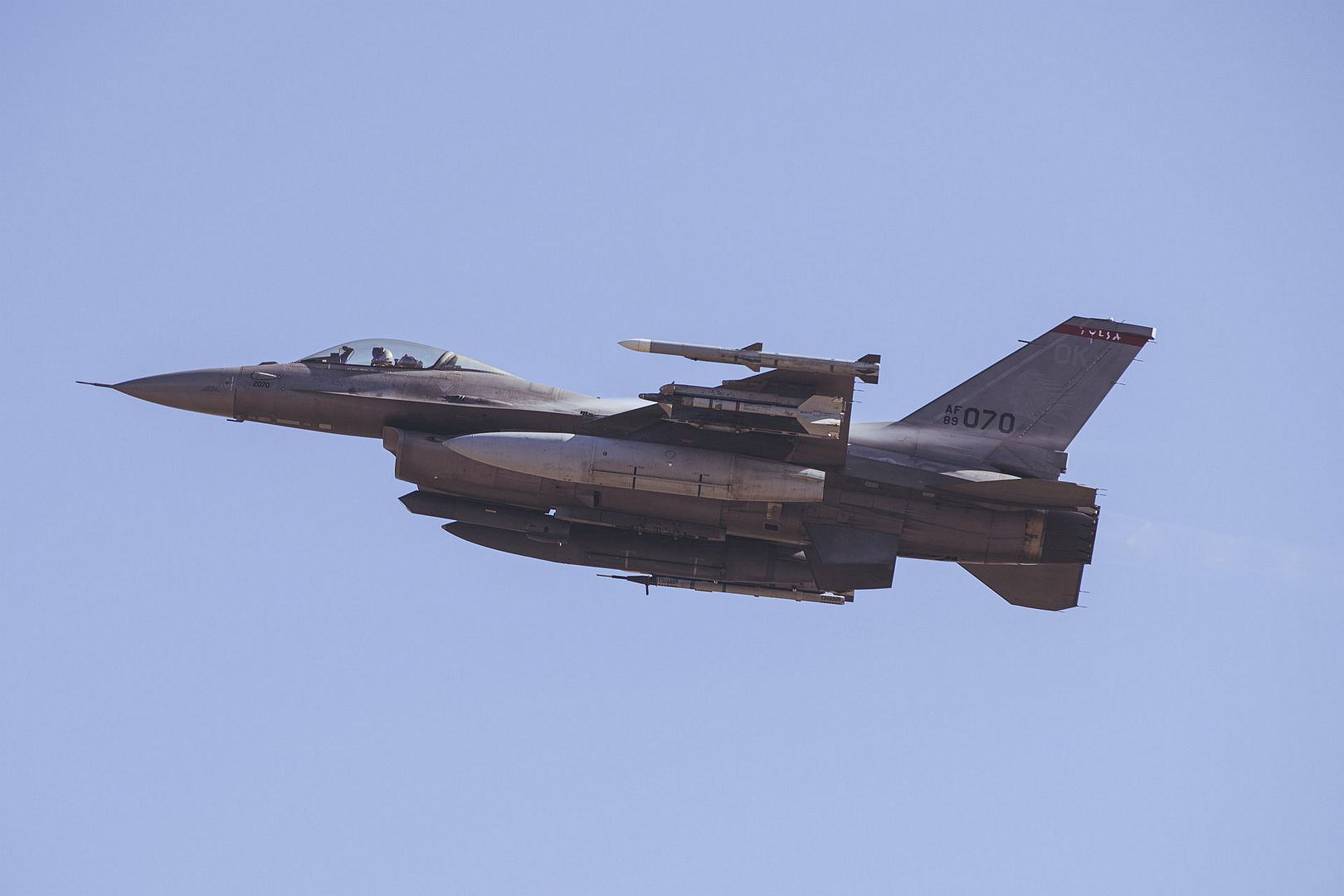
A U.S. Air Force F-16D Fighting Falcon from the 20th Fighter Wing, Shaw Air Force Base, South Carolina, takes off for a training flight during Checkered Flag 25-1 at Tyndall AFB, Florida, Oct. 23, 2024. Checkered Flag occurs twice every year and is one of the largest aerial exercises within the Department of Defense, consisting of various 4th and 5th generation aircraft. (U.S. Air Force photo by Senior Airman Stefan Alvarez)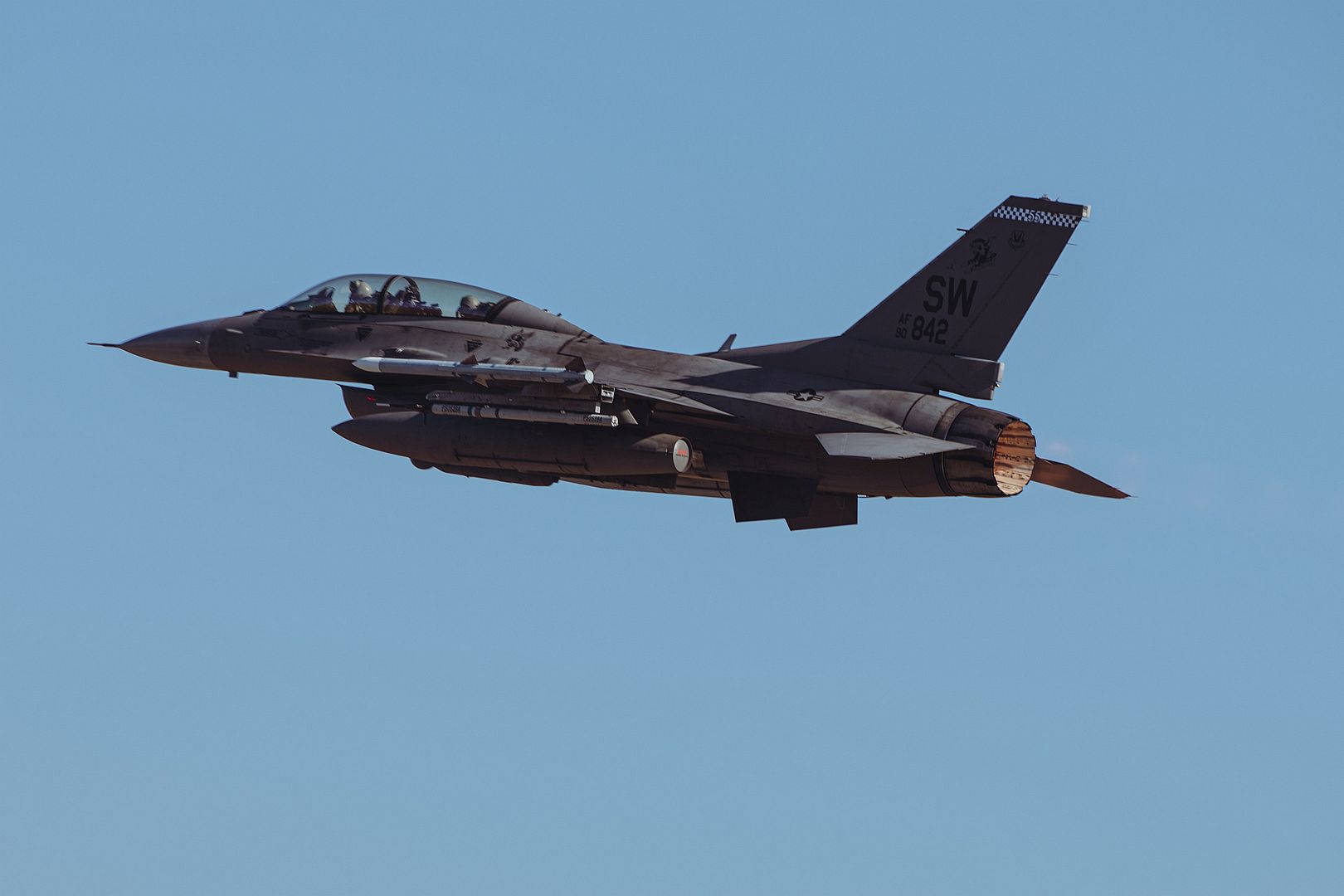
A U.S. Marine Corps F-35C Lightning II from Marine Fighter Attack Squadron 311, Marine Corps Air Station Oceana, California, takes off for a training flight during Checkered Flag 25-1 at Tyndall Air Force Base, Florida, Oct. 23, 2024. Checkered Flag occurs twice every year and is one of the largest aerial exercises within the Department of Defense, consisting of various 4th and 5th generation aircraft. (U.S. Air Force photo by Senior Airman Stefan Alvarez)
A 114th Aircraft Maintenance Squadron crewchief, waits to marshall a F-16 Fighting Falcon at Joe Foss Field, South Dakota Oct. 23, 2024. Personnel from operations, maintenance, and pilots must conduct evening operations in order to fulfill U.S. Air Force requirements to maintain their mission readiness. (U.S. Air National Guard photo by Staff Sgt. Taylor Solberg)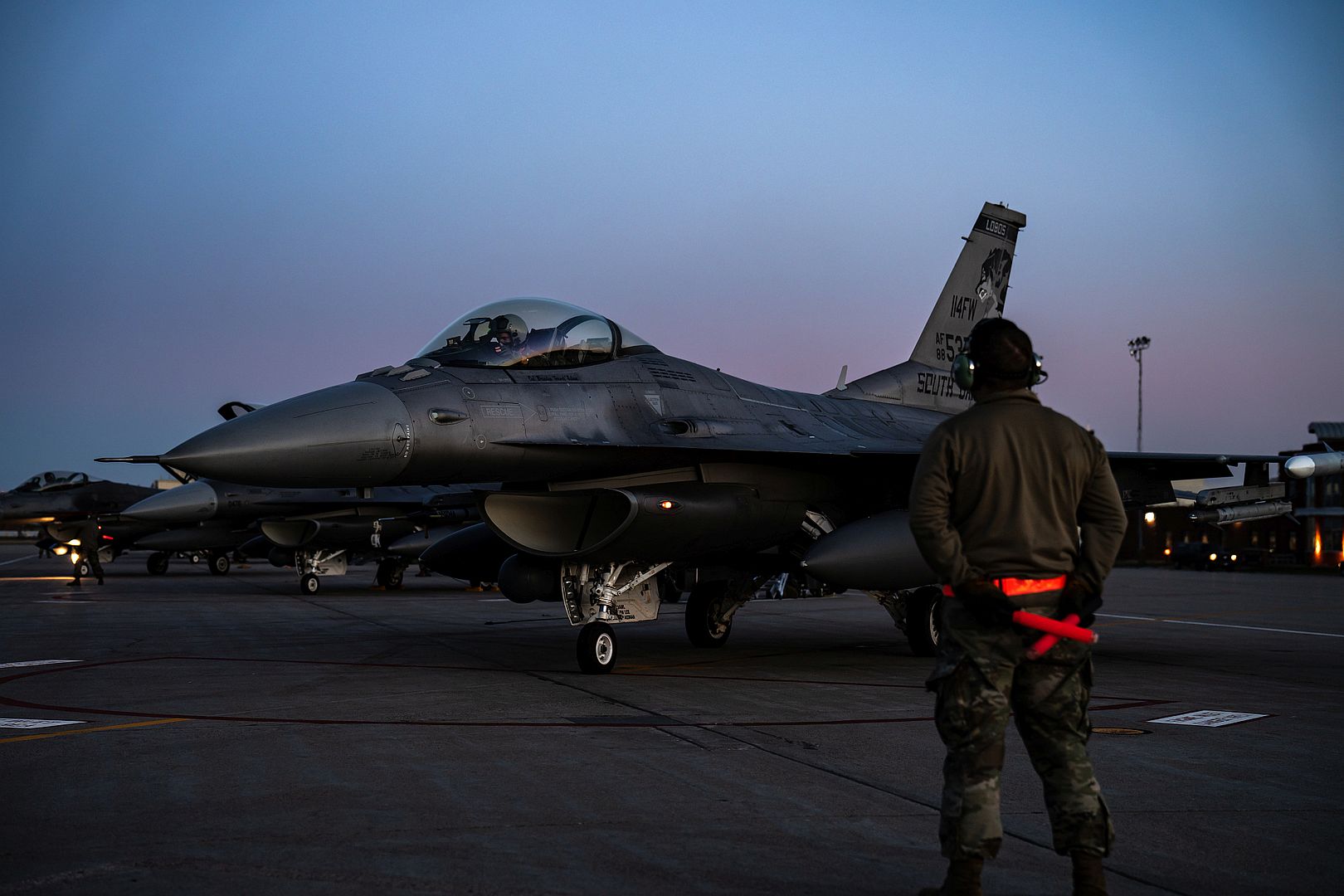
ATLANTIC OCEAN (OCT. 23, 2024) Sailors aboard the world’s largest aircraft carrier, USS Gerald R. Ford (CVN 78) conduct flight operations in the Atlantic Ocean, October 23, 2024. USS Gerald R. Ford, the flagship of the Gerald R. Ford Carrier Strike Group, is currently underway in the U.S. 2nd Fleet area of operations, conducting Surface Warfare Advanced Tactical training (SWATT). SWATT is the surface force’s premiere advanced tactical training exercise that increases warfighting capability and tactical proficiency across all domains. (U.S. Navy Photo by Mass Communication Specialist Seaman Hector Rodriguez)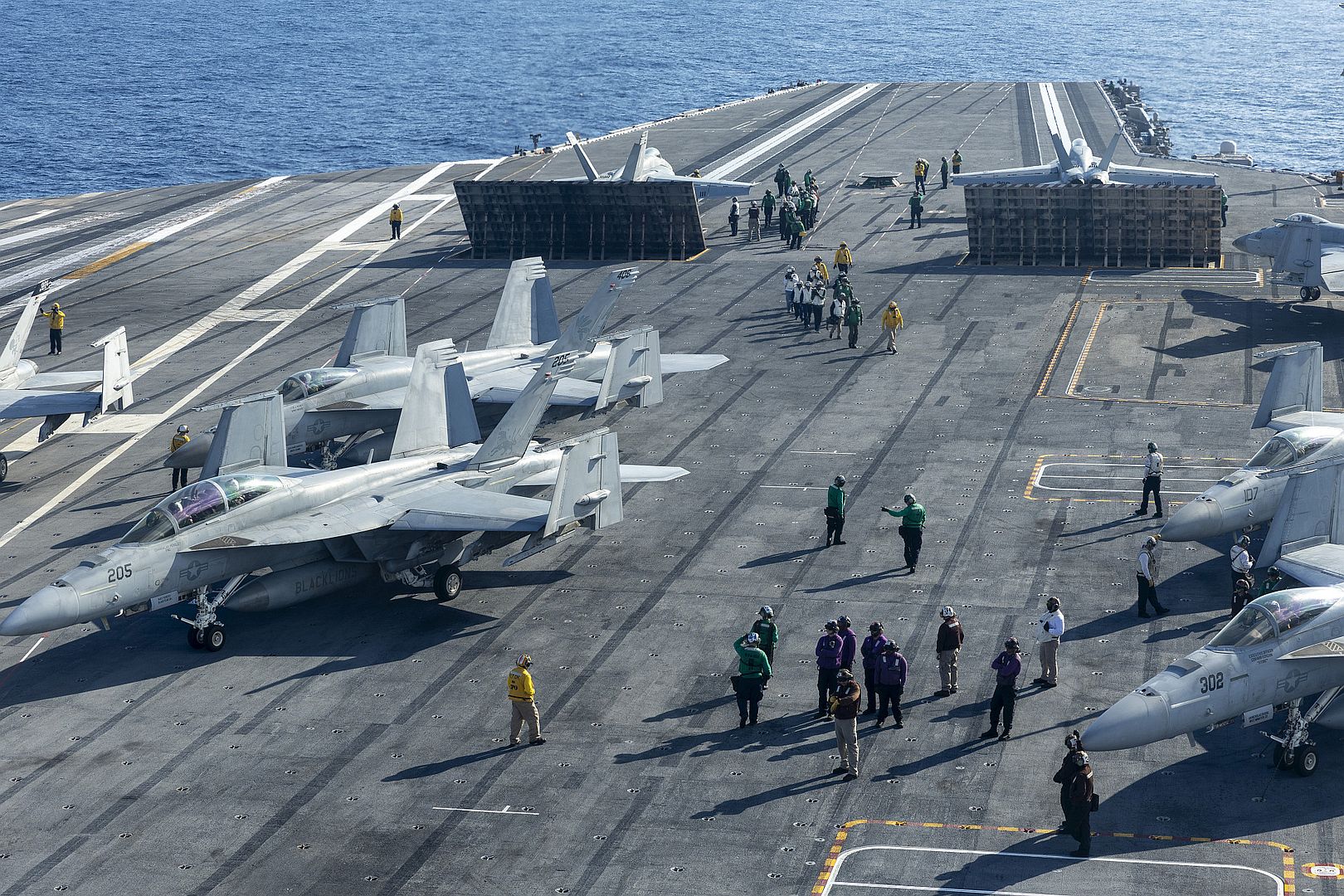
A WC-135 Constant Phoenix aircraft, assigned to the 55th Wing, approaches a KC-135 Stratotanker aircraft, assigned to the 92nd Air Refueling Wing, to receive in-flight refueling over Montana, Oct. 17, 2024. The WC-135 samples gaseous debris in the atmosphere to detect radioactivity in support of the Limited Nuclear Test Ban Treaty of 1963, which prohibits any nation from above ground nuclear weapons testing. The KC-135’s aerial refueling capability enables aircraft like the WC-135 to extend their mission range and duration to maximize efficiency. During this flight, both KC-135 and WC-135 pilots completed training requirements to maintain mission readiness. (U.S. Air Force photo by Staff Sgt. Ryan Gomez)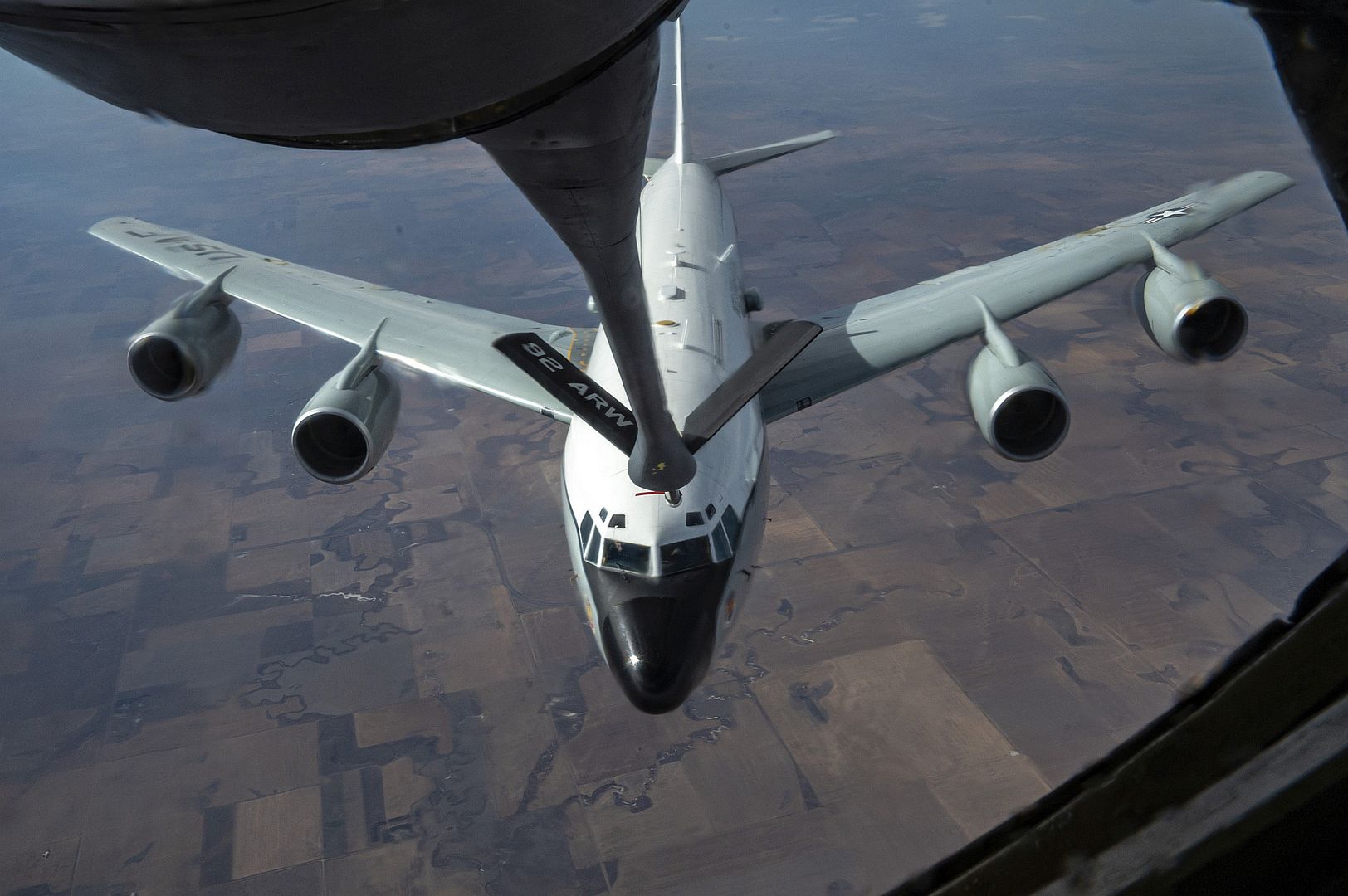
GREENVILLE, S.C, Oct. 24, 2024 – Lockheed Martin [NYSE: LMT] today announced the successful flight of the first Bulgarian F-16 Block 70.
The flight occurred Oct. 22 at 9:30 a.m. EDT at Lockheed Martin’s production facility in Greenville, South Carolina, with test pilot Charles "Seeker" Hoag successfully conducting multiple system tests to validate performance and supersonic capabilities during the flight.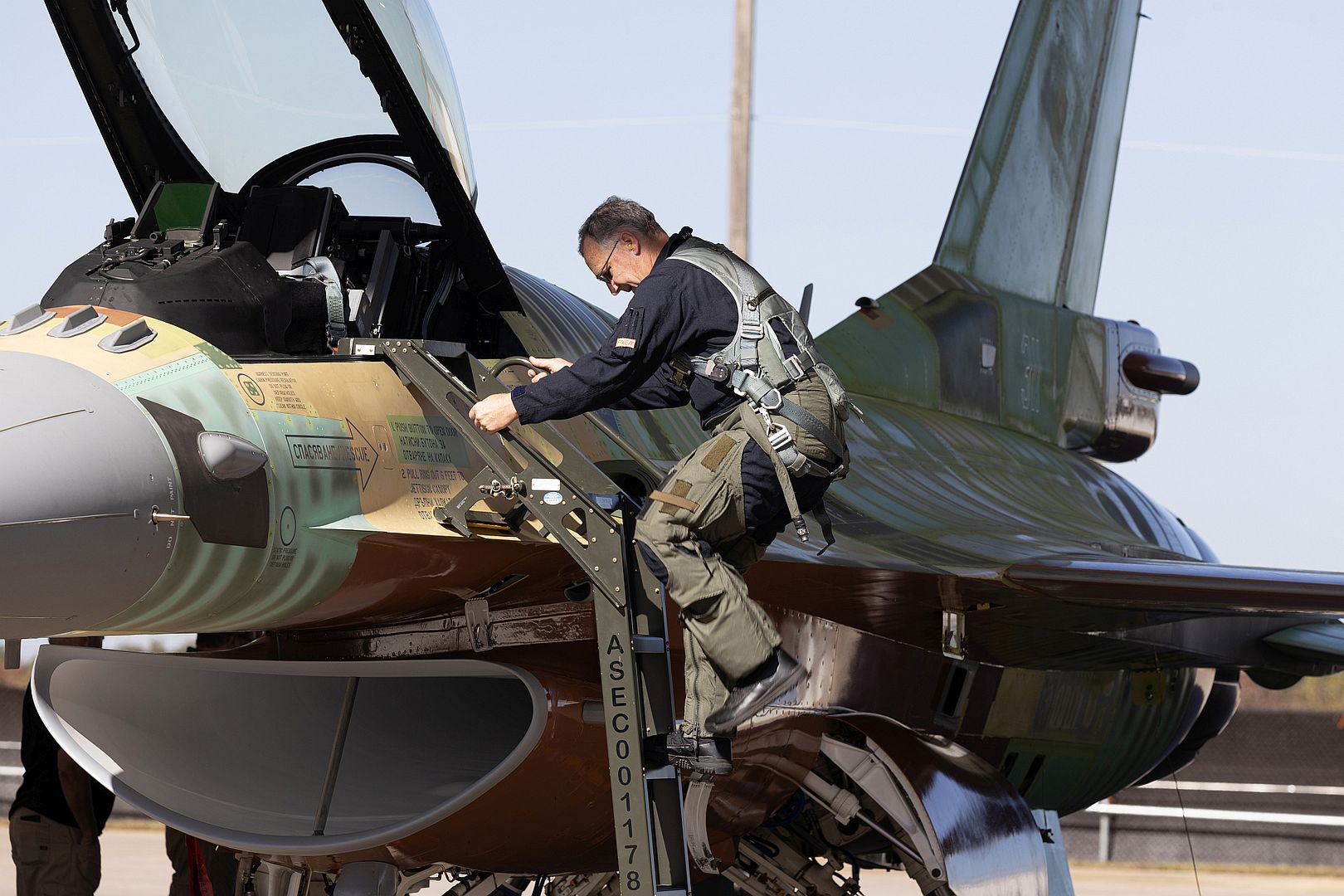
Bulgaria will be the second European country to receive the F-16 Block 70.
This F-16 Block 70 jet will be the first of 16 to be delivered to Bulgaria. Bulgaria signed its first Letter of Acceptance (LOA) for eight F-16s in 2019 and signed a second LOA for an additional eight jets in 2022.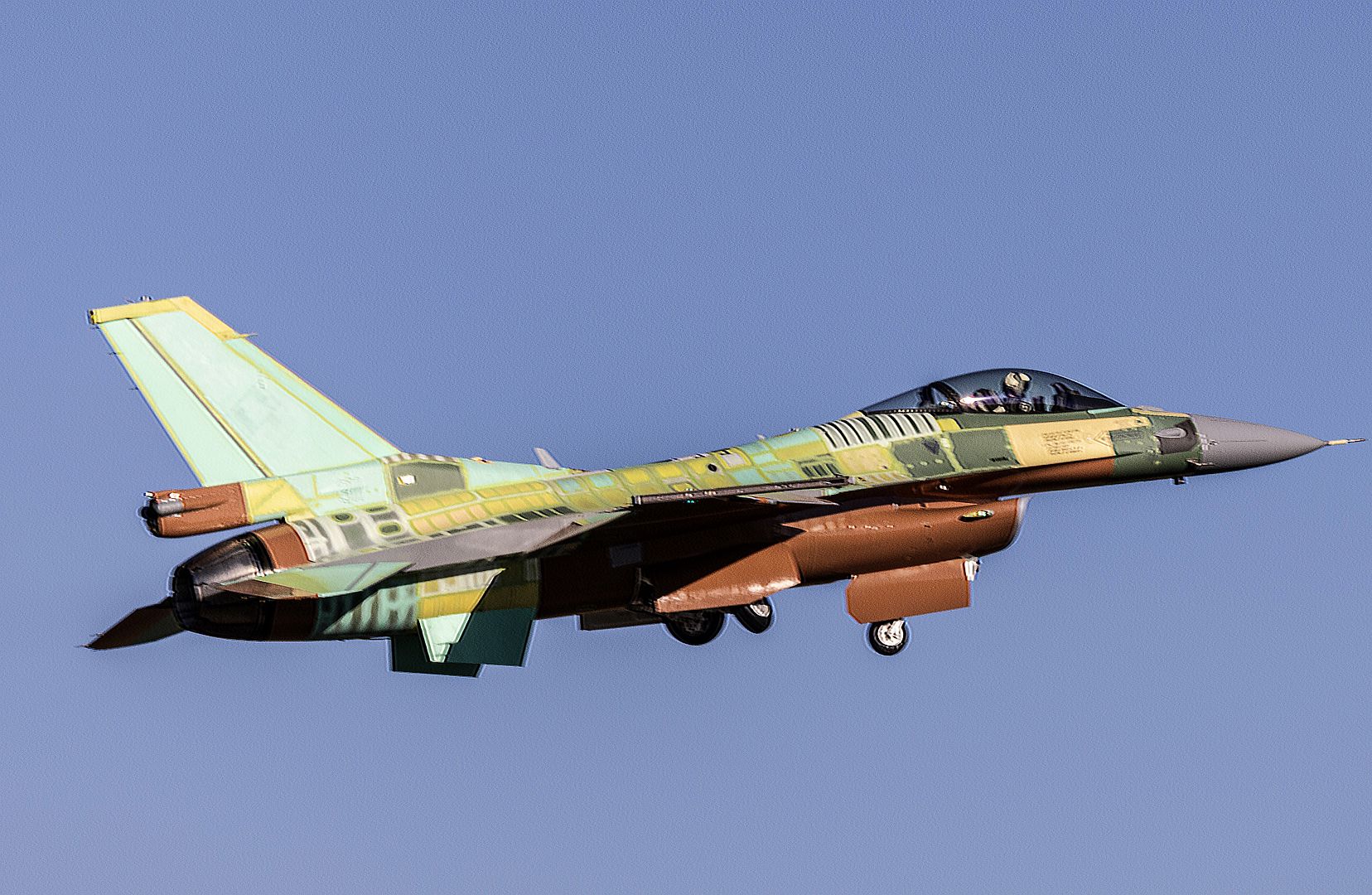
“The F-16 has proven its 21st Century Security® capabilities time and again,” said OJ Sanchez, vice president and general manager, Integrated Fighter Group at Lockheed Martin. “With the F-16 Block 70, the Bulgarian Air Force will be well-equipped to secure its borders and partner with U.S, European and NATO allies.”
Sanchez added: “The F-16 was integrated by design from the beginning as a versatile, adaptable and scalable aircraft. Whether it be through air policing or offensive missions if required, the F-16 is strengthening NATO partnerships and will continue to do so for years to come.”
The F-16 is currently operated by 27 countries, with six countries selecting the F-16 Block 70/72 version for their fleets.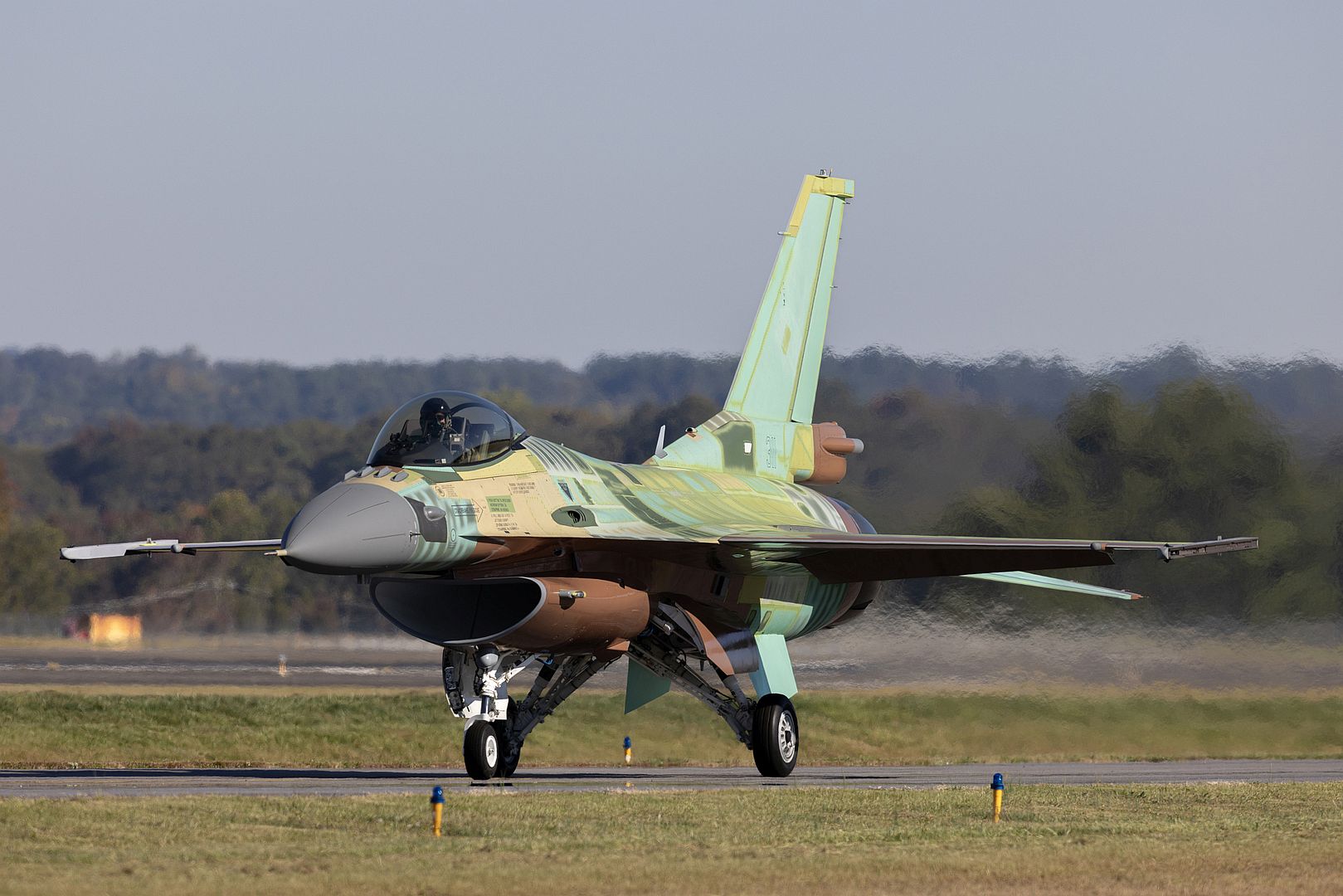
Prague, Czech Republic, October 25, 2024 – Today, the Czech Ministry of Defense (MoD) signed a contract for the acquisition of two Embraer C-390 Millennium multi-mission transport aircraft.
These two NATO (North Atlantic Treaty Organization) standard aircraft will modernize and enhance the operational capabilities of the Czech Air Force. They will be able to perform a wide range of missions, such as tactical transport of troops, vehicles, and equipment, medical evacuation, firefighting, disaster management, humanitarian support, and air-to-air refueling.
This contract not only strengthens the Czech Air Force but also positively impacts the local aerospace industry, which will see a significant increase in its share of production for the program.
"Past and present history clearly shows us that the military needs to be able to transport people and heavier cargo over longer distances. Evacuations from Afghanistan and Sudan are clear evidence of this. I am therefore very pleased that we have managed to acquire aircraft for our Air Force that are capable of performing these tasks," said Defence Minister Jana Černochová.
“This order from the Czech Republic, a NATO member, is an invaluable mark of confidence for Embraer. It encourages us to implement the best technology to provide our customers with the operational capabilities needed to accomplish the most demanding missions. With this order, Embraer will reinforce its ties with the local Czech aerospace industry, recognized for its expertise and product quality for decades,” said Bosco Da Costa Junior, President & CEO of Embraer Defense & Security.
In addition to the aircraft, Embraer will provide a comprehensive training and support package for the Czech Air Force to ensure the smooth integration of the aircraft into their fleet.
With a maximum payload of 26 tons, a top speed of 470 knots, and state-of-the-art technology, the C-390 is the leading aircraft in its class. Its powerful engines, large cargo hold with a rear ramp, and robust landing gear allow it to handle the most demanding missions, including operations from unpaved runways.
The current fleet of C-390 aircraft in service around the world has accumulated more than 15,000 flight hours, with a mission capability rate of 93% and mission completion rates exceeding 99%, demonstrating exceptional reliability in its category. Along with Czech Republic, the C-390 has been selected by the Netherlands, Hungary and Portugal, three NATO members, as well as Austria, Brazil, and South Korea.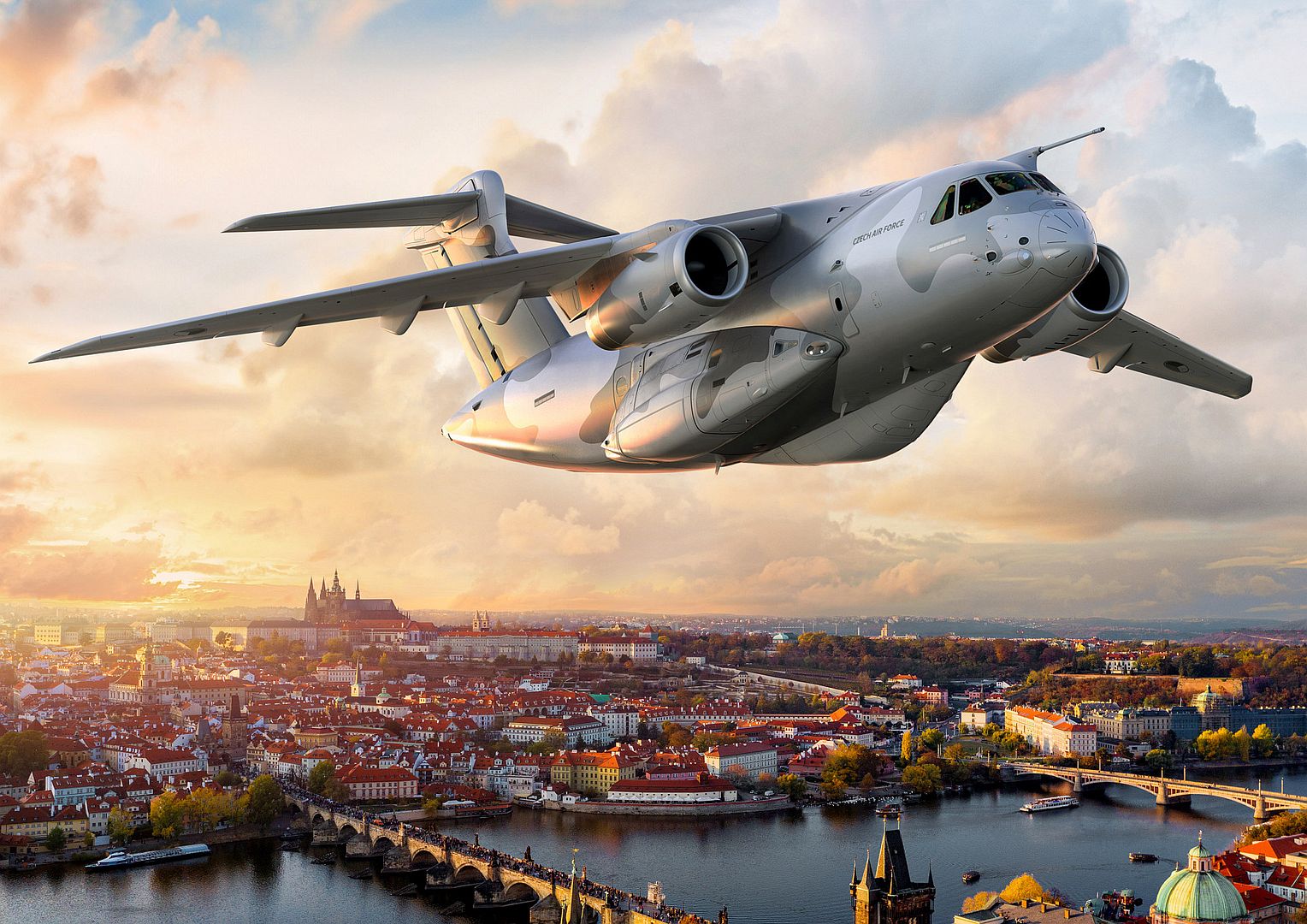
A CC-130HT from RCAF 435 Sqn flew over 55 hours during ex CobraWarrior earlier this month, refuelling Royal Air Force F35-Bs Ilmavoimat - Flygvapnet - Finnish Air Force F/A-18s , and Royal Canadian Air Force CF-188s.
(Photos courtesy of the RCAF)
Post a reply
- Go to Previous topic
- Go to Next topic
- Go to Welcome
- Go to Introduce Yourself
- Go to General Discussion
- Go to Screenshots, Images and Videos
- Go to Off topic
- Go to Works in Progress
- Go to Skinning Tips / Tutorials
- Go to Skin Requests
- Go to IJAAF Library
- Go to Luftwaffe Library
- Go to RAF Library
- Go to USAAF / USN Library
- Go to Misc Library
- Go to The Ops Room
- Go to Made in Germany
- Go to Campaigns and Missions
- Go to Works in Progress
- Go to Juri's Air-Raid Shelter
- Go to Campaigns and Missions
- Go to Works in Progress
- Go to Skinpacks
- Go to External Projects Discussion
- Go to Books & Resources
